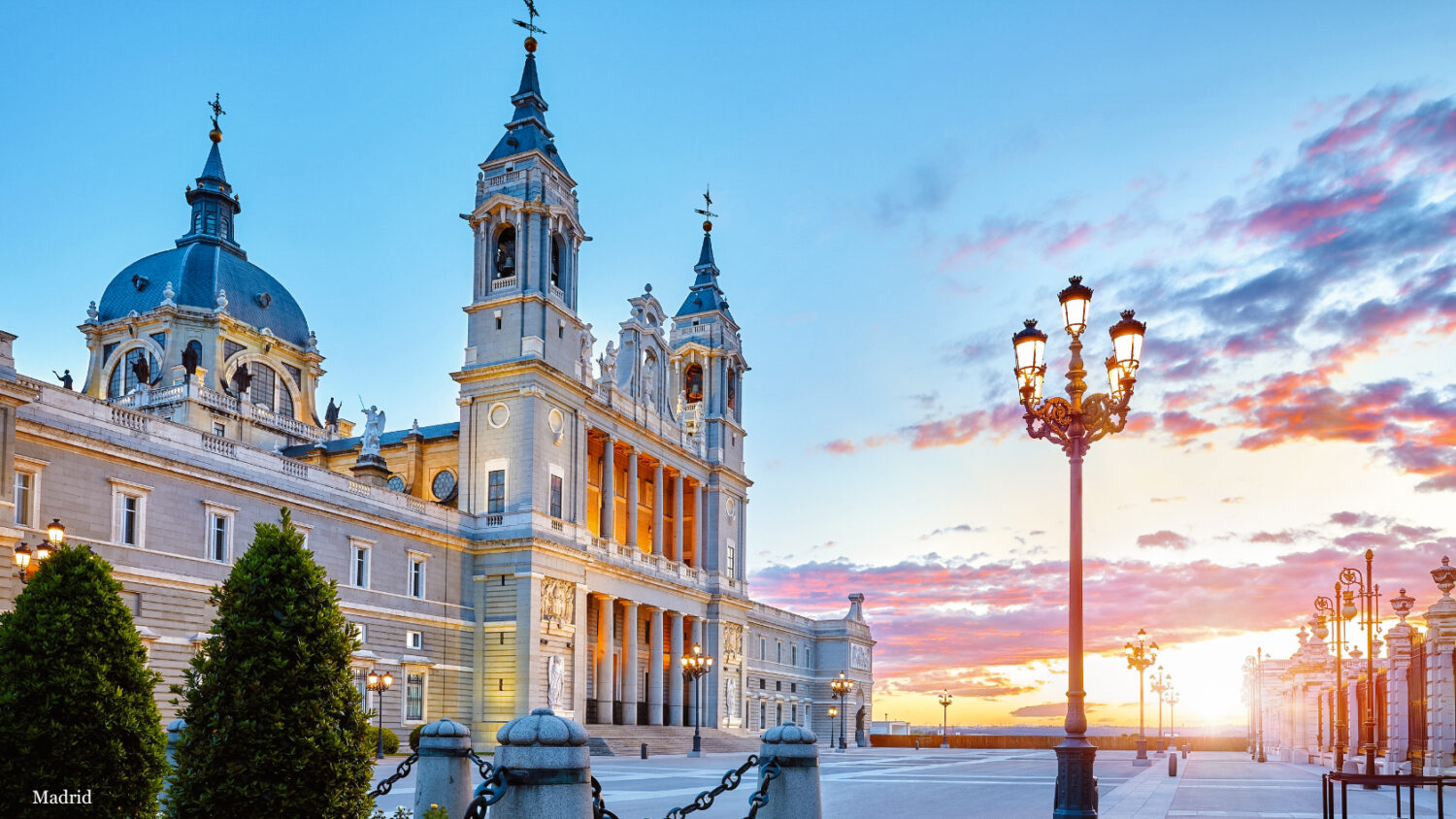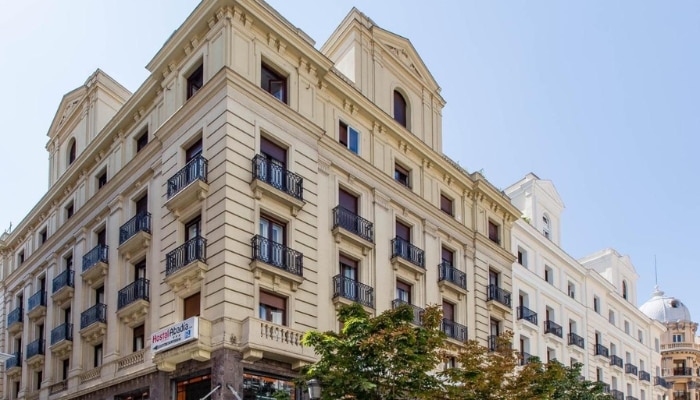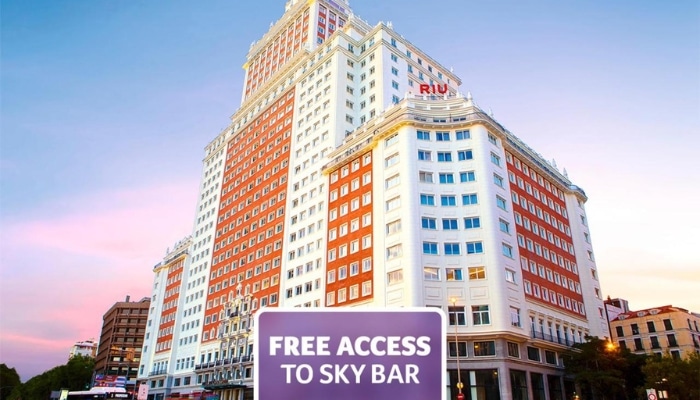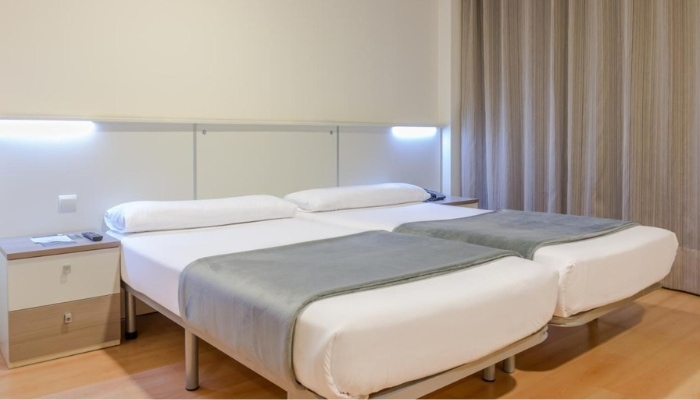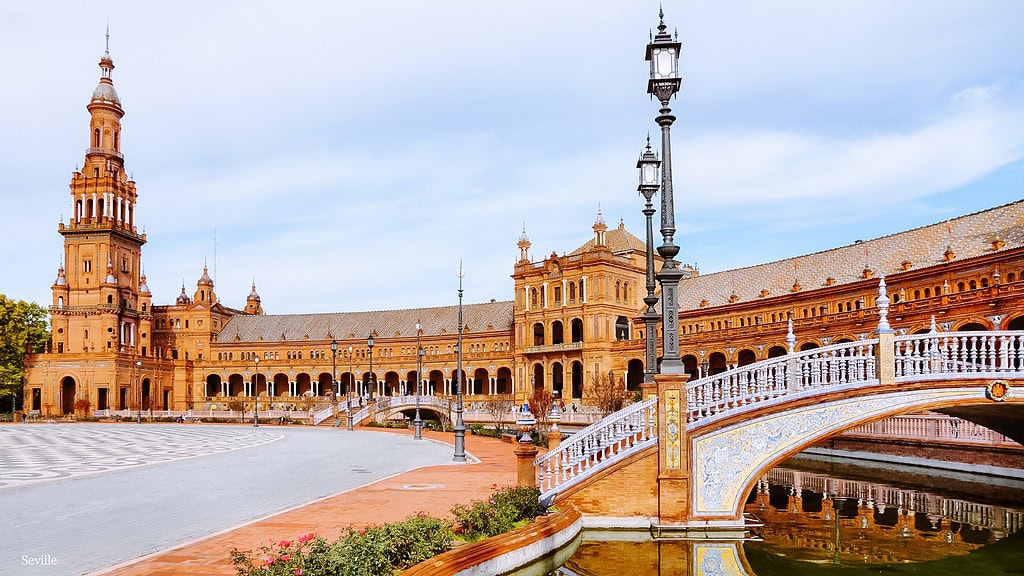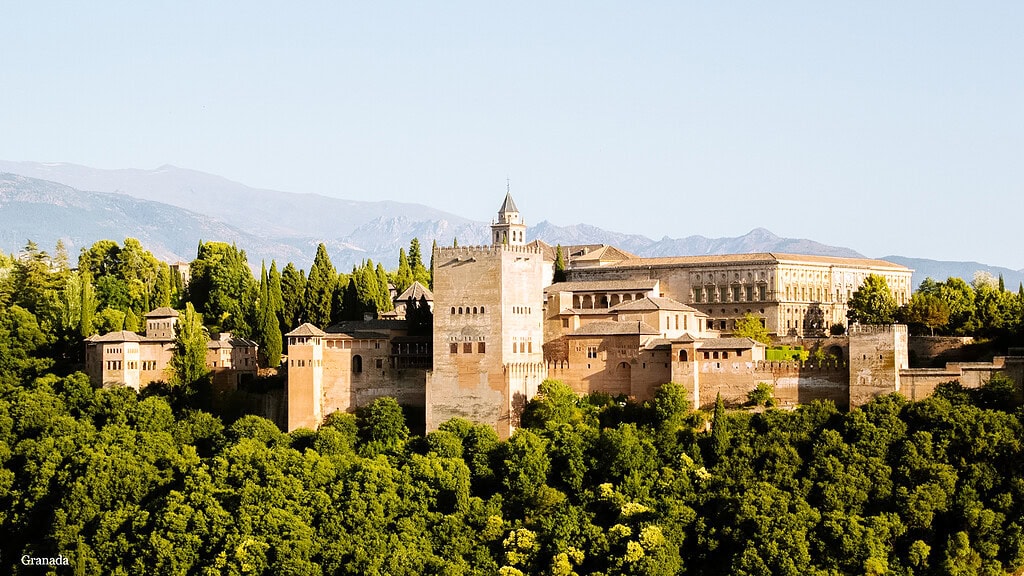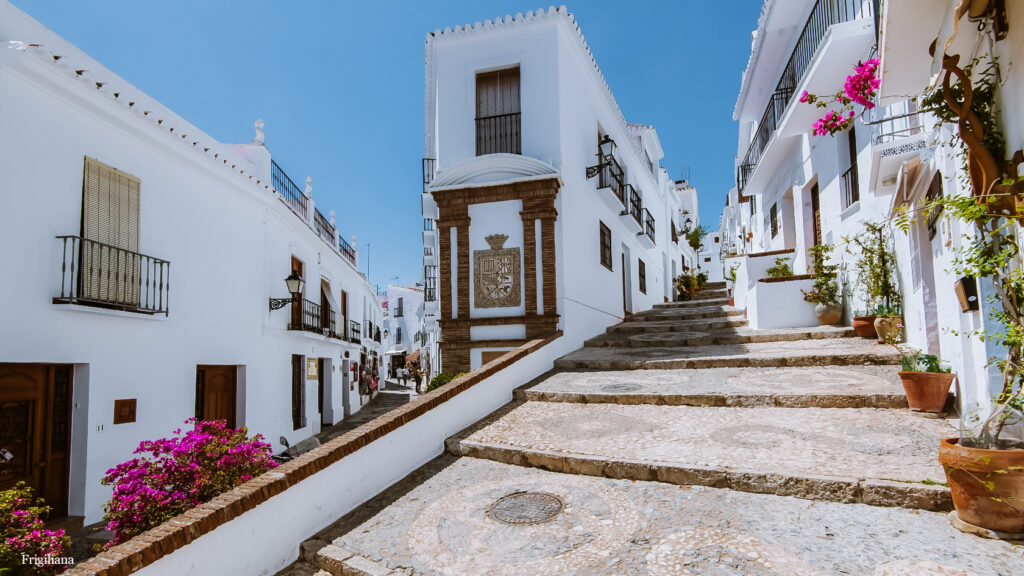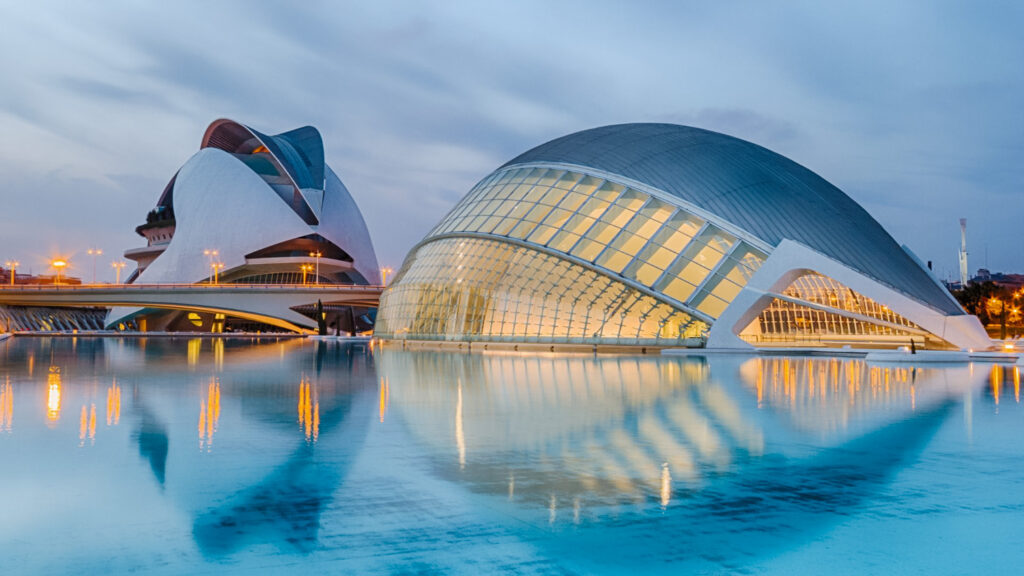Looking for the best places to visit in Madrid, Spain? Check out our 25 tips on things to do in Madrid, an overview of admission prices and opening times, and where to buy tickets for sightseeing in Madrid.
- Madrid
- Things to do in Madrid: Best places to visit
- 1. Plaza Mayor
- 2. San Miquel Market (Mercado de San Miquel)
- 3. Palacio Real de Madrid (Royal Palace of Madrid)
- 4. Sabatini Gardens and Campo del Moro
- 5. Cathedral of Our Lady of Almudenska
- 6. Prado Museum (Museo del Prado)
- 7. El Retiro Park
- 8. Puerta del Sol
- 9. Royal Botanic Garden
- 10. Thyssen-Bornemisza Museum
- 11. Queen Sofia Museum (Museo Reina Sofía)
- 12. Gran Vía
- 13. Plaza de España
- 14. Go for tapas at La Latina
- 15. Temple of Debod (Templo de Debod)
- 16. Flamenco show
- 17. Palace of Cibeles (Palacio de Cibeles)
- 18. Churros
- 19. Santiago Bernabéu Stadium
- 20. Plaza de Toros de las Ventas
- 21. Lavapiés
- 22. Park Madrid Rio
- 23. Atocha Station
- 24. Plaza de Colón
- Where to stay in Madrid?
- Things to do in Madrid – map
- How to enjoy Madrid
- More information about Spain
- Summary: Things to do in Madrid, Spain
Madrid
With 3.3 million inhabitants, Madrid is the largest and capital city of Spain and the fifth largest city in Europe.
Other statistics show that Madrid is the second most visited city in Spain after Barcelona. It attracts tourists with its world-famous museums, beautiful architecture and great food.
Madrid is a vibrant and energetic city, where, like Barcelona, it’s alive until the morning. On the other hand, compared to Barcelona, it’s much more authentic in the city centre, where locals are also really abundant.
Hotels in Madrid 😴
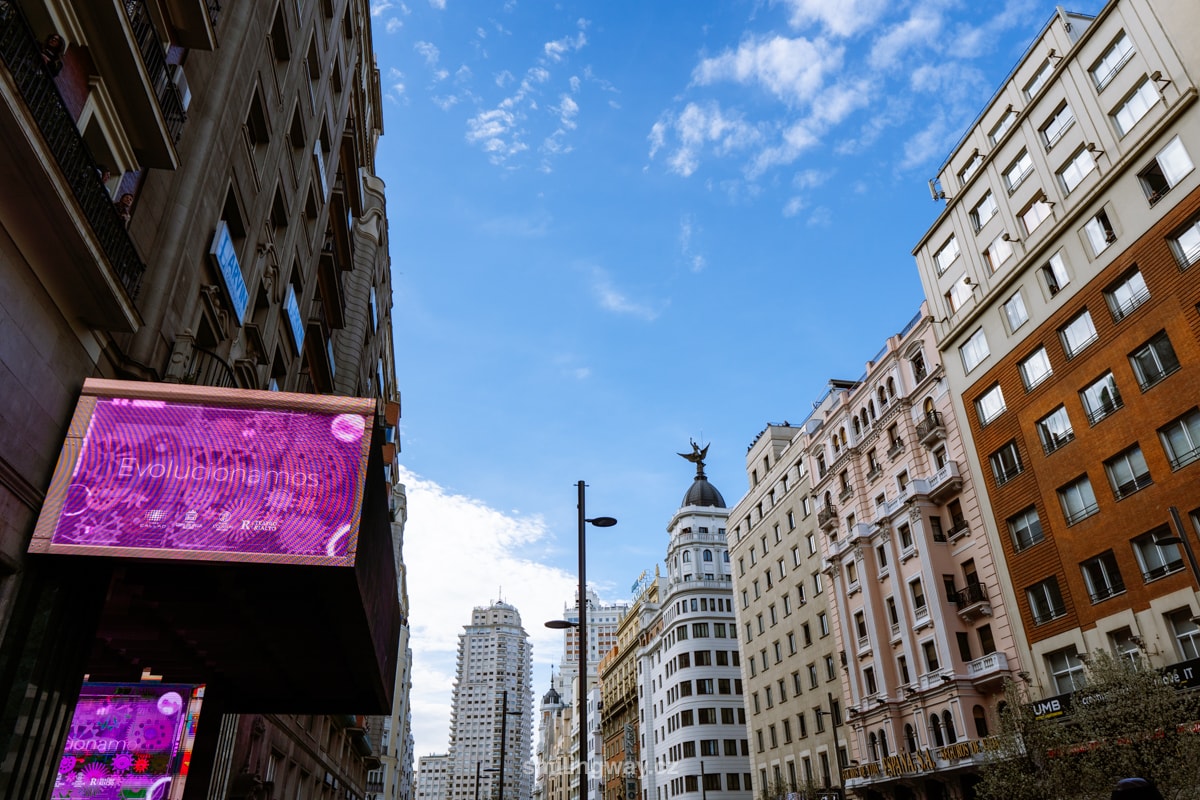
Things to do in Madrid: Best places to visit
Visit the world-famous museums (Prado, Thyssen-Bornemisza, Museo Reina Sofía), explore the beautiful parks, enjoy tapas at La Latina, admire the splendour of the Royal Palace or the interior of the Cathedral of Our Lady of Almudena.
There are plenty of best places to visit in Madrid.
See the best things to do in Madrid:
1. Plaza Mayor
Plaza Mayor is Madrid’s main square, which is exclusively for pedestrians. The cobbled square was once a marketplace, a stage for bullfights, royal processions and the execution ground for local heretics.
It is completely surrounded by three-storey residential buildings, which are beautifully decorated. You can get in through one of the 9 entrances.
Today it is a very touristy place, lined with cafes and small markets
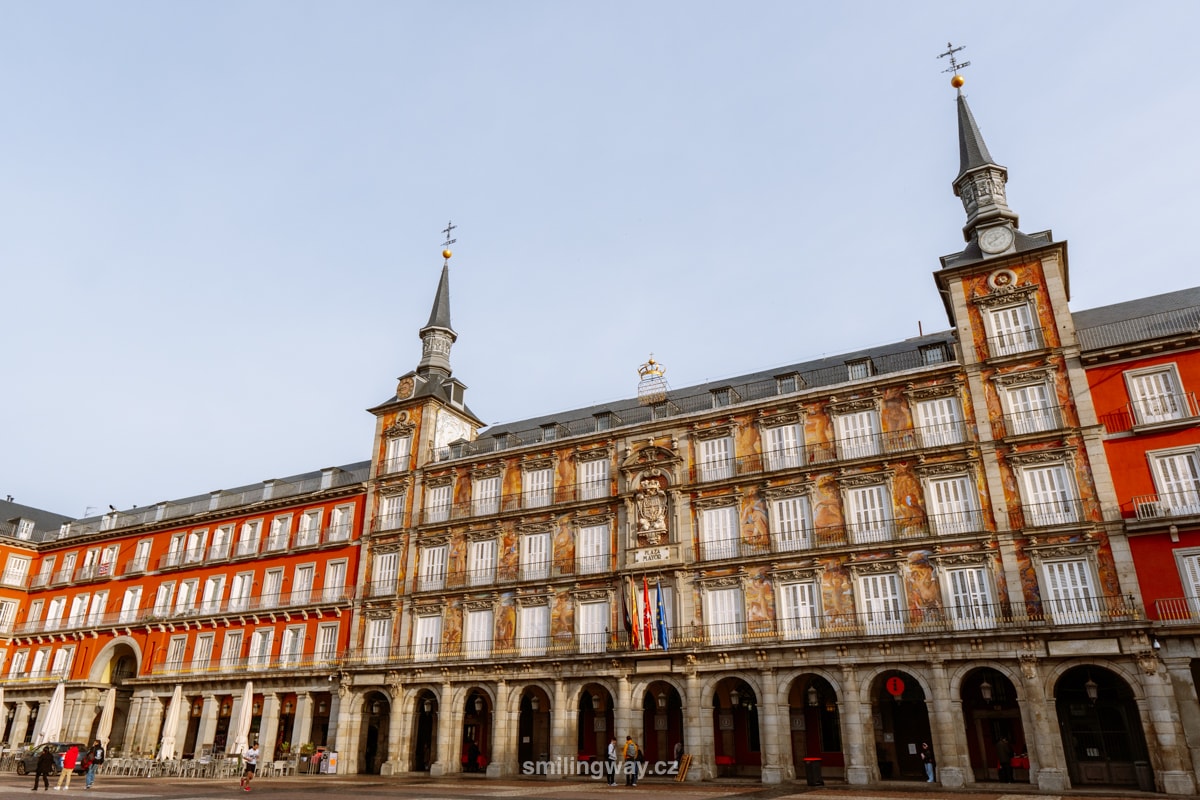
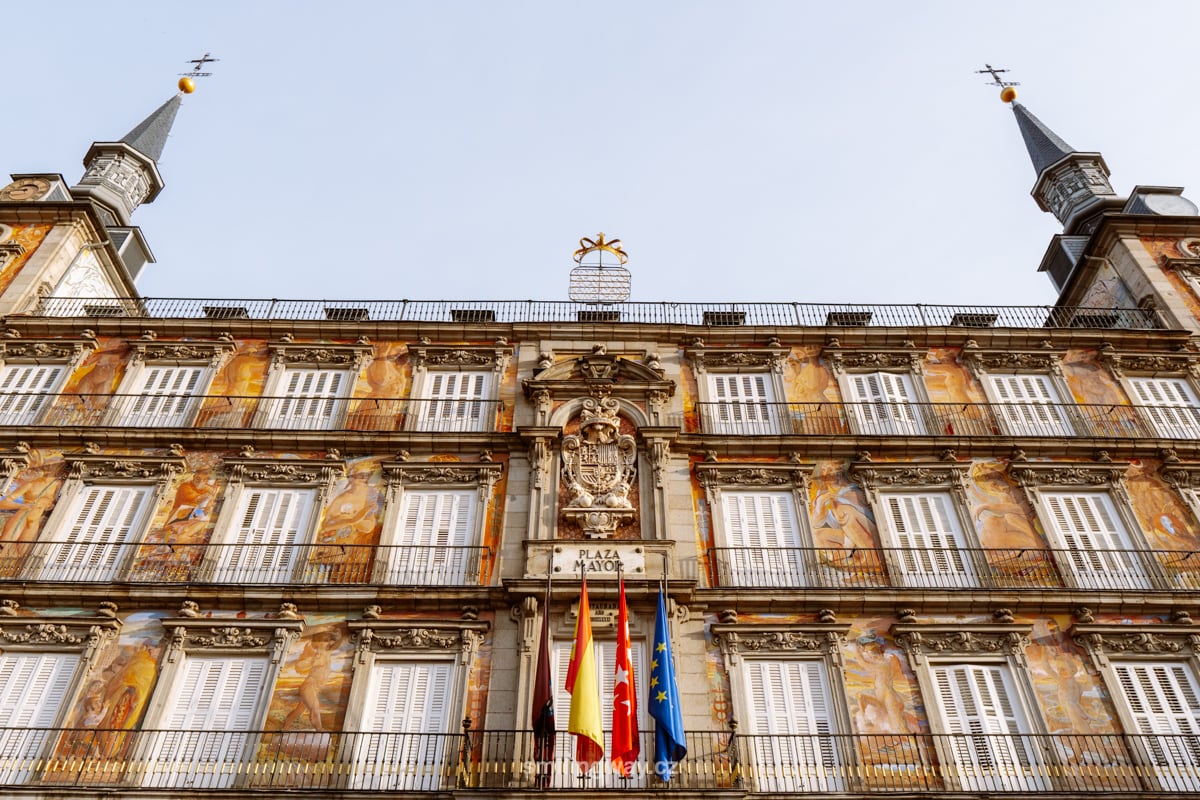
2. San Miquel Market (Mercado de San Miquel)
Just steps from Plaza Mayor is Madrid’s most famous market, Mercado de San Miguel, a covered market housed in a beautiful Art Nouveau building.
This is where you will be served a variety of tapas delicacies, seafood, paper cones full of meat and other delicacies.
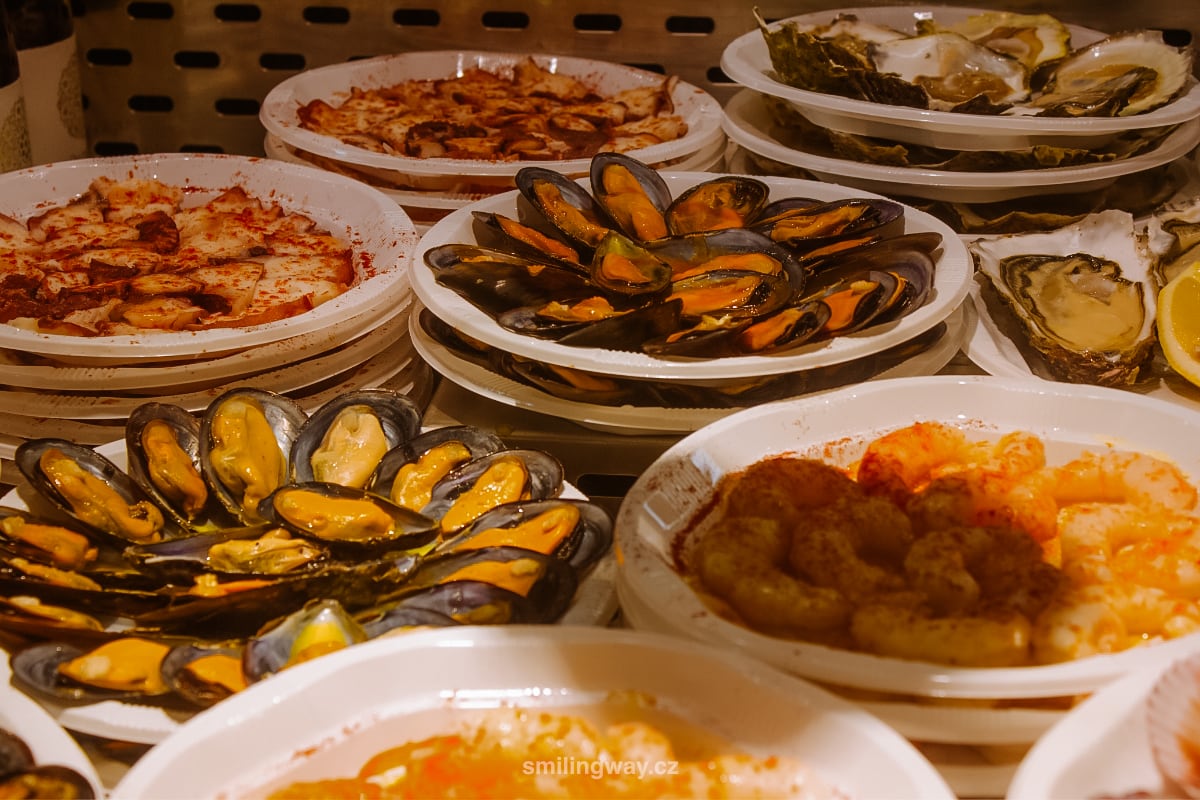
Mercado de San Miguel opens daily at 10:00 and stays open until late at night. And thanks to its central location, you can come back at any time of the day or your stay in Madrid.
Other popular markets in Madrid include:
- Mercado San Antón
- Mercado de San Ildefonso
- Mercado de San Fernando
- Mercado de la Cebada
The first two markets lie north of the centre, the other two south of the centre. Locals mostly buy their food at the large Mercado de Maravillas market, which is further away from the centre.
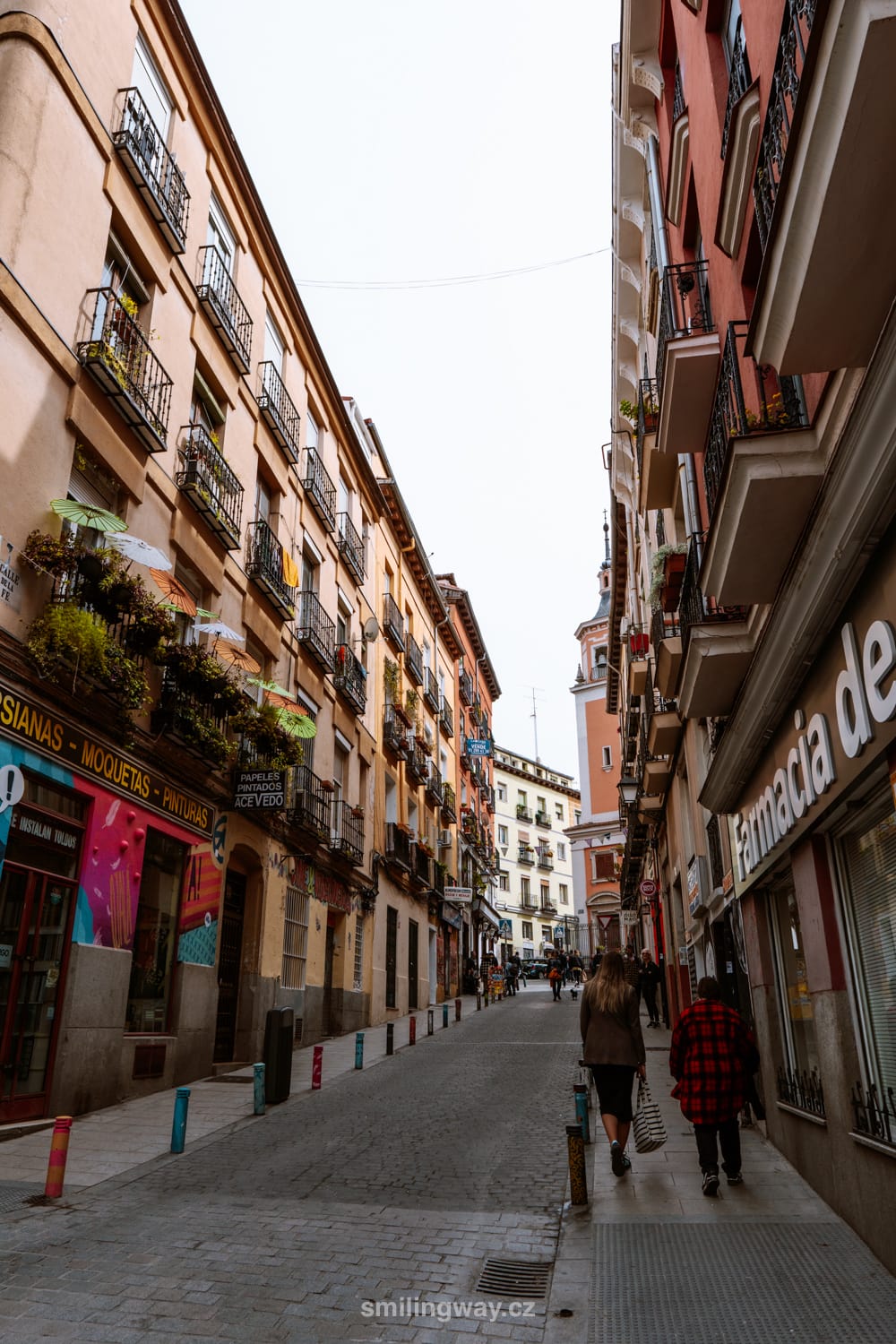
3. Palacio Real de Madrid (Royal Palace of Madrid)
Palacio Real is the largest royal palace in Western Europe and one of the largest in the world. It is even more spectacular than Versailles in Paris or Schönbrunn in Vienna.
A French-Italian Baroque-Neoclassical palace that will amaze you with its Italian frescoes, French tapestry, Spanish porcelain, chandeliers, silver, watch collection, works by Goya, Caravaggio and Velázquez and gilded interior. Each hall is majestic, richly decorated and unique.
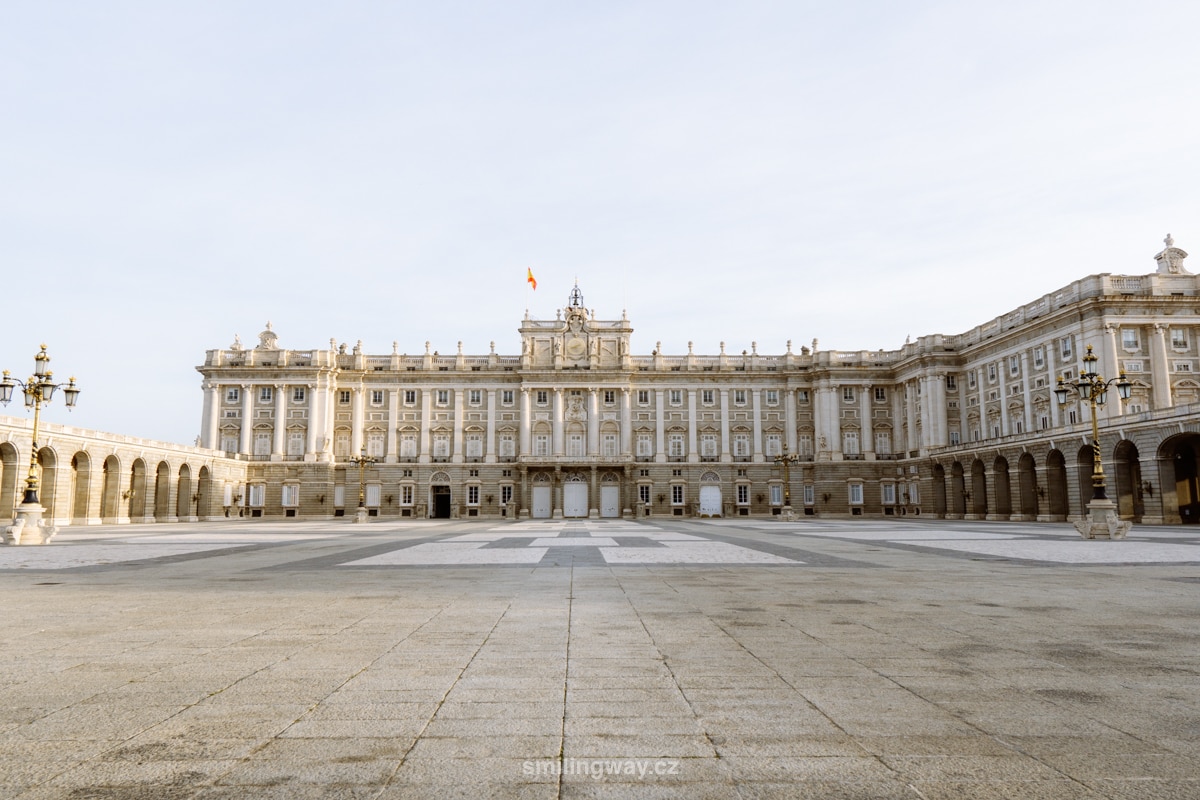
In addition to its magnificent interior, the Royal Palace houses the largest collection of Stradivarius musical instruments in the world. Across the courtyard is an armoury with weapons belonging to various Spanish kings (one of the best collections in the world).
The tour also includes the royal pharmacy with hundreds of medicine bottles, ornate cabinets and a faithful recreation of a laboratory.
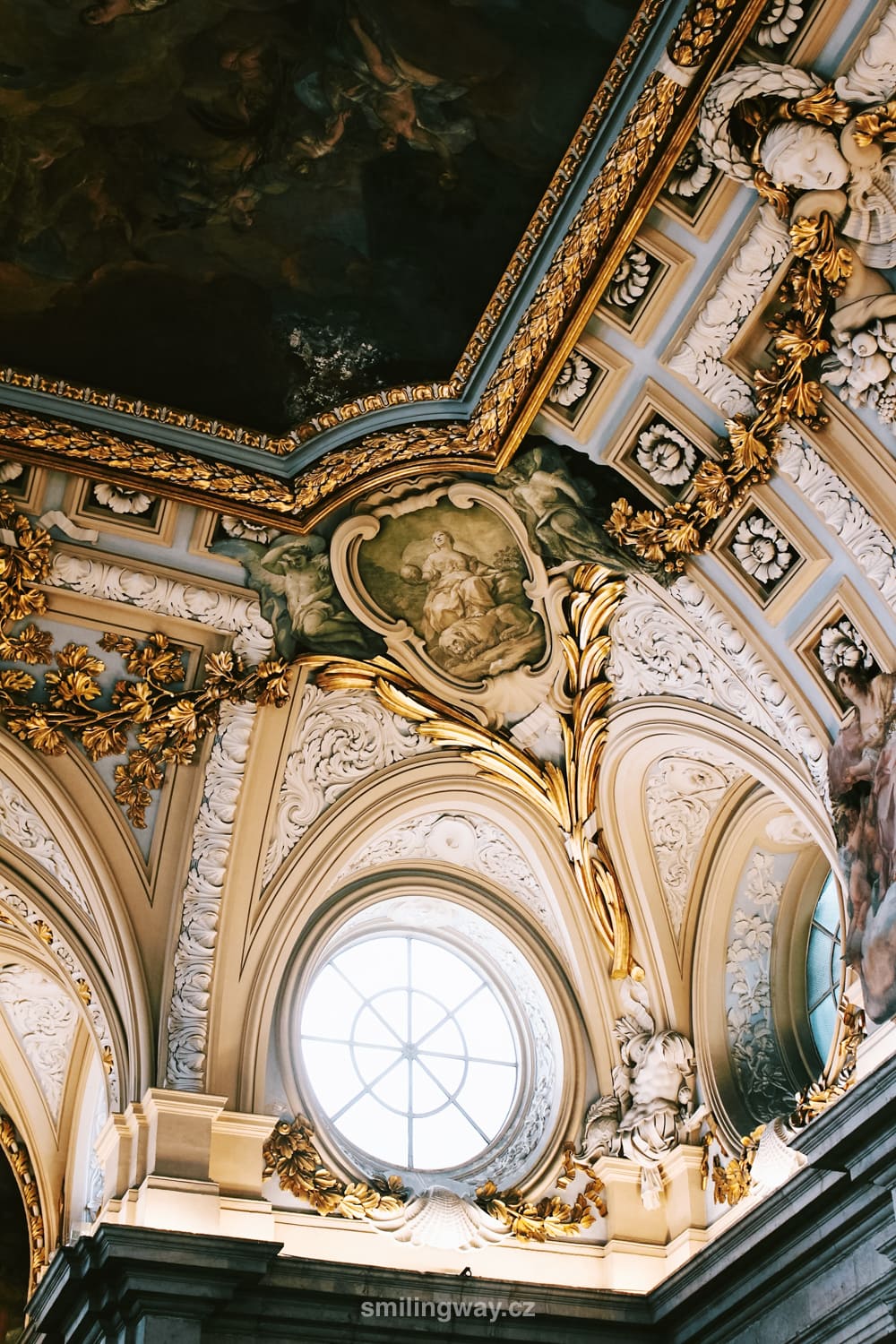
Palacio Real is the official residence of the royal family. But she actually lives in the Palacio de la Zarzuela. The Royal Palace is thus used for official ceremonies and royal functions.
Changing of the guard takes place on selected days of the week – check the official website for current times.
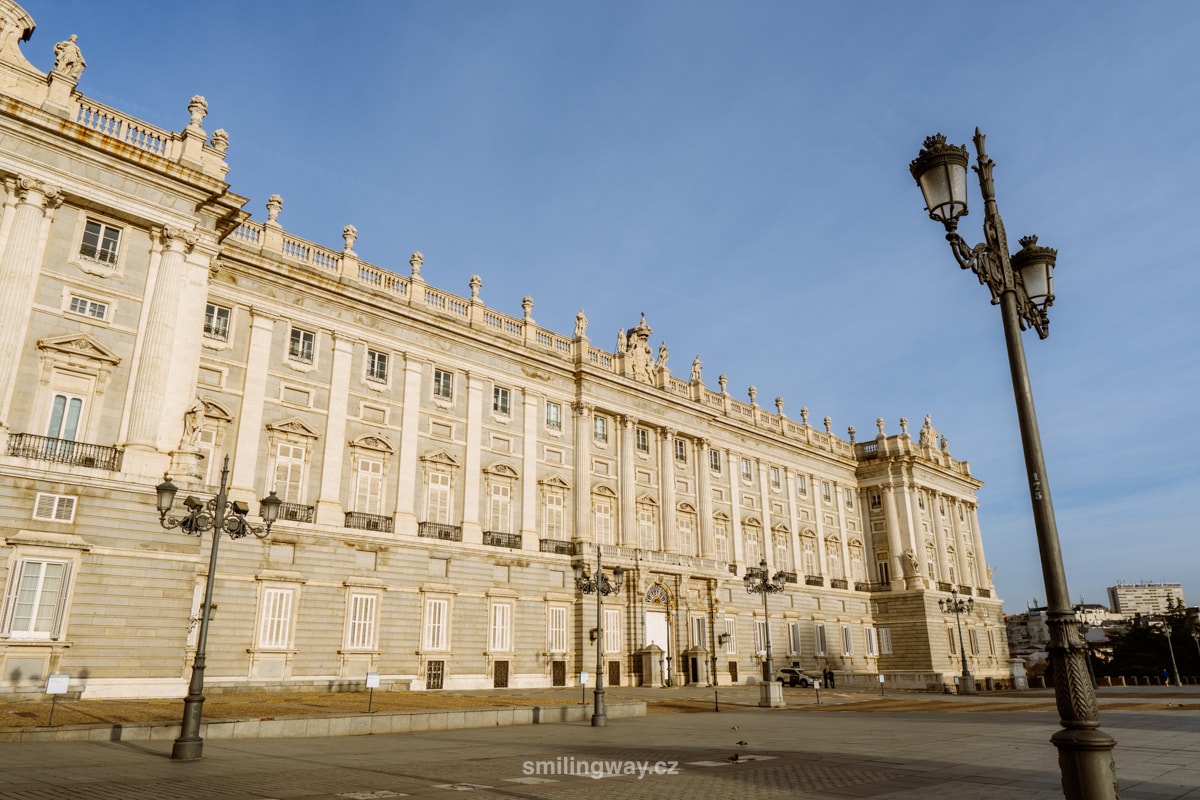
Admission and opening hours of the Royal Palace of Madrid
The palace is open daily at the following times – Monday to Saturday 10:00-18:00, Sunday 10:00-16:00 (last entry always one hour before). Free admission for all Monday to Thursday from 16:00-18:00 – depending on the time, there may be long queues to get in.
Full admission to the Royal Palace is €14 and reduced admission is €7 for children aged 5-16, students under 25 and seniors over 65. Children up to 5 years of age and disabled persons are admitted free of charge. Tickets can sell out up to a week in advance – it’s best to book in advance (see below).
The entrance to the palace is on the corner of Plaza de la Armería – take a left from Plaza de Oriente (you will also be directed by signs).
How to skip the lines at the Royal Palace: Arrive at opening time – the palace is one of the most popular sights in Madrid and the lines inside can be long. At the same time, book your ticket in advance, as they tend to sell out days in advance.
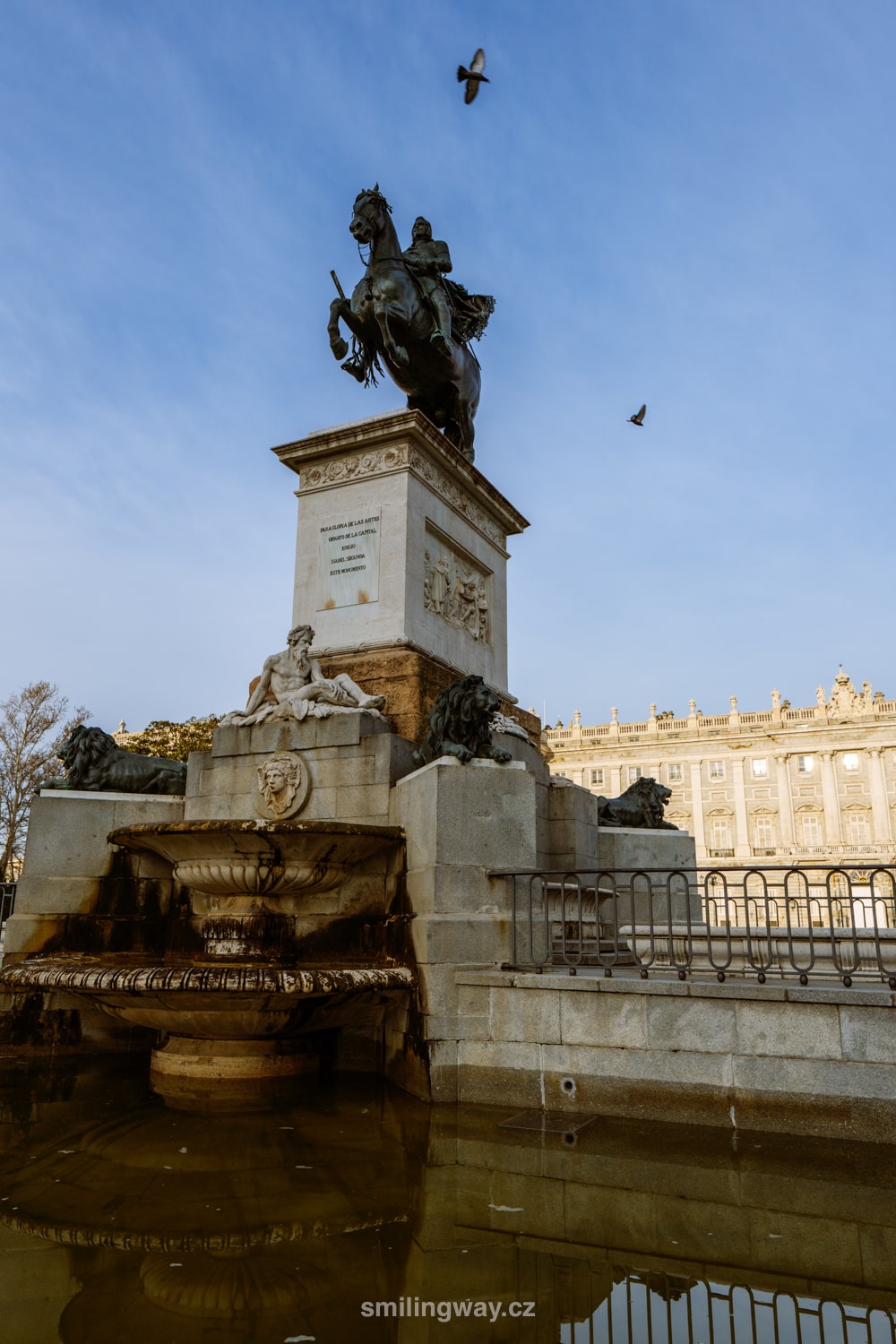
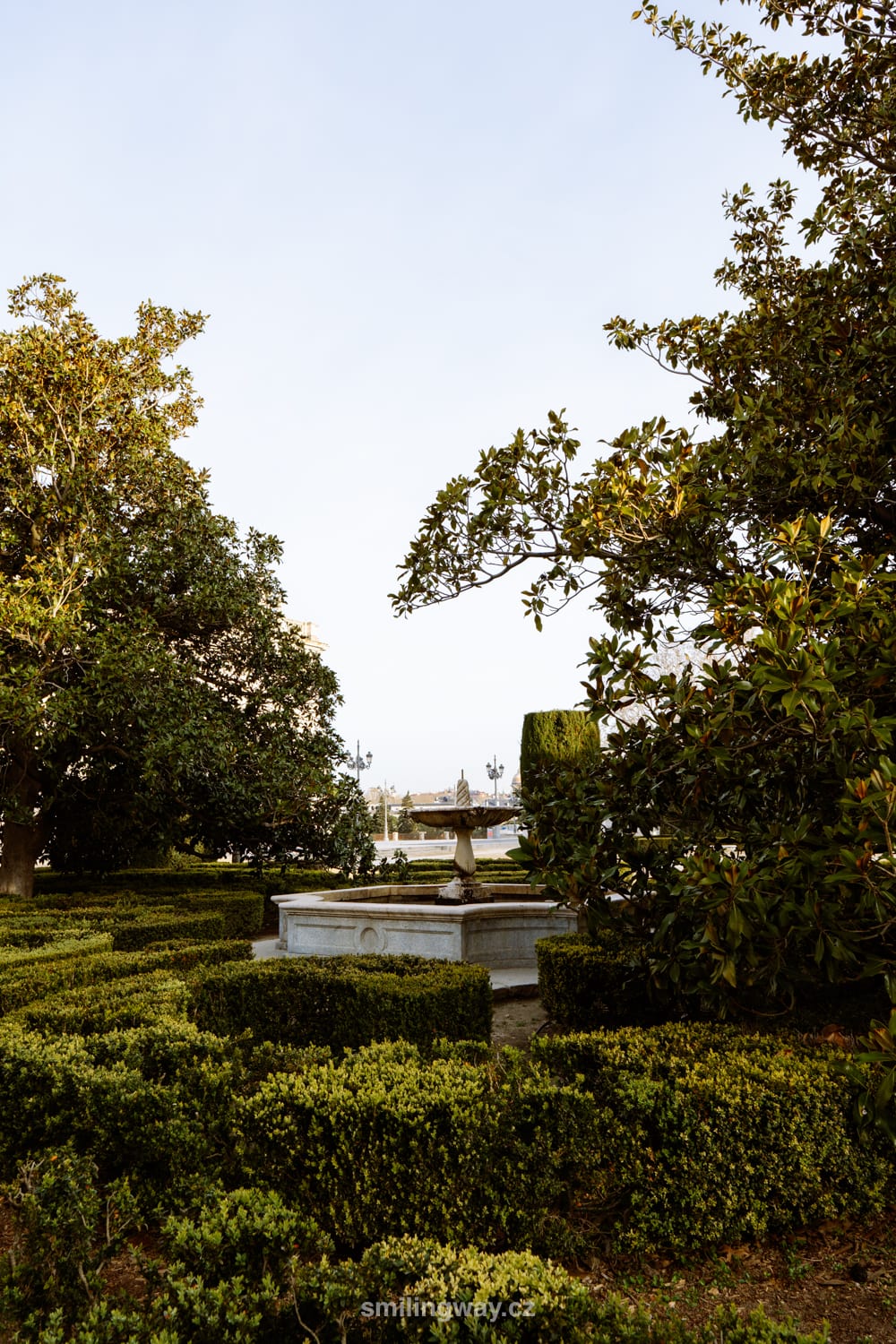
4. Sabatini Gardens and Campo del Moro
Would you like to relax after visiting the Royal Palace? Head to the Sabatini Gardens or Campo del Moro Royal Park.
The entrance to the Sabatini Gardens is on the right hand side of the Plaza de Oriente. The gardens are not large, but there are shady spots and benches. The second entrance is from Cta. San Vicente, where there are stairs and an elevator. Go a little lower and you will reach the entrance to Campo del Moro.
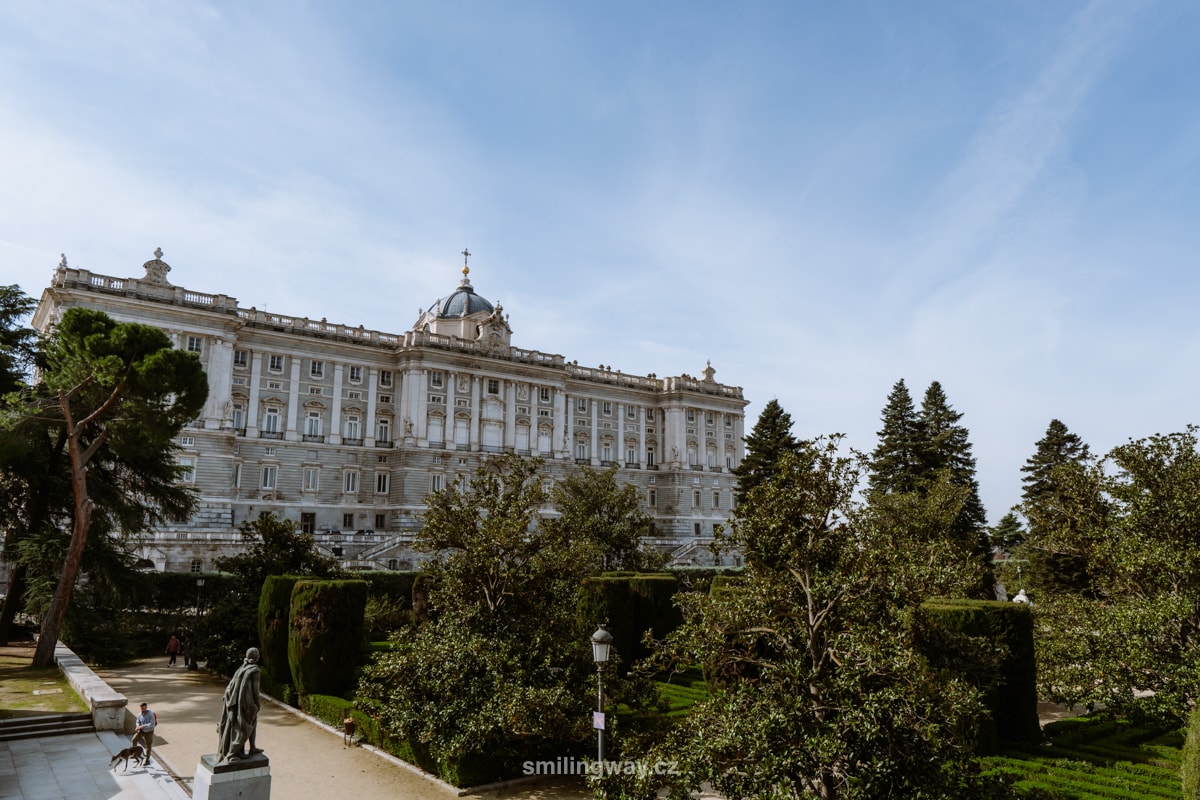
Campo del Moro is the perfect place to relax after visiting the Royal Palace and the Cathedral. There are benches, shady spots and beautiful views of the palace. You can walk through the whole park and come out on the other side under the Cathedral of Our Lady of Almuden. Moreover, there are far fewer people here than in the Sabatini Gardens.
Open daily 10:00-20:00, off-season 10:00-18:00. Both places are free of charge.
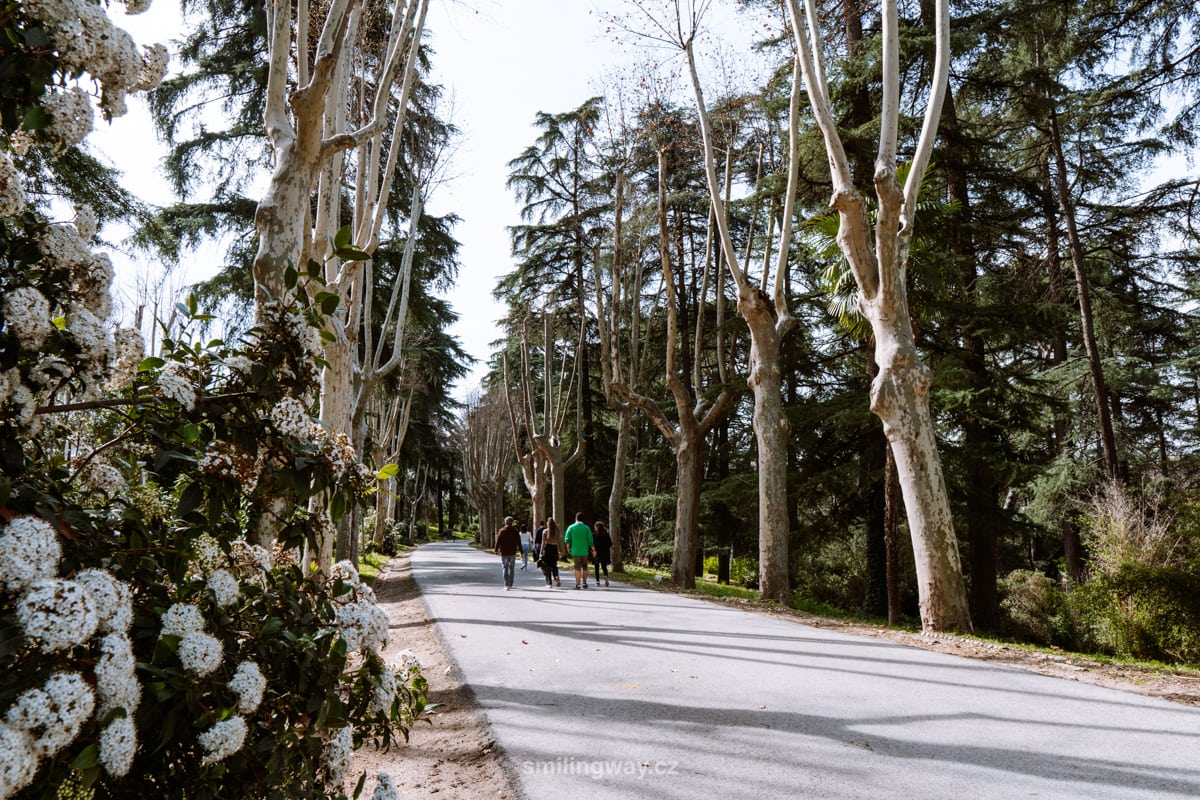
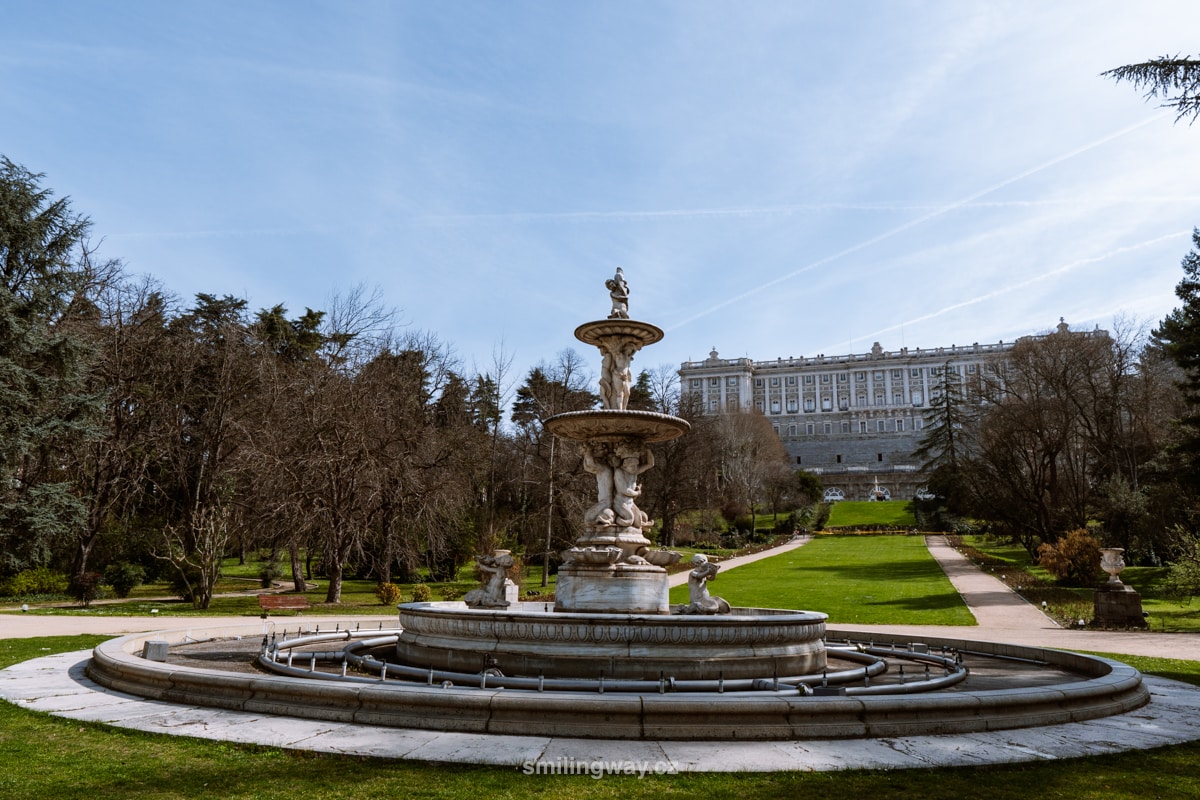
5. Cathedral of Our Lady of Almudenska
The Almudena Cathedral by Francisco de Cubas is another Spanish cathedral that took more than a century to build. The first is Gaudí’s Sagrada Familia in Barcelona, where construction began in 1882 and is still not finished. Construction work on Almudena Cathedral began a year later and was completed in 1993.
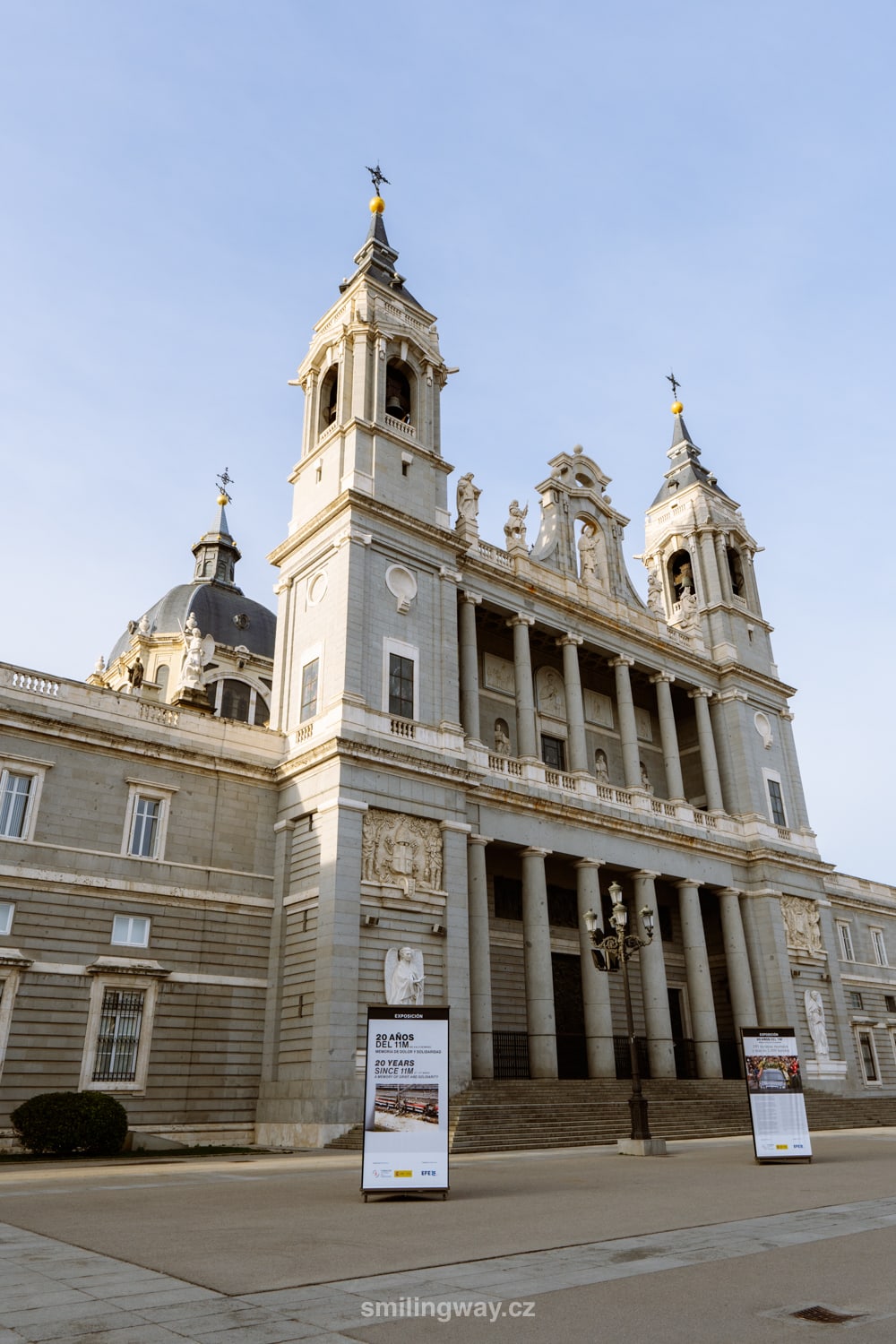
The Cathedral of Our Lady of Almudena is one of the largest cathedrals in the world and the most important religious building in Madrid. It was consecrated by Pope John Paul II on 15 June 1993, making it the first cathedral to be consecrated outside Rome. .
Interestingly, cathedrals form the imaginary heart of most historic European cities. For example, the Duomo in Milan, the Duomo in Naples or St Mark’s Basilica in Venice. Almudena Cathedral is located on the imaginary edge of the historic centre, directly opposite the Royal Palace. But that doesn’t change the fact that it’s one of the most beautiful places in Madrid.
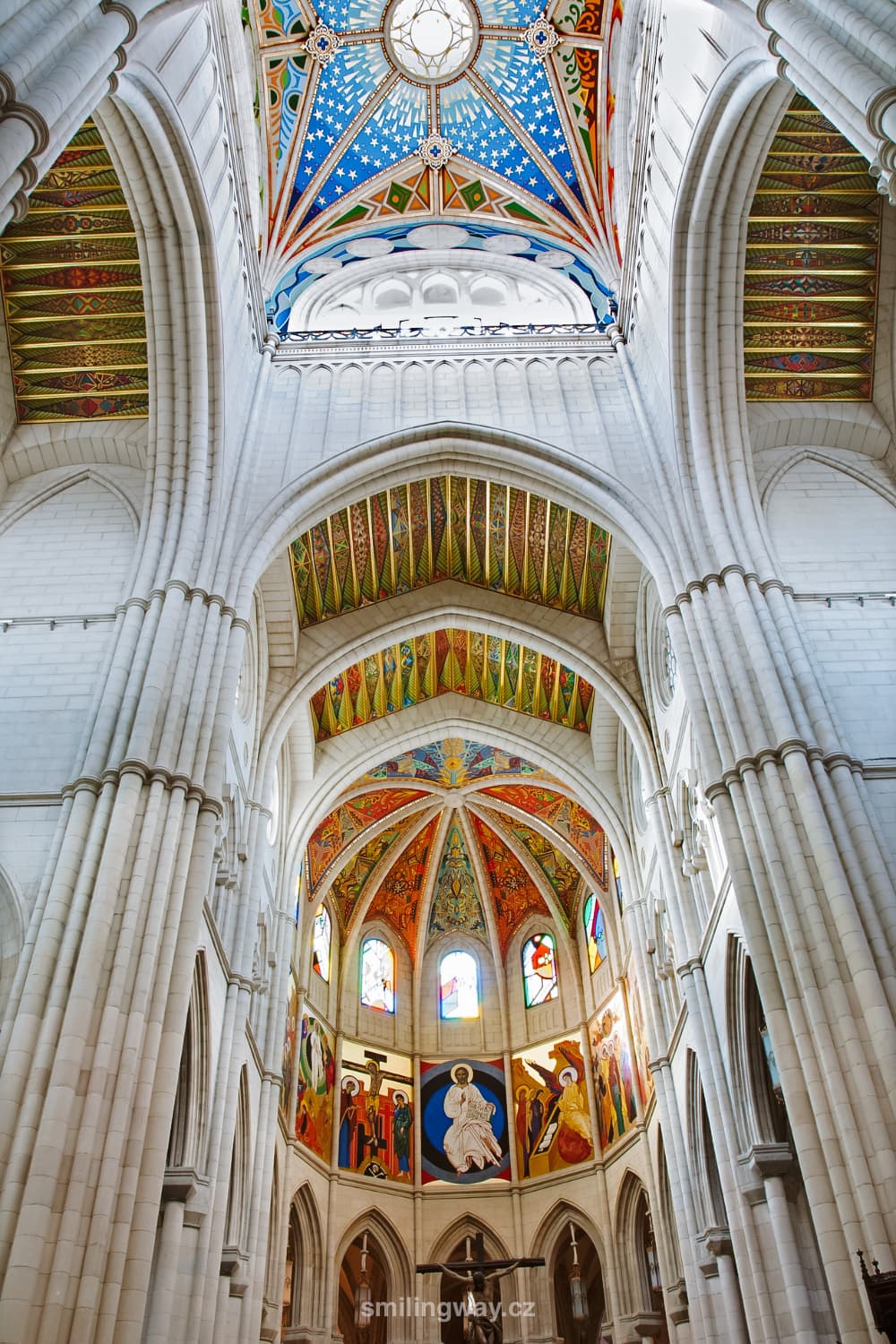
It may not be as spectacular inside as St Mark’s Basilica in Venice, but its playful ceiling full of vibrant colours, the altarpiece from 15th century and huge organ with 5,000 pipes will get you just the same.
The cathedral also includes a museum with objects about the history of the Diocese of Madrid and a view from the dome of the Royal Palace, which is adjacent to the cathedral.
Admission and opening hours of the Cathedral of Our Lady of Almudena
Entrance to the cathedral is free, but a donation of at least €1 is recommended. It is open daily from 10:00-20:00, in July and August until 21:00.
For a fee of €7 (reduced €5 for selected groups) you can also visit the museum and enjoy the view from the dome.
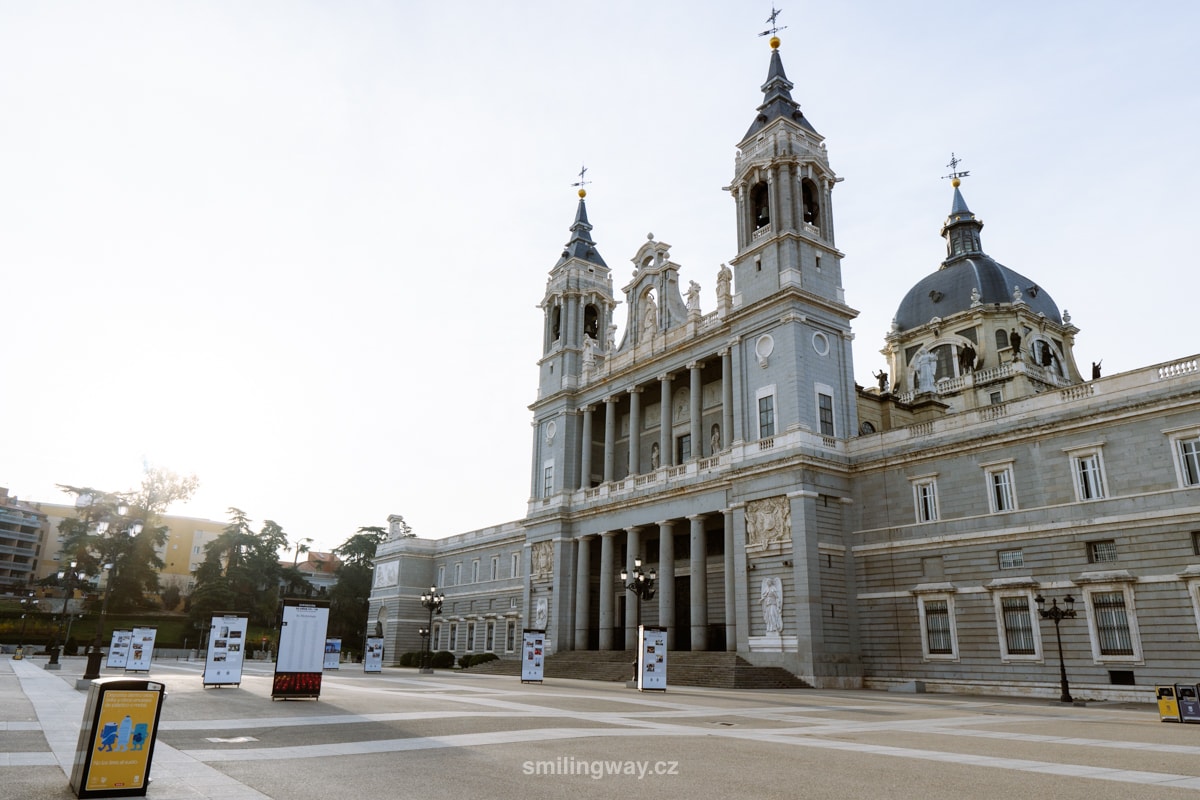
6. Prado Museum (Museo del Prado)
Do you enjoy the art of the Louvre or the Vatican Museums? Then don’t miss the Prado Museum, one of the most important art museums in the world. The museum houses an incredible collection of nearly 11,000 works, ranging from paintings, photographs, sculptures, decorative objects to coins and medals.
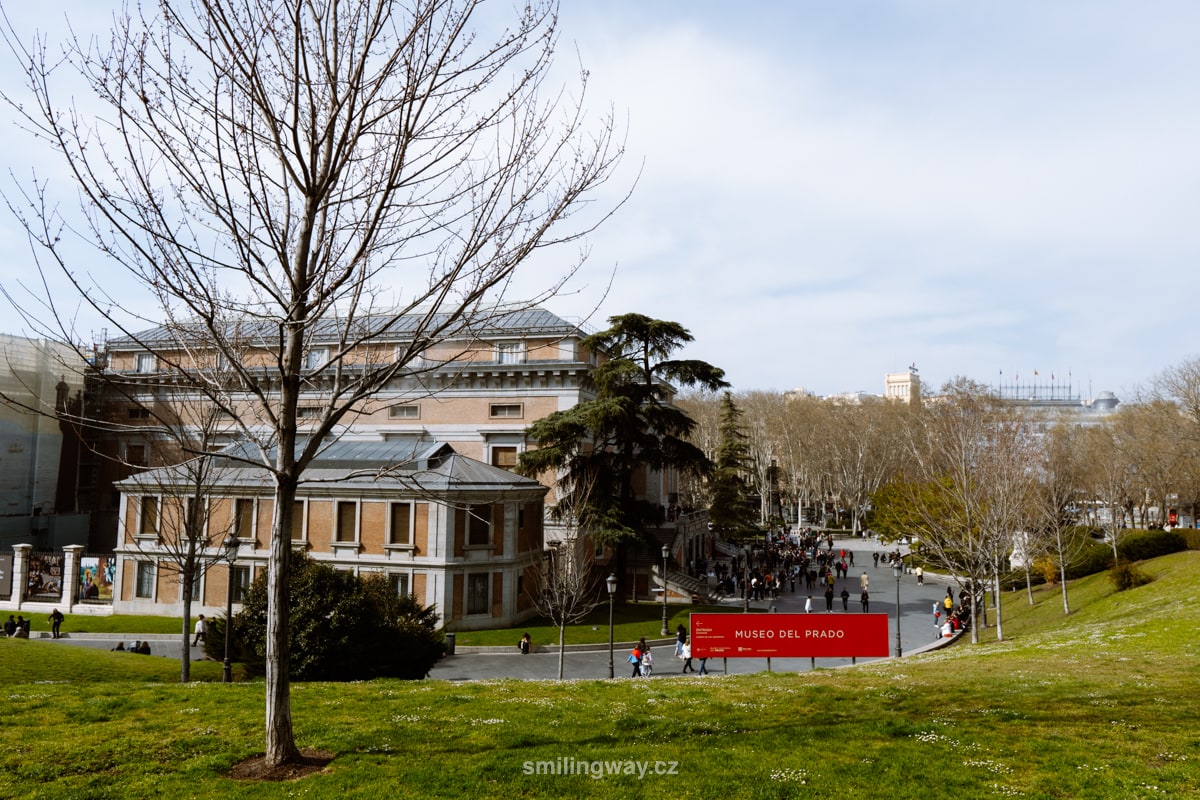
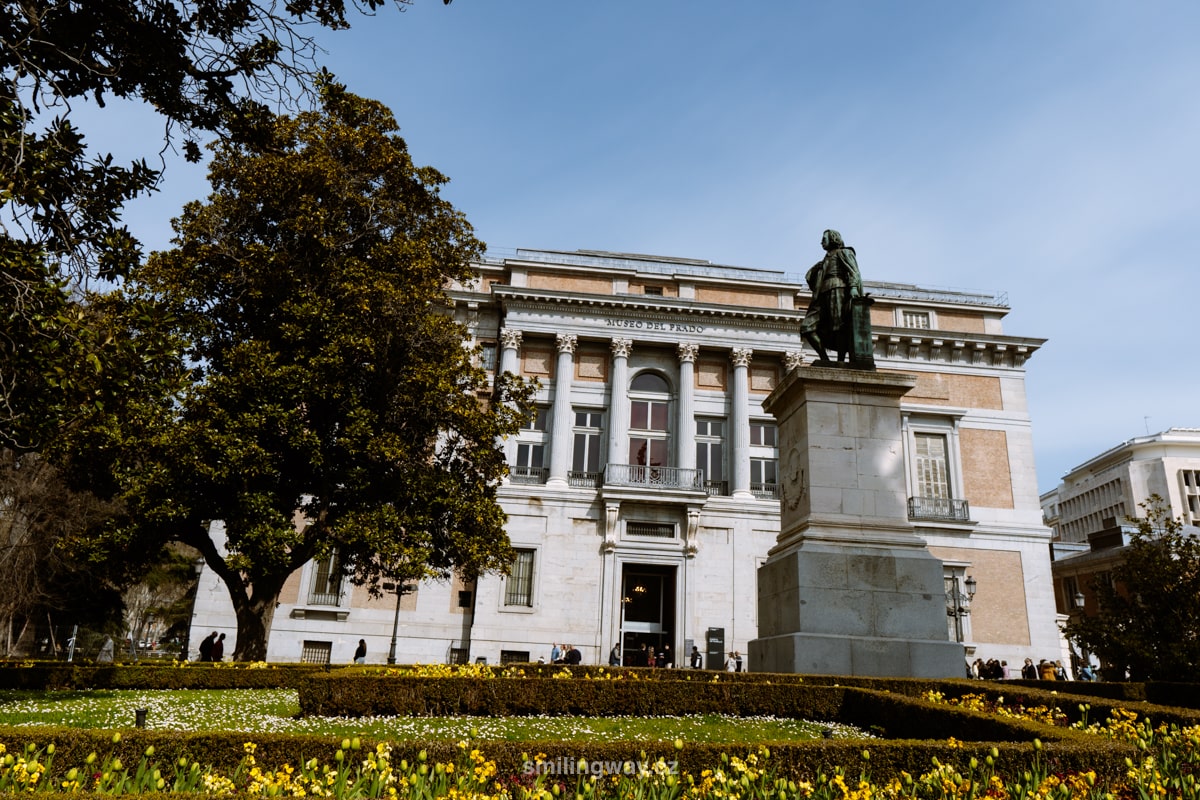
It is here that you will be treated to the finest collection of European masters by Spanish artists (Francesco de Goya, Diego Velásquez and others) or Italian works from the Renaissance (Raphael).
The first floor is dedicated to such artists as Rubens, Velázquez, Tiziano, Murillo, El Greco. On the second floor you will see beautiful ambits and temporary exhibitions. Note: No photography inside the museum.
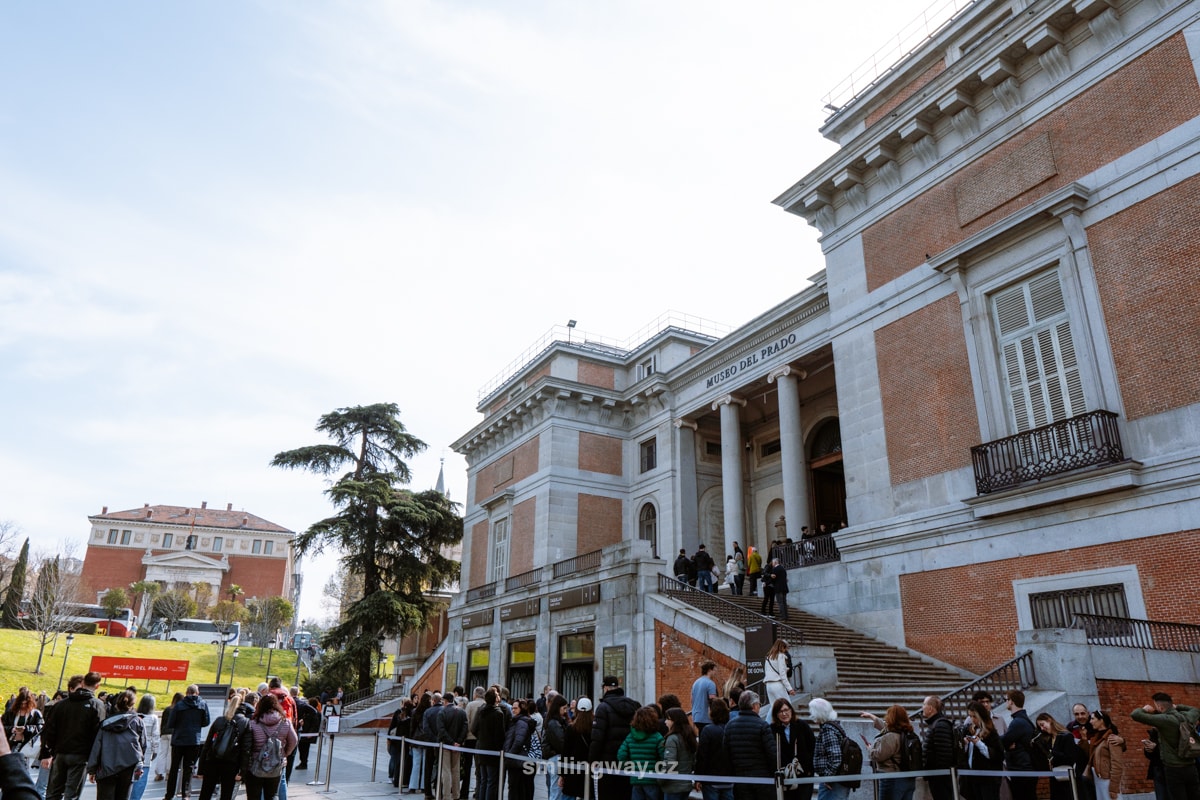
Entrance and opening hours of the Prado Museum
The Prado Museum is open daily during the following hours – Monday to Saturday 10:00-20:00 and Sunday and public holidays 10:00-19:00. If you are travelling on a budget, there is always free entry 2 hours before closing time. Just be prepared for the queues to be even longer than usual, which means you won’t have as much time inside as you need to see the collection.
Admission to the Prado Museum is €15 and a reduced admission of €7.50 for seniors over 65. Children up to 18 years of age, students up to 25 years of age and persons with a Disabled Persons Card are admitted free of charge.
How to skip the lines at the Prado: The lines at the Prado are really long. Often there are 2 queues – first the ticket queue, which winds along the building all the way around the back corner (even in the low season in early March). Then you move on to a separate entrance with a ticket, where a security queue forms – fortunately, it passes quickly. For this reason, it is better to book tickets in advance and arrive at 10:00 or later in the afternoon.
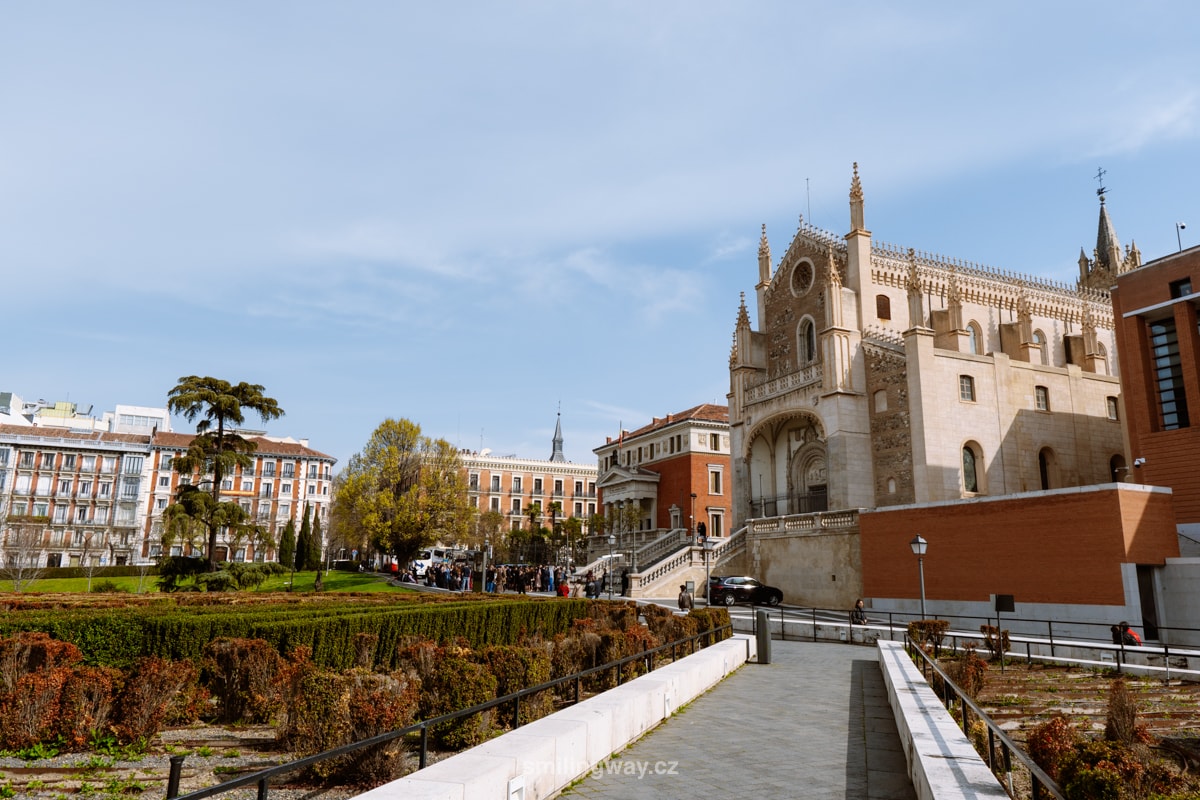
7. El Retiro Park
El Retiro Park is the green heart of Madrid and its most popular park, just a short walk from the Prado Museum. It is an ideal place to relax after visiting the art museums in the area.
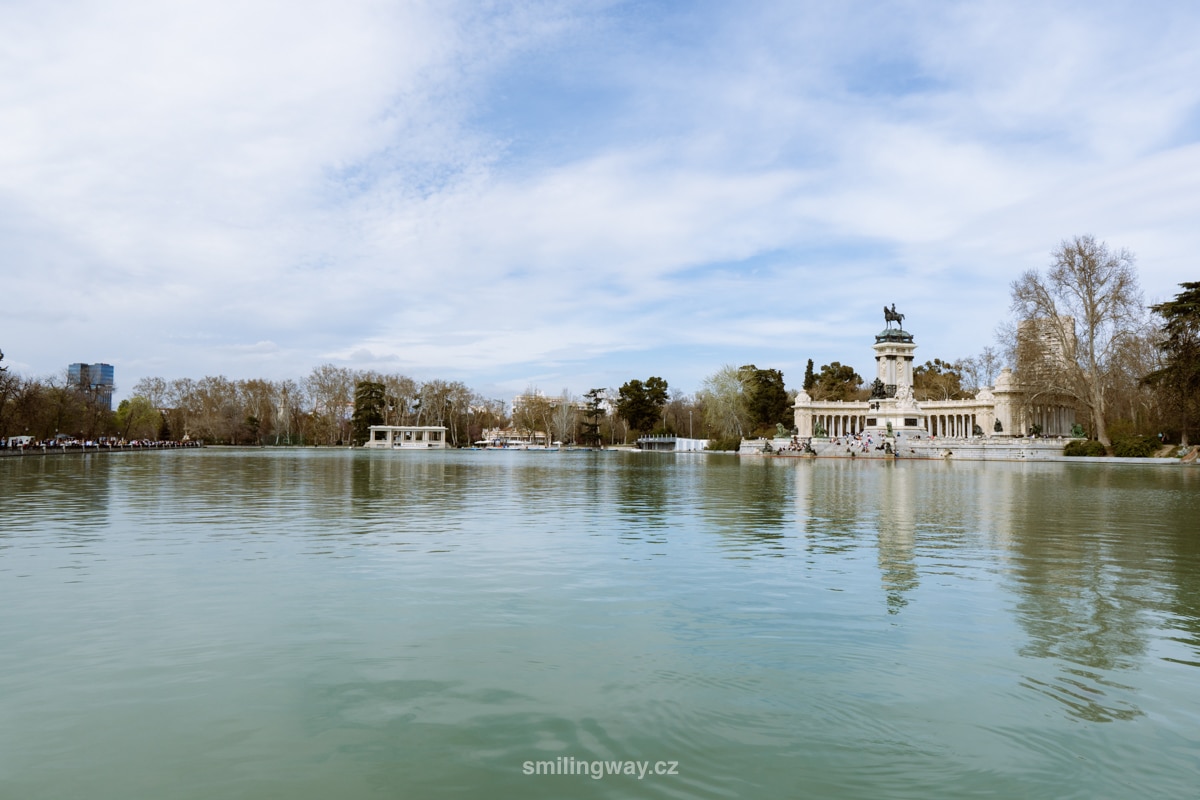
The 300-acre park was formerly used exclusively for the royal family, but was later opened to the public. You can stroll around, boat on El Estanque Lake and see art from street artists at the weekend.
Or go to the memorial to the victims of the Madrid terrorist bombings. One of the most popular places in El Retiro Park is the glass Palacio de Cristal. It was based on the glass palace in London. Today, works from the Queen Sofia Museum are on display here.
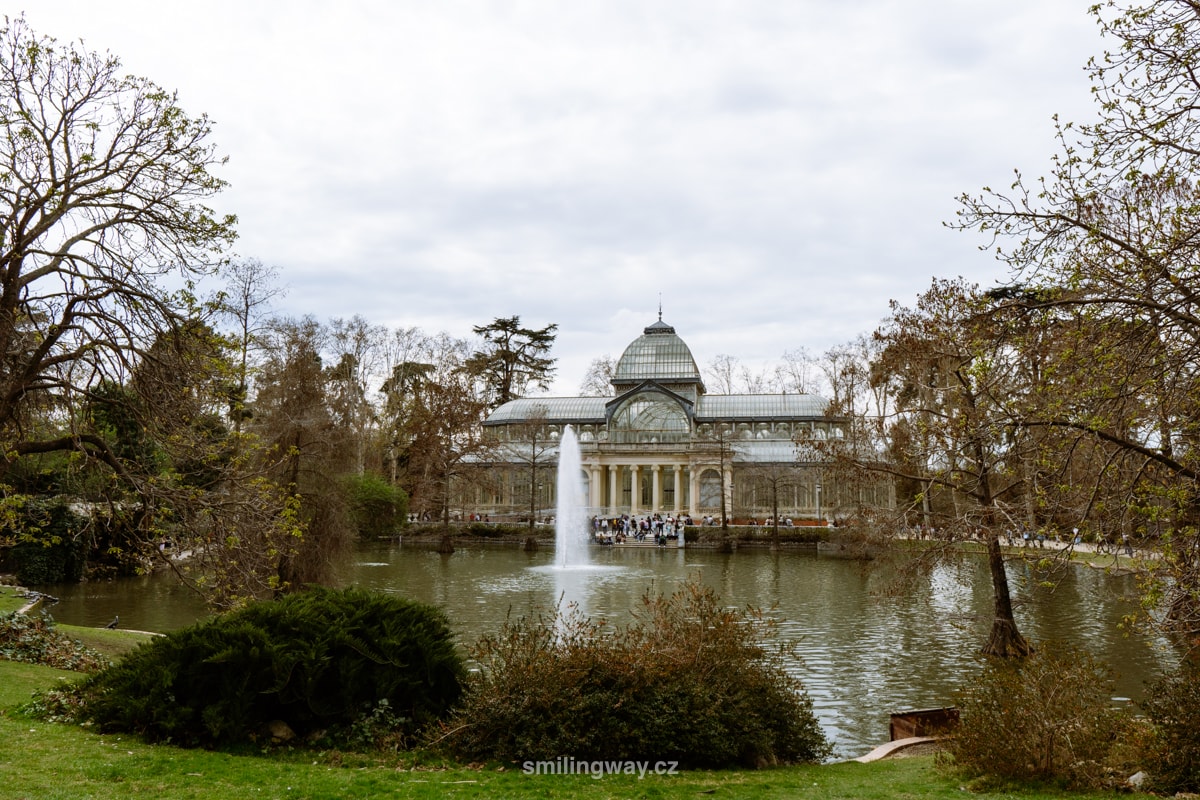
At the northwestern edge of the park guards the entrance to Puerta de Alcalá, an impressive triumphal arch. One of the most beautiful places in El Retiro Park is the Cecilio Rodríguez Gardens, located in the southeast of the park. Beautiful gardens full of fountains, flowers and peacocks walking freely. Not far from here you can also visit a garden full of roses.
El Retiro Park is open daily from 06:00-22:00.
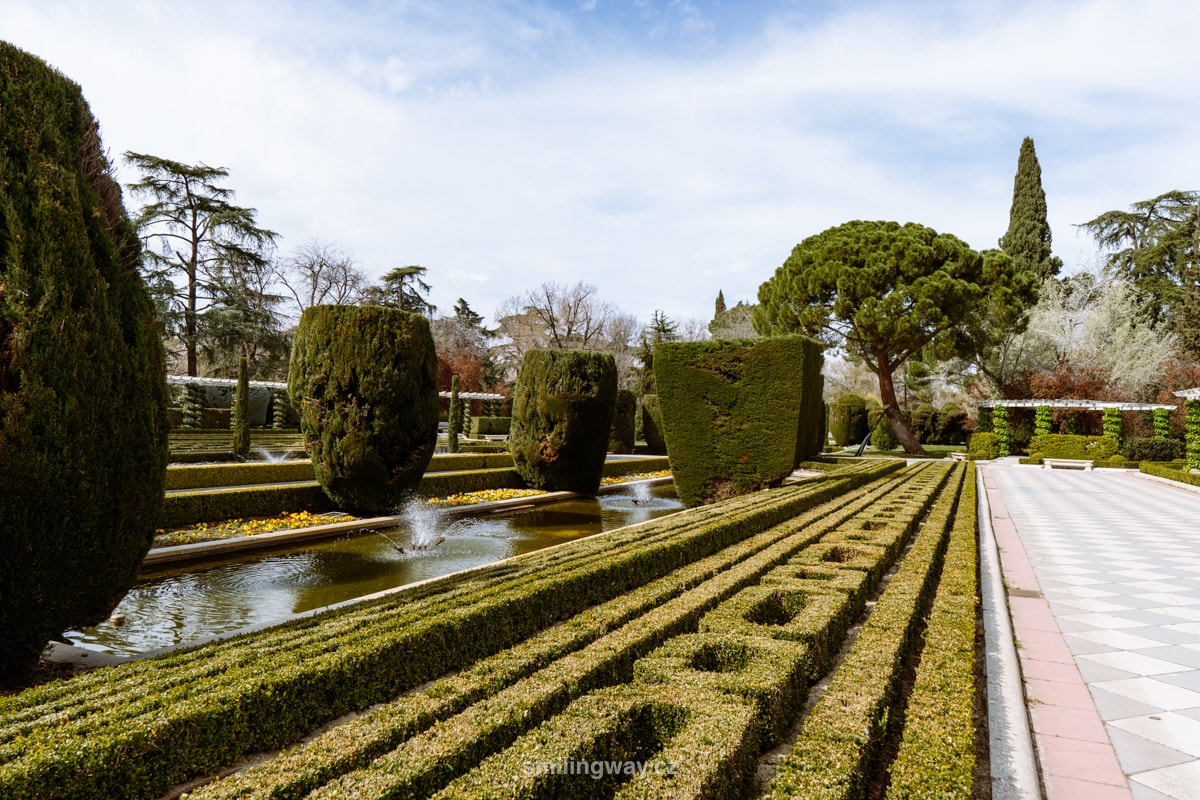
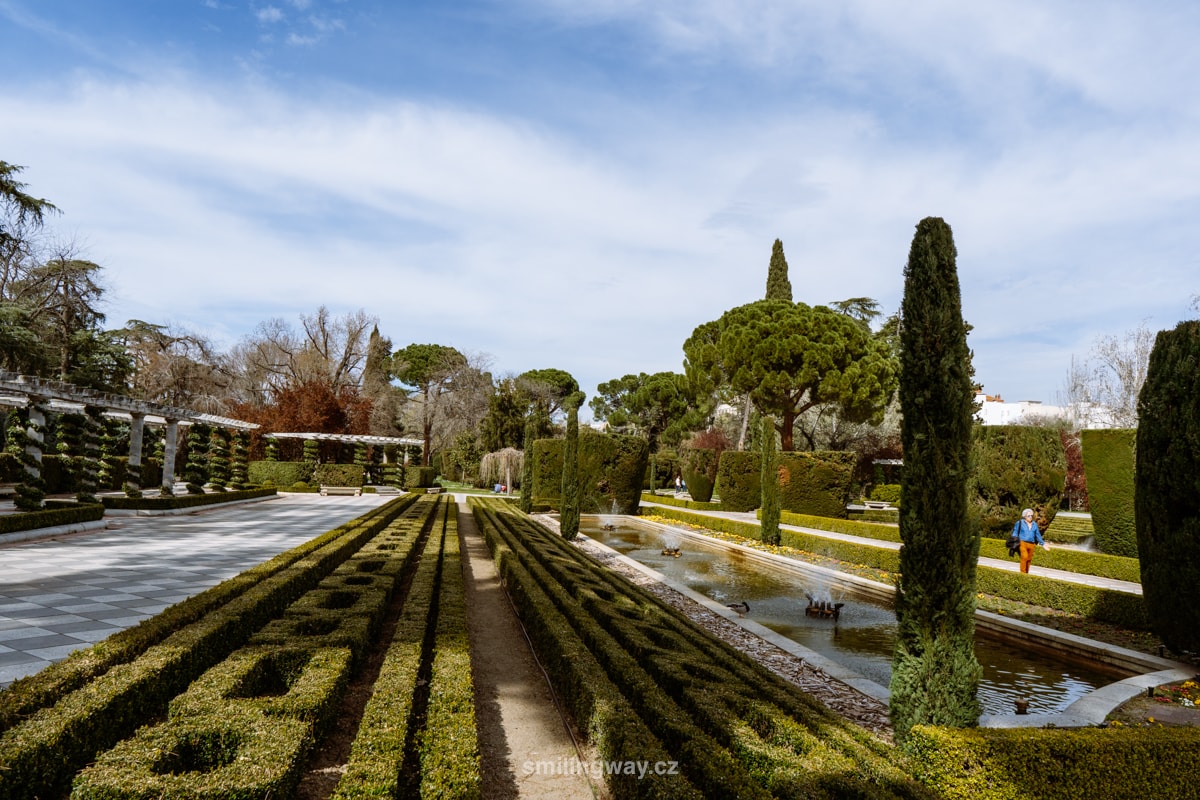
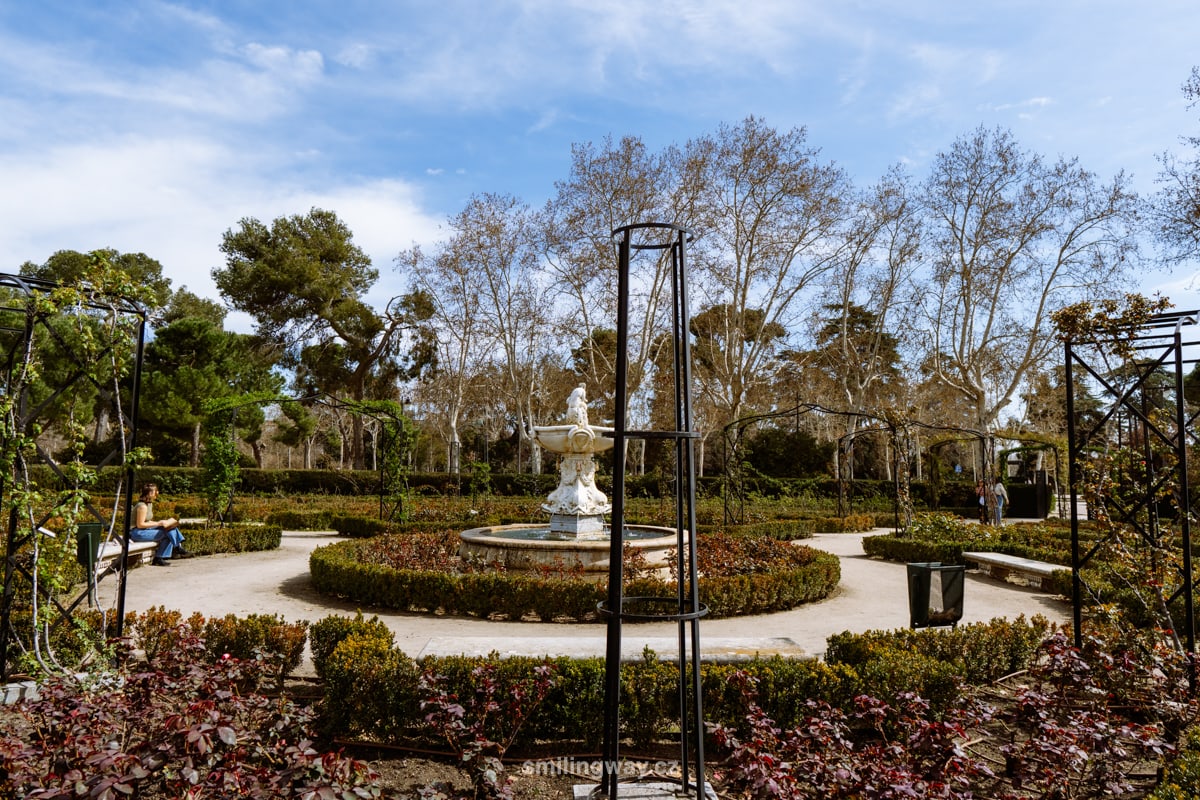
8. Puerta del Sol
Puerta del Sol is the central square in Madrid, where one of the eastern gates originally stood. It was decorated with the sun, hence the name of the square – translated as the Sun Gate.
Puerta del Sol Square is home to several important points of interest for Madrid’s citizens. Across the main entrance of the Casa de Correos post office building is a stone plaque marking kilometre 0. All distances in Madrid are counted from that point.
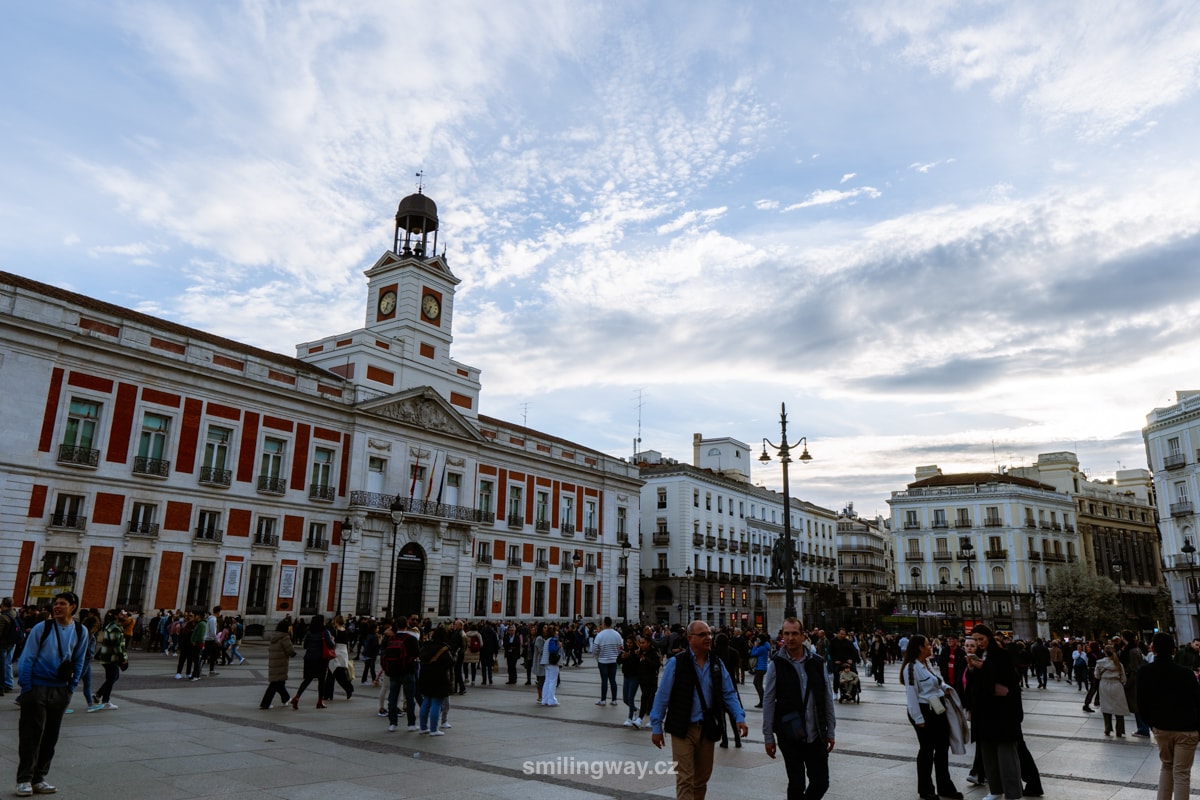
Even the building itself is worth noticing. Every Madrid resident knows it, as the clock at the top is used for the TV countdown on New Year’s Eve. On New Year’s Eve, it is a tradition for locals to eat a grape wine ball for good luck with every ringing of the bell in the square (12 in total).
There is also a statue of a bear by a strawberry tree (El Oso y El Madroño) right in the square, which has been a symbol of Madrid since the Middle Ages and represents the coat of arms of Madrid.
Take a stroll through the streets of the historic centre, lined with historic houses with colourful facades.
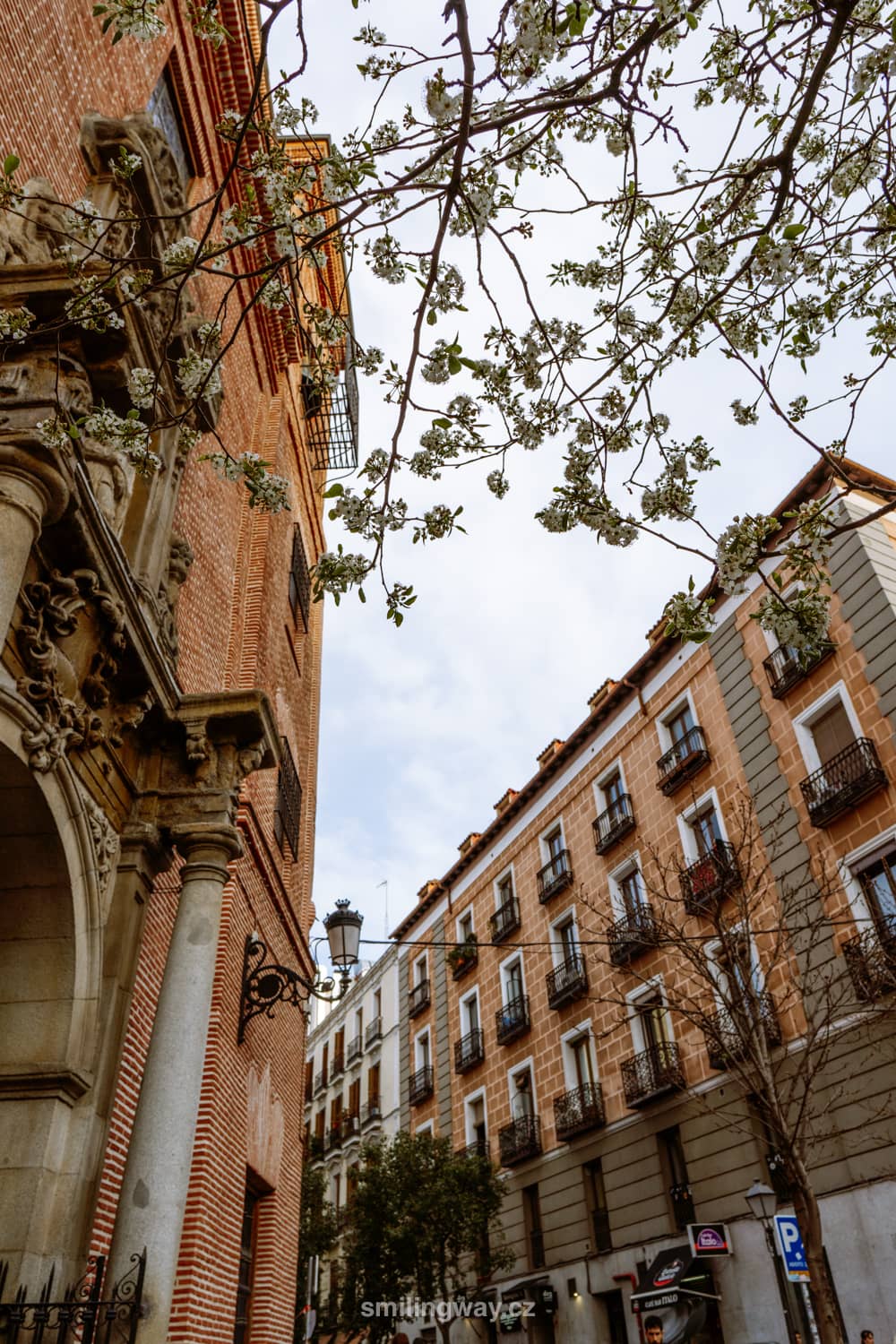
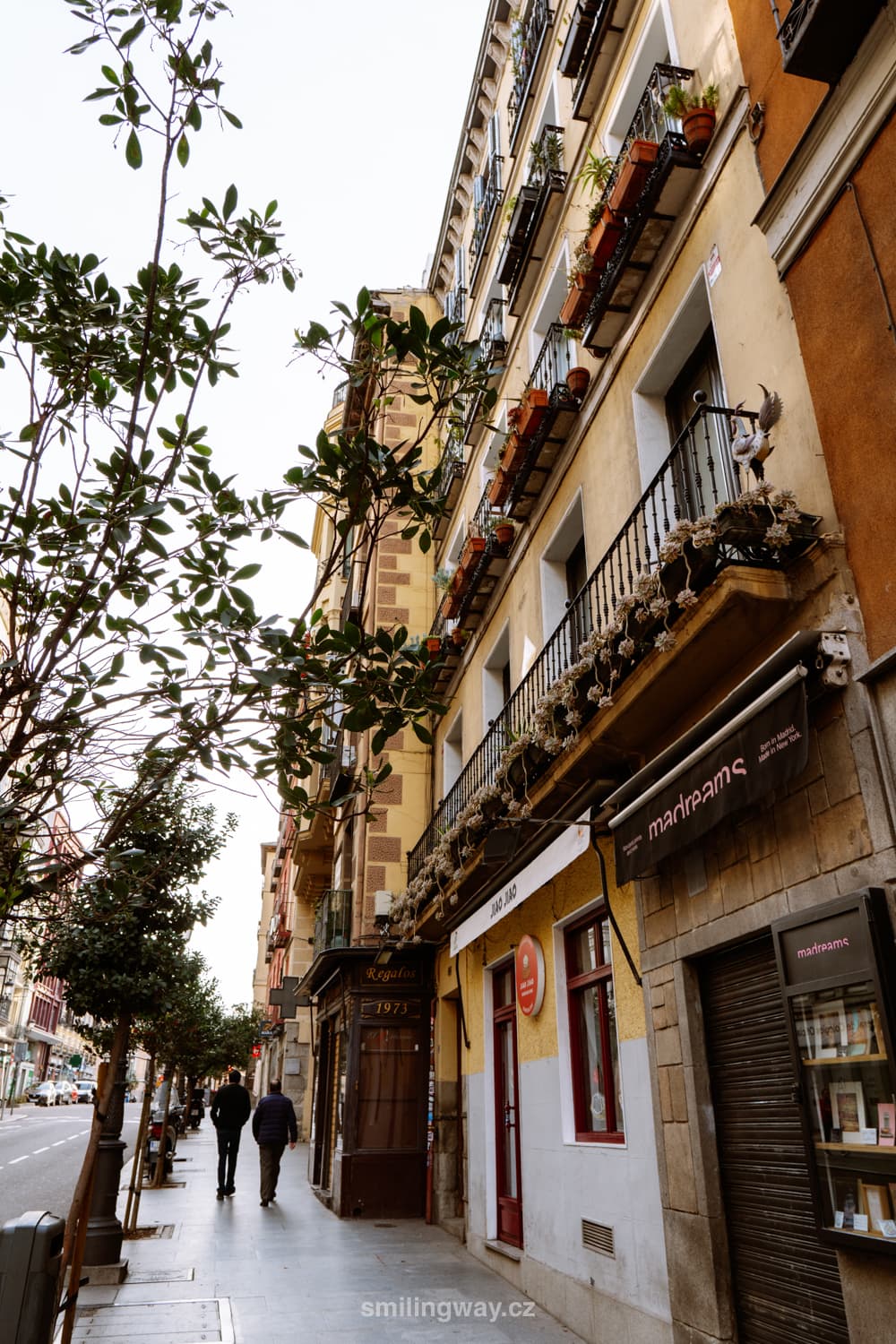
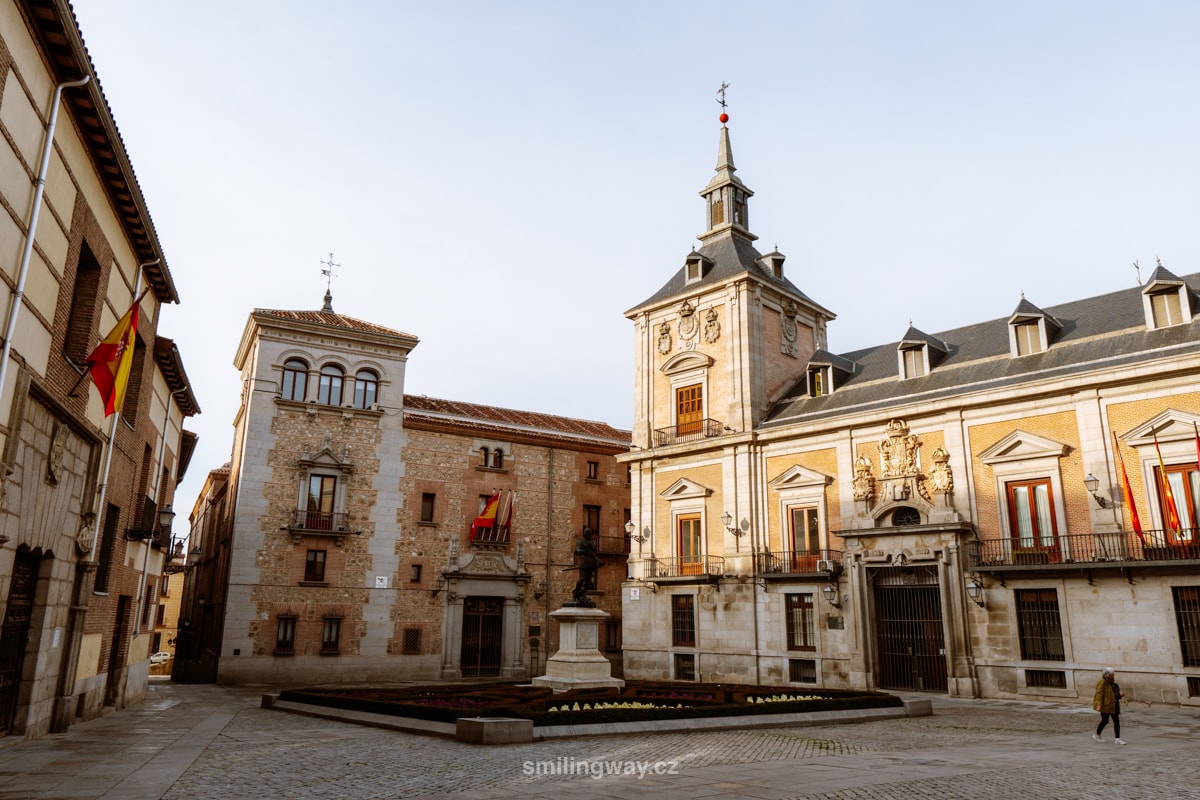
9. Royal Botanic Garden
The Royal Botanical Garden is a paradise of greenery where you can relax. It lies to the south of the Prado Museum and is flanked on the other side by El Retiro Park.
The gardens are decorated with more than 5,000 species of plants, including bonsai and exotic trees, spread over 4 terraces and greenhouses. In the centre of the gardens is a statue of King Carlos III, who was responsible for moving the gardens from the banks of the Manzanares River.
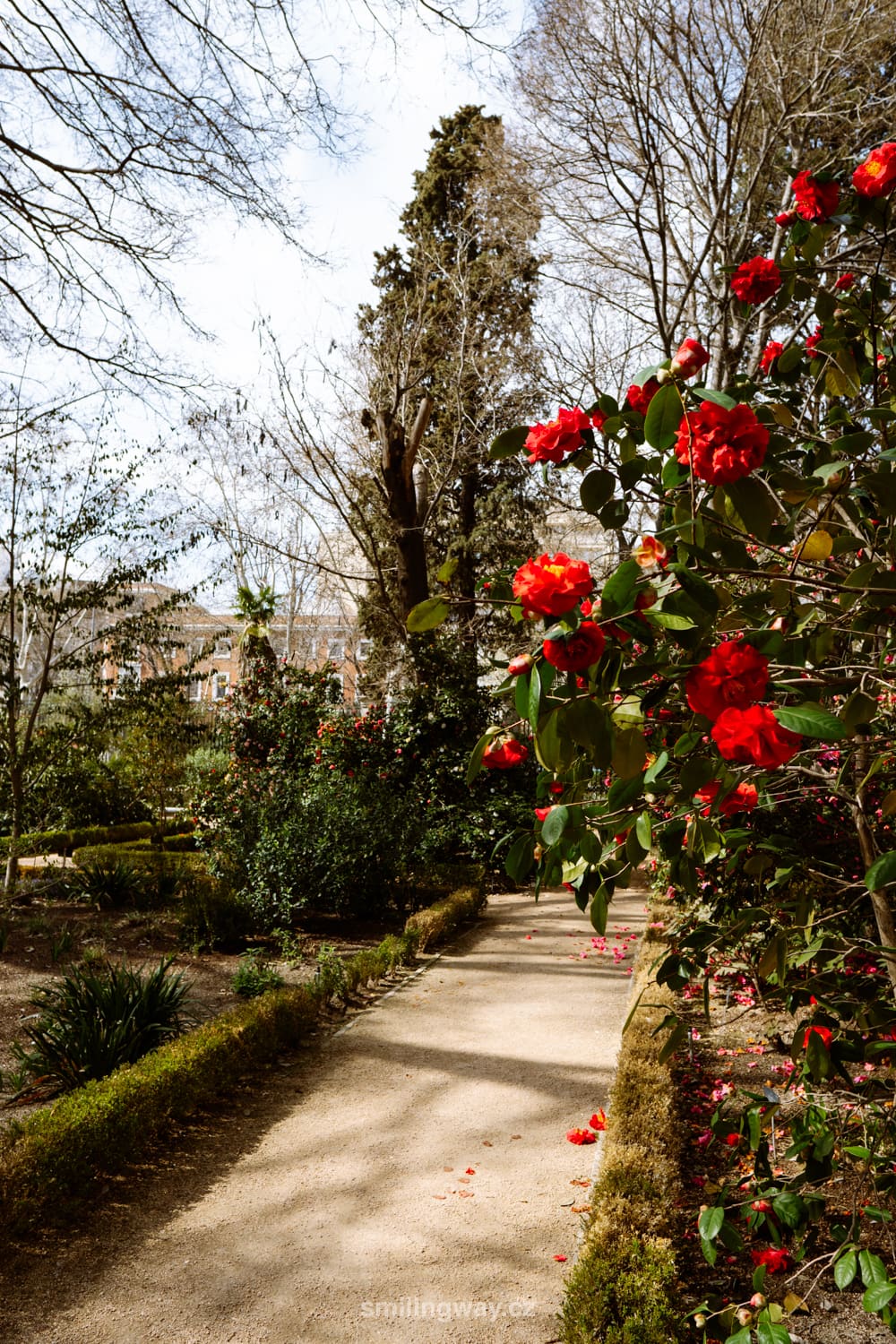
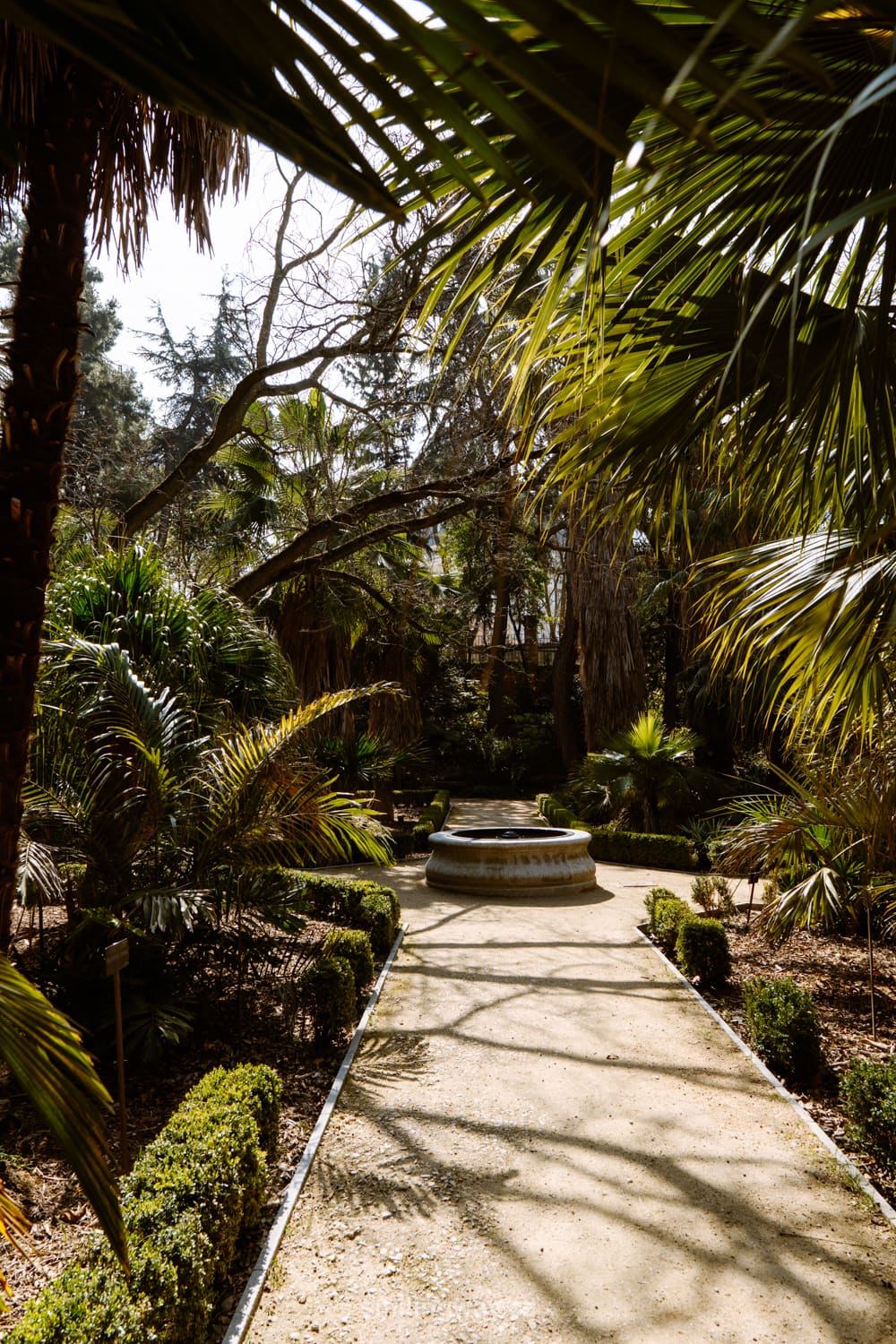
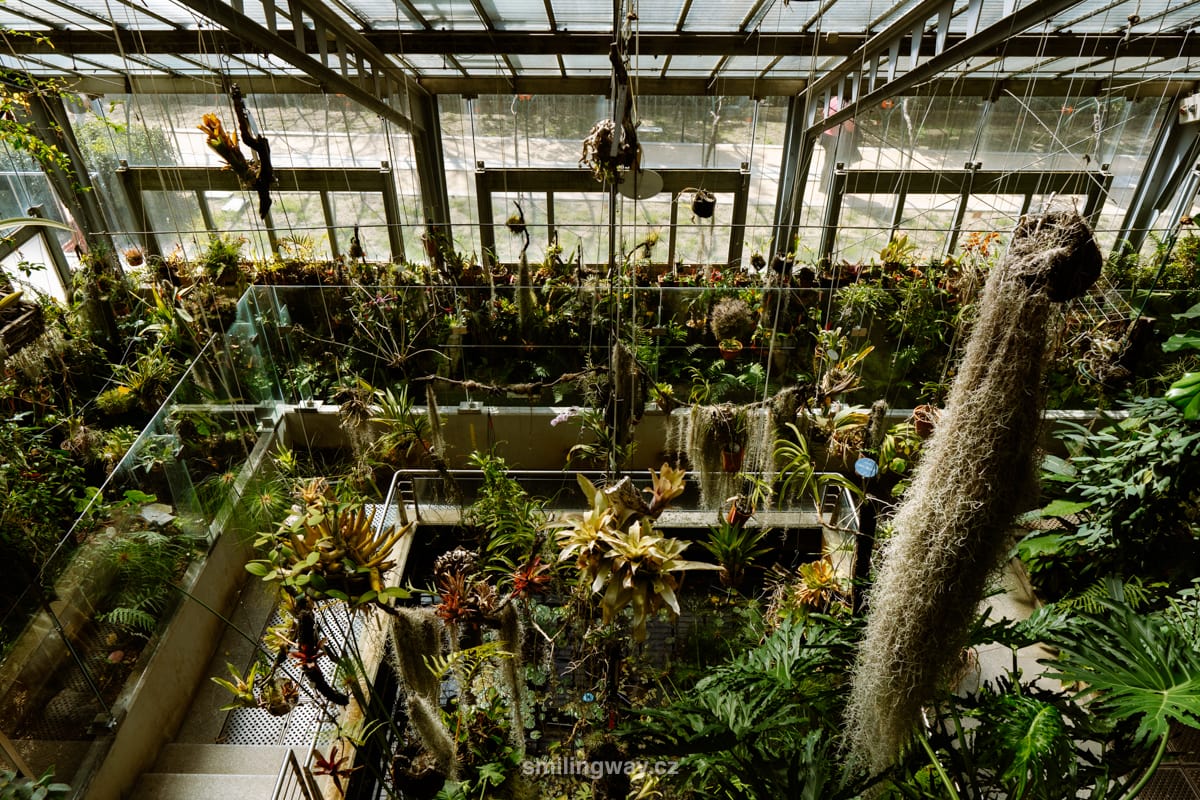
The botanical garden has plenty of benches where you can relax, a café and free toilets. Admission is €5, free for children and students. It is open daily from 10:00-18:00, longer in the summer months.
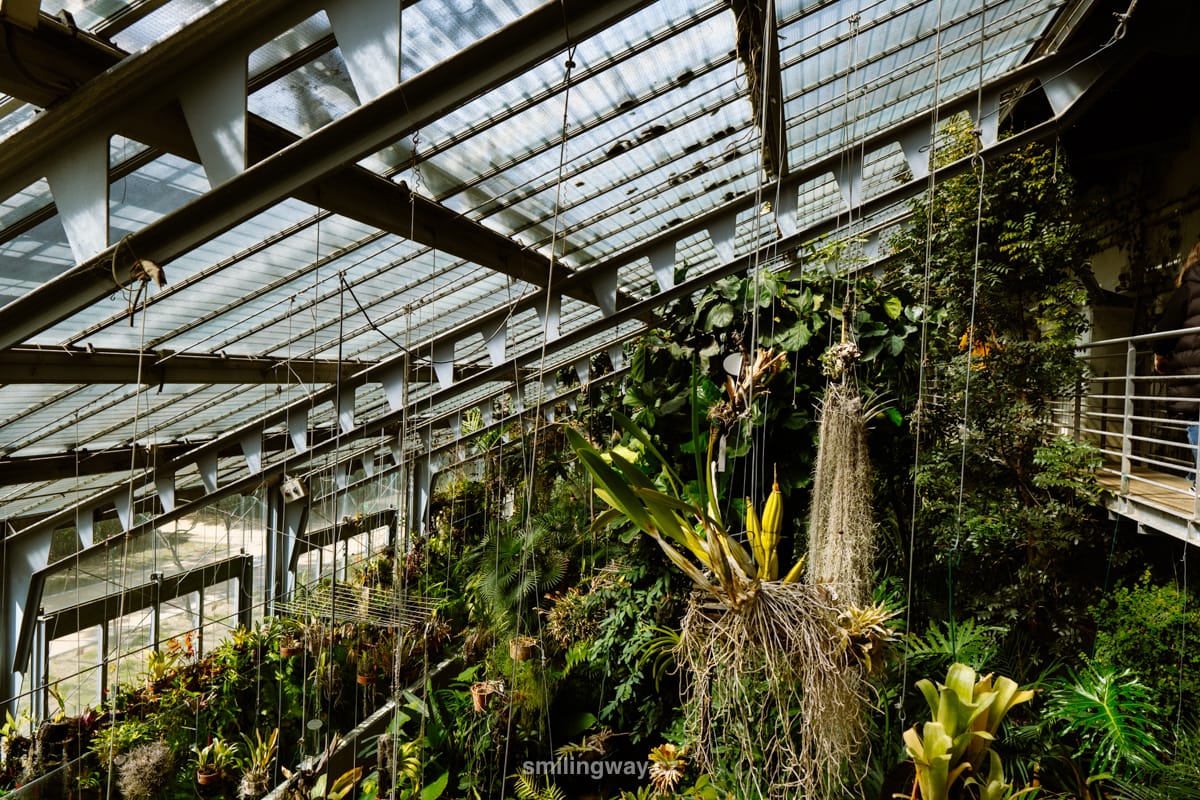
10. Thyssen-Bornemisza Museum
Madrid is famous for its art. Another world-class museum is the Thyssen-Bornemisza Museum. It takes its name from Baron Thyssen-Bornemisza de Kászon, who used to own the building.
What makes the museum different is that it brings a wide range of artistic styles – you will find both English and German school artists (Hans Holbein, Hans Baldung Grien, Albrecht Dürer), as well as a large collection of American Abstract Expressionism and a number of Impressionist and Post Expressionist works (Monet, Renoir, Degas). The entire collection is completed by Renaissance masters (Tintoretto, Veronese, Rembrandt).
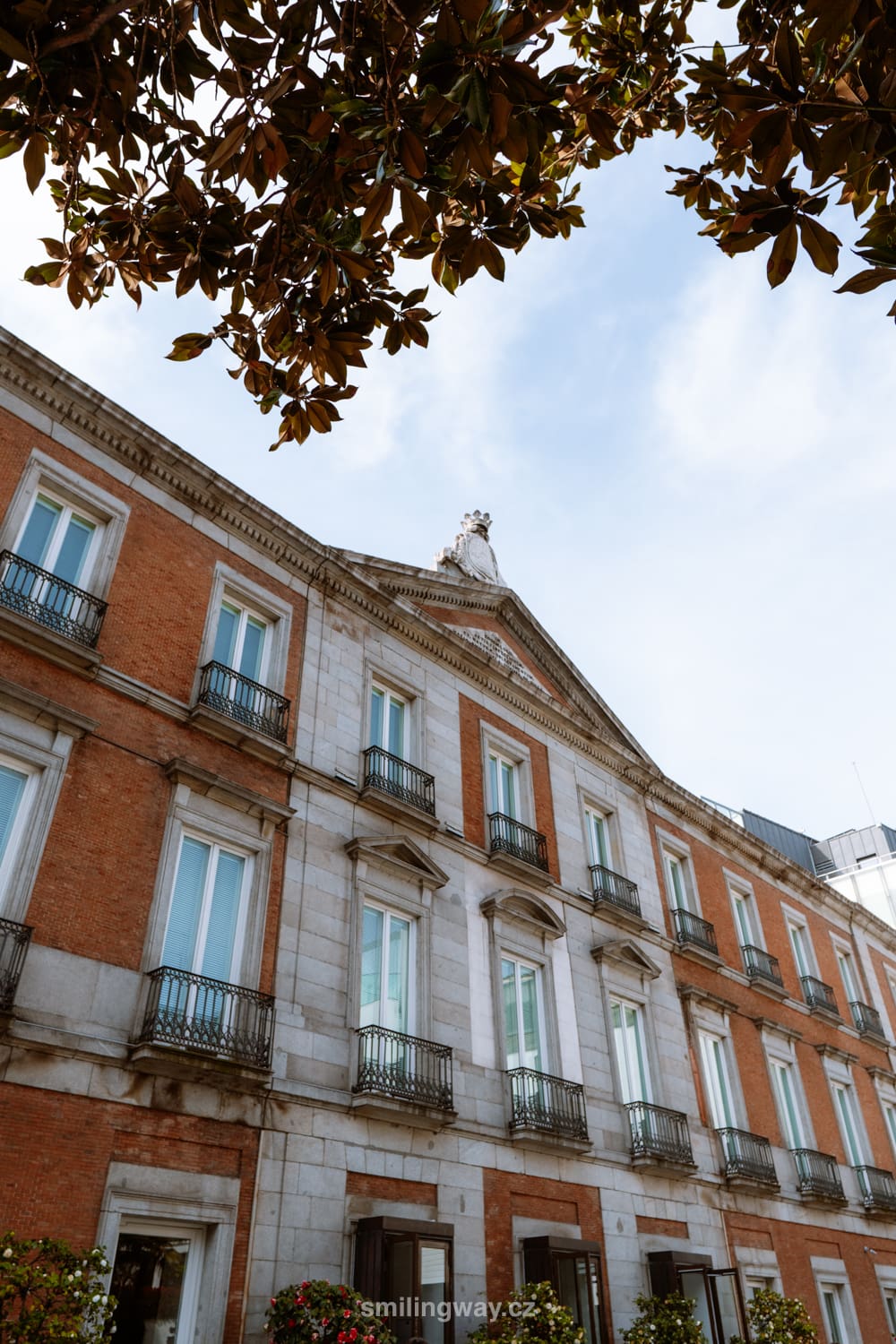
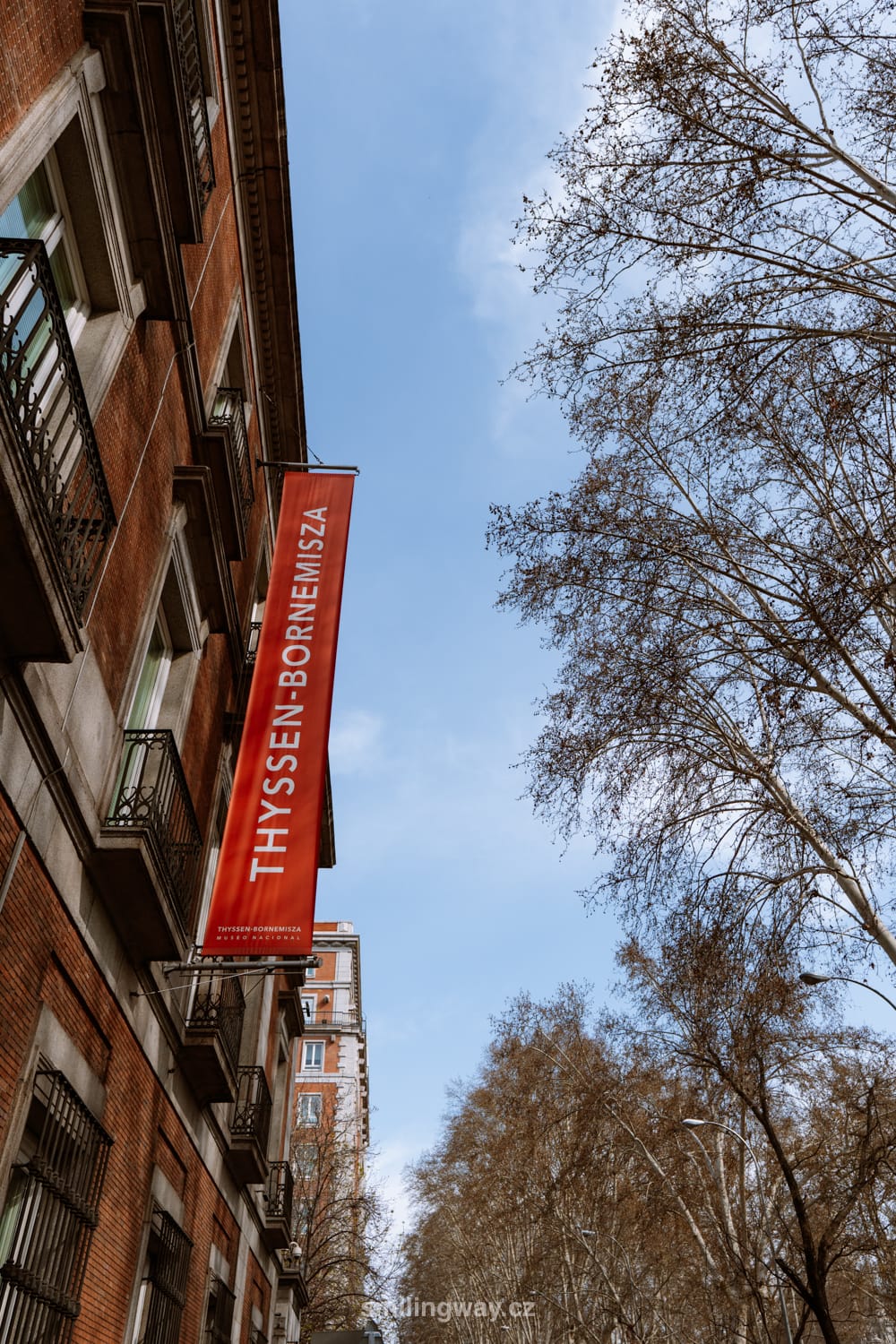
Admission to the Thyssen-Bornemisza Museum is €13 and reduced admission is €9 for students under 25 and seniors over 65. Children up to 18 years of age and persons with a Disabled Persons Card are admitted free of charge.
Every Monday is free for everyone. No need to book in advance – in high season it’s better to come first thing in the morning or later in the afternoon if you want to avoid the crowds.
The museum is open daily at the following times – Monday 12:00-16:00, Tuesday to Sunday 10:00-19:00.
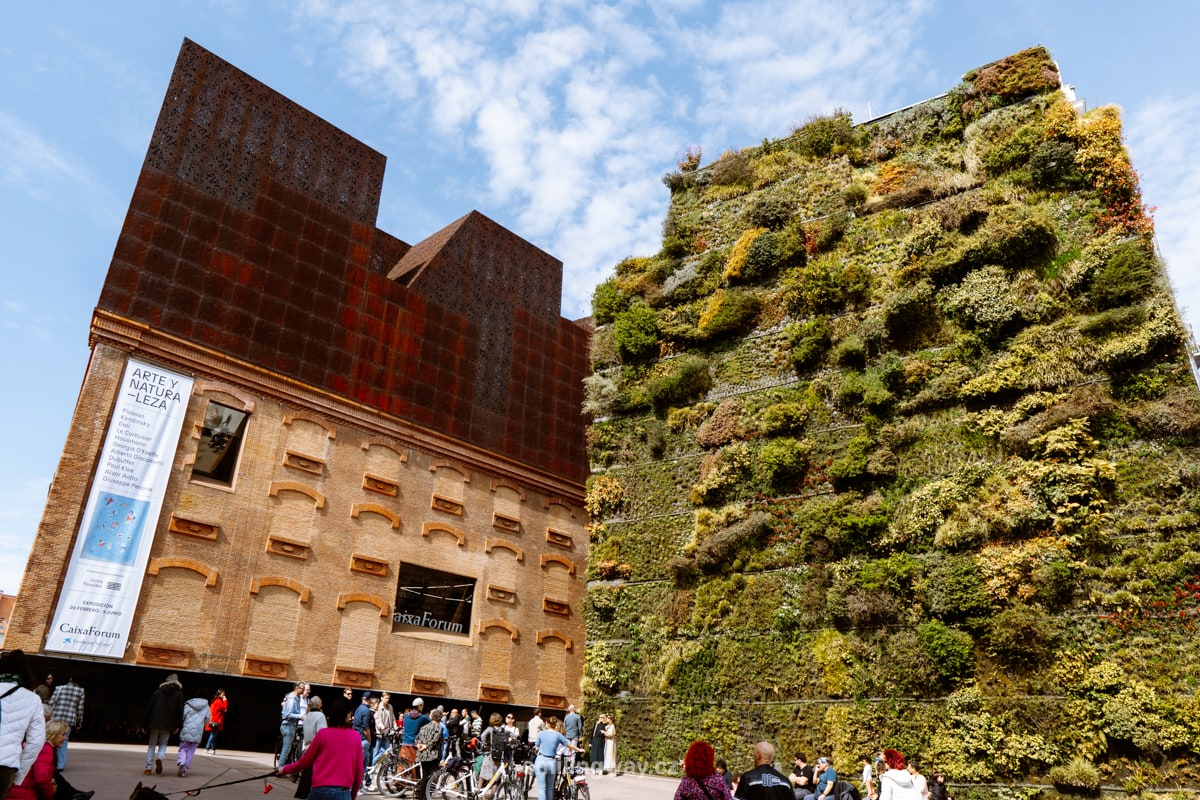
11. Queen Sofia Museum (Museo Reina Sofía)
Museo Reina Sofía is Madrid’s finest contemporary art gallery, originally the site of a public hospital. Together with the Prado and the Thyssen-Bornemisza Museum, the museum is part of the Golden Triangle of Art. Each museum contains different collections that complement each other.
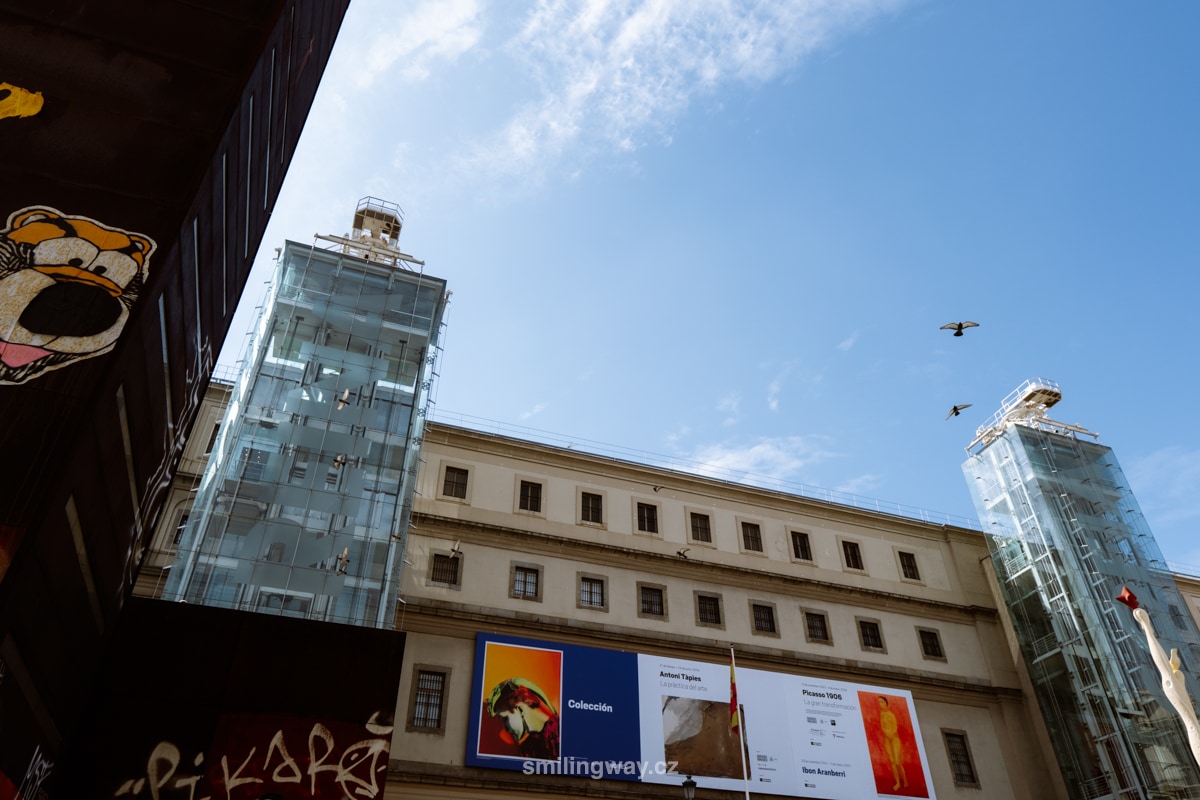
The Reina Sofía Museum encompasses a variety of styles from Cubism, Surrealism and other art movements of the 20th century, including sculpture. It specializes mainly in Spanish artists (Picasso, Dali, Miró), but you can also find other artists from outside Spain (Braque, Kandinsky).
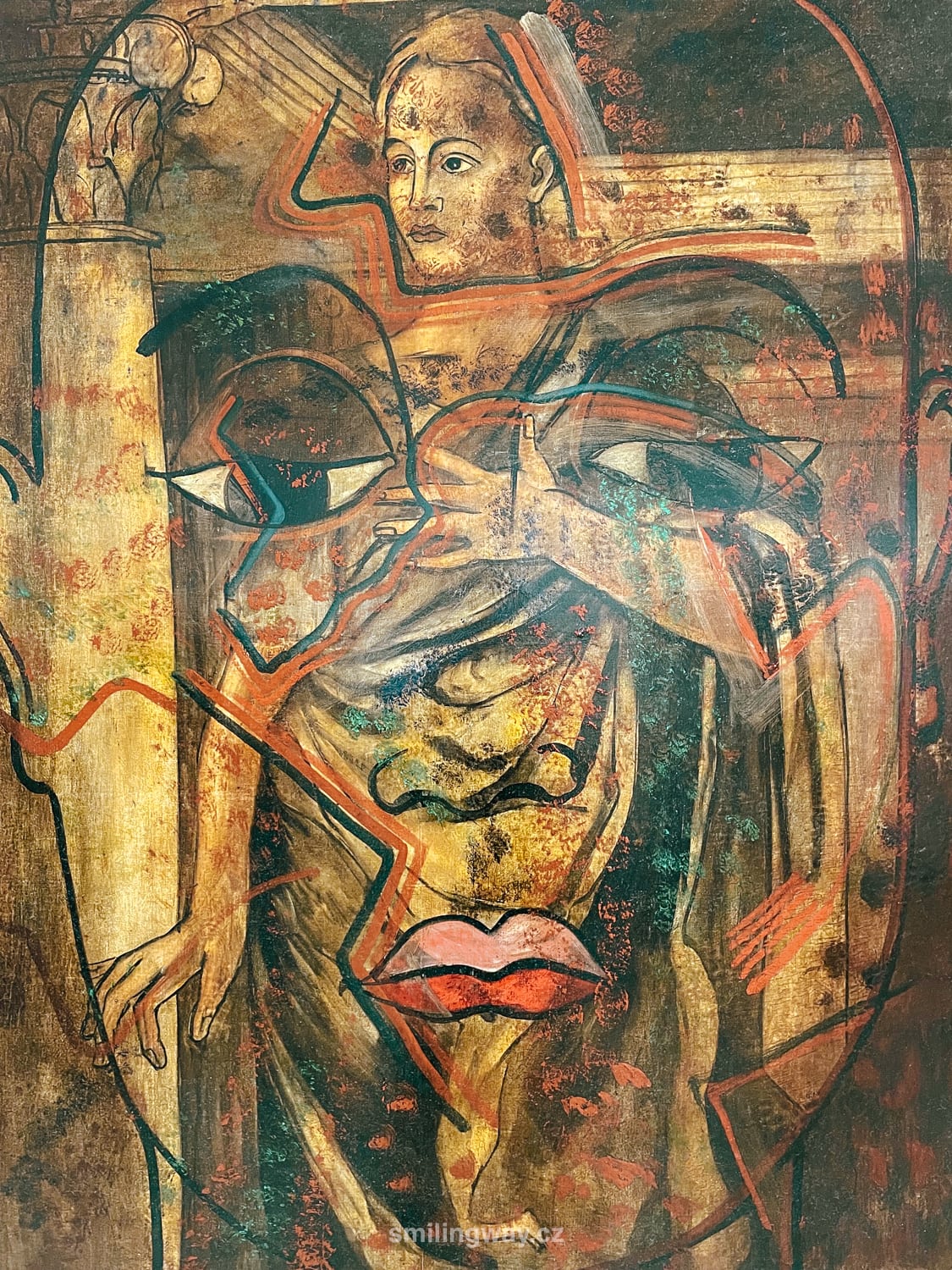
The most famous work is Picasso’s Guernica, a monumental canvas where Picasso was inspired by Hitler’s bombing of Guernica.
Another popular attraction is the glass elevator ride, which offers a view of the adjacent square and the rooftops of the surrounding buildings.
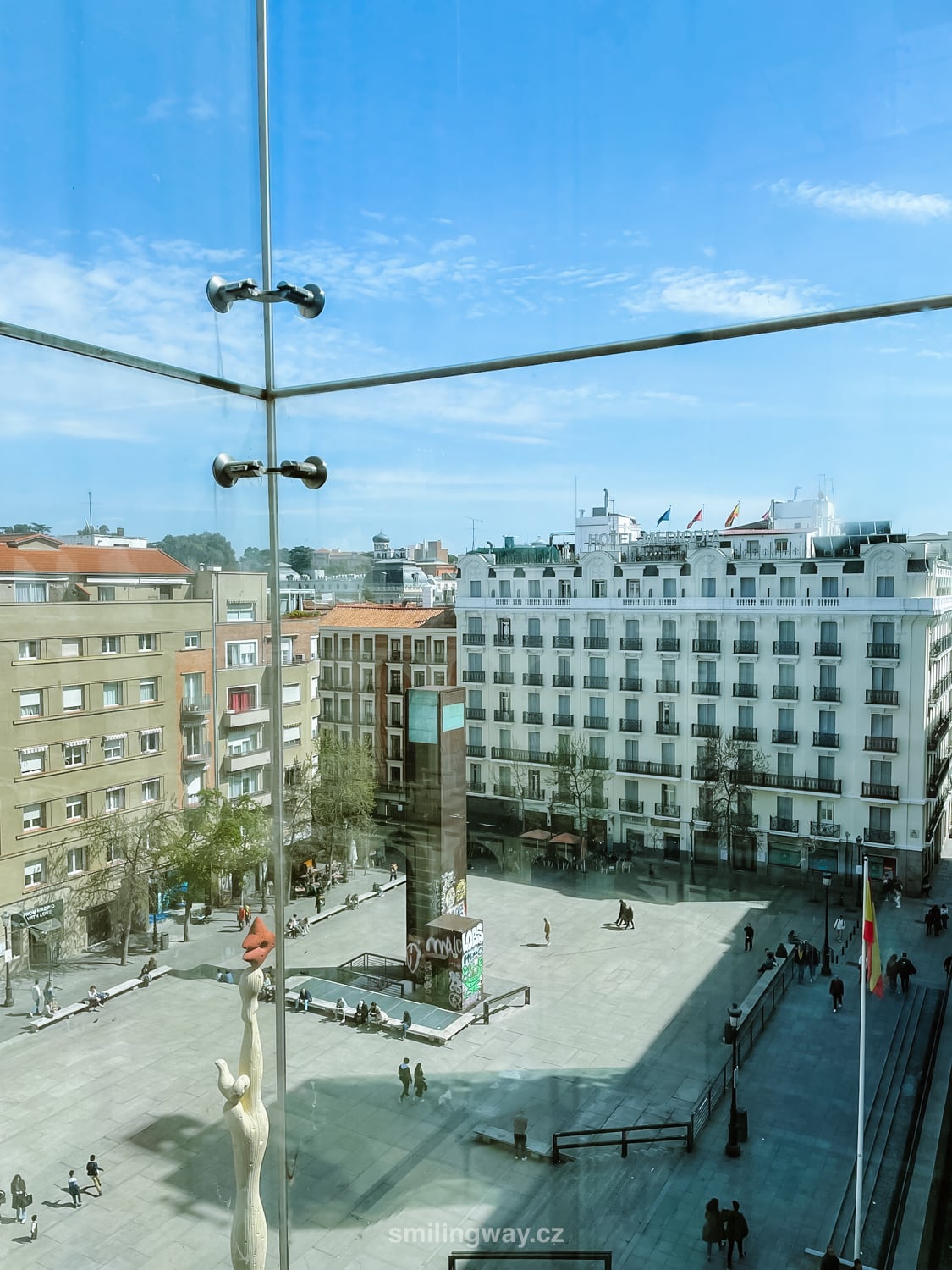
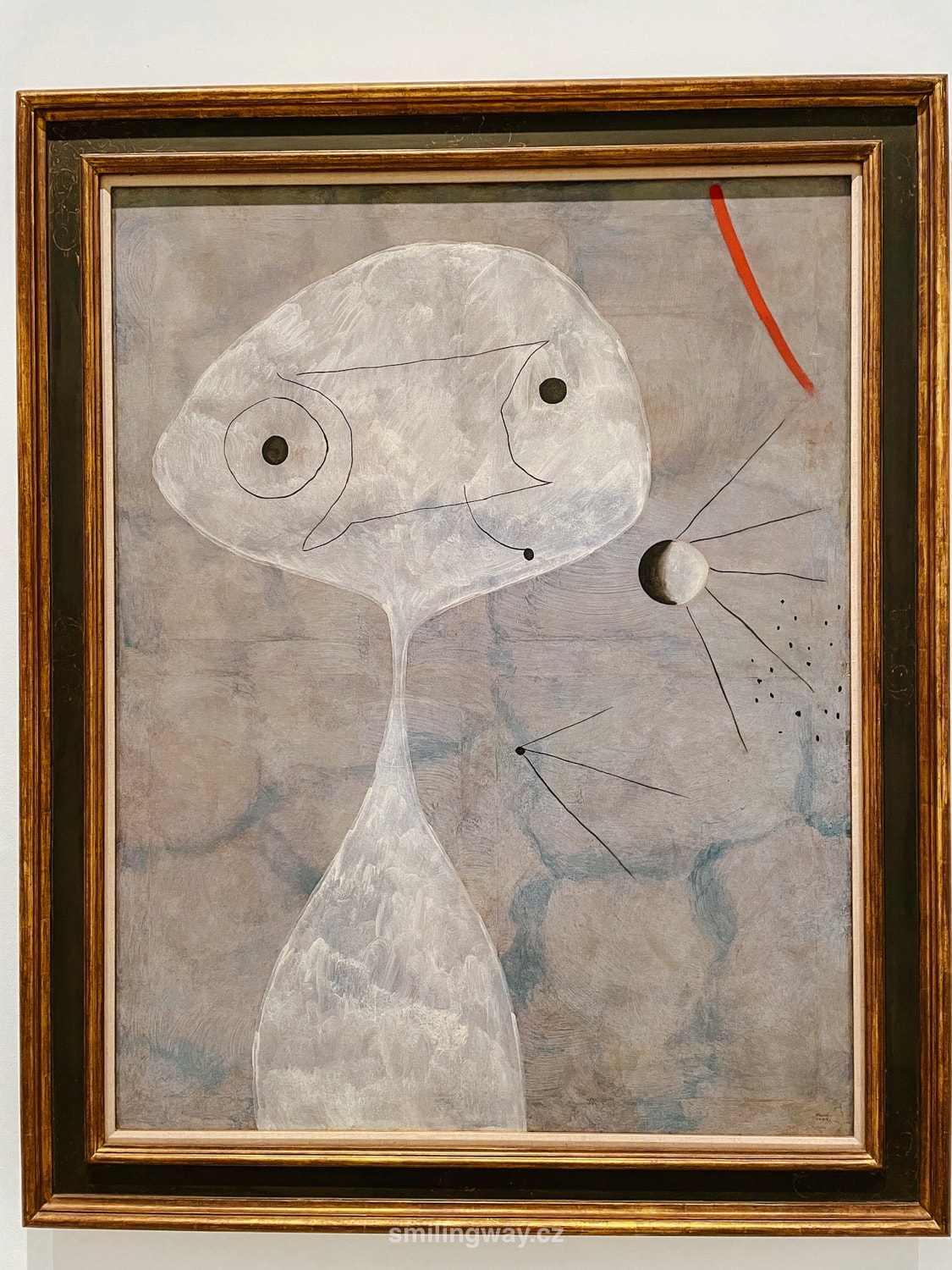
Admission and opening hours of the Reina Sofía Museum
Except for Tuesdays, the museum is open daily from 10:00-21:00 and on Sundays from 10:00-14:30.
Admission to the Reina Sofía Museum is €12, with free admission for children under 18, students under 25, seniors over 65 and disabled people. Free admission to all daily 2 hours before closing time, but be prepared for lines.
How to skip the queues for the Reina Sofía Museum: If you book tickets to the Reina Sofía Museum in advance, you go straight to the entrance – the ticket queue is on the left, the advance booking entrance is on the right.
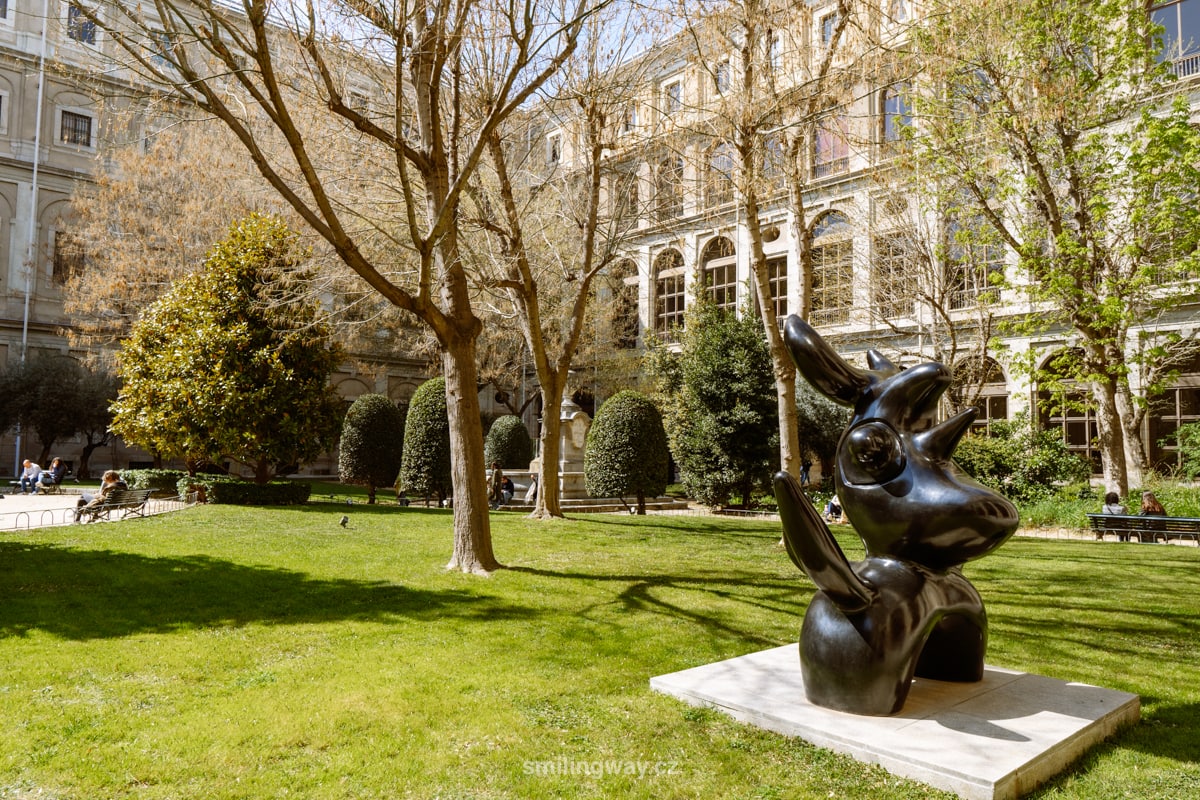
12. Gran Vía
Gran Vía is the most famous avenue in Madrid, lined with beautiful buildings with ornate facades. It connects the Cibeles Palace and the Spanish Square. The class is a popular place for shopping, entertainment, culture and nightlife. I recommend to walk through it day and night.
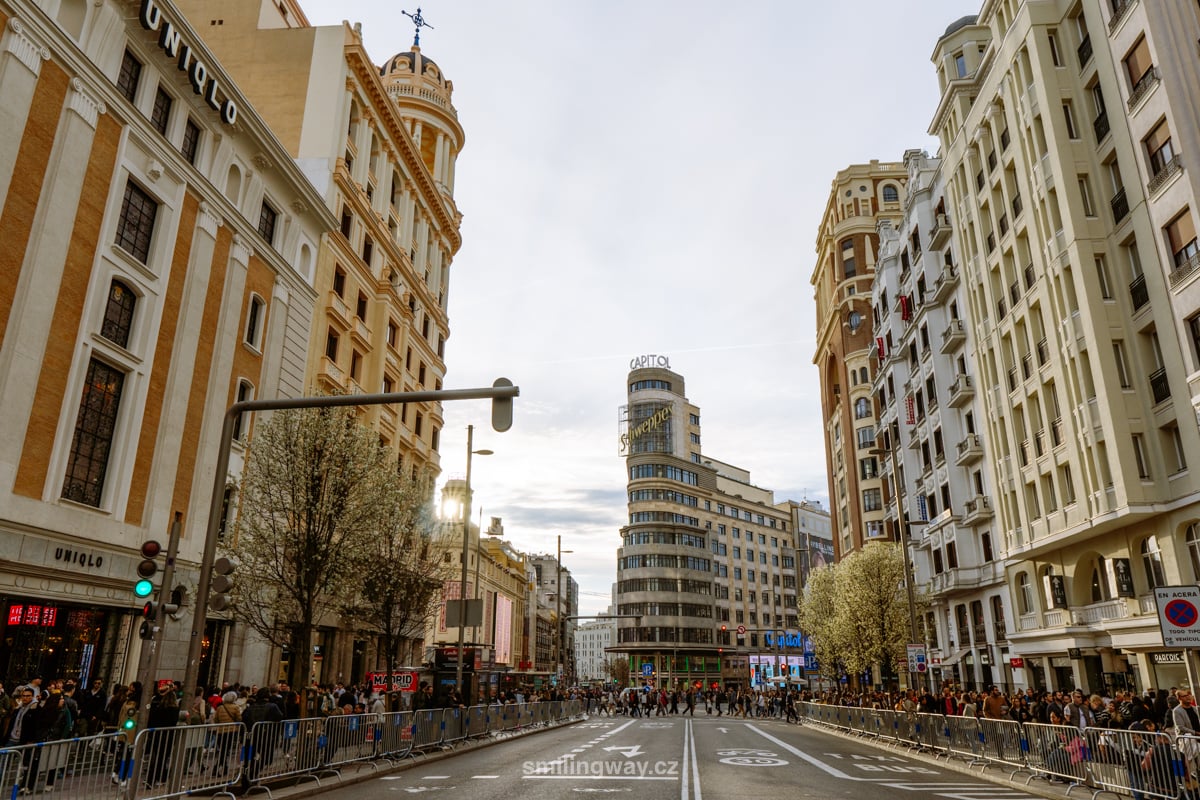
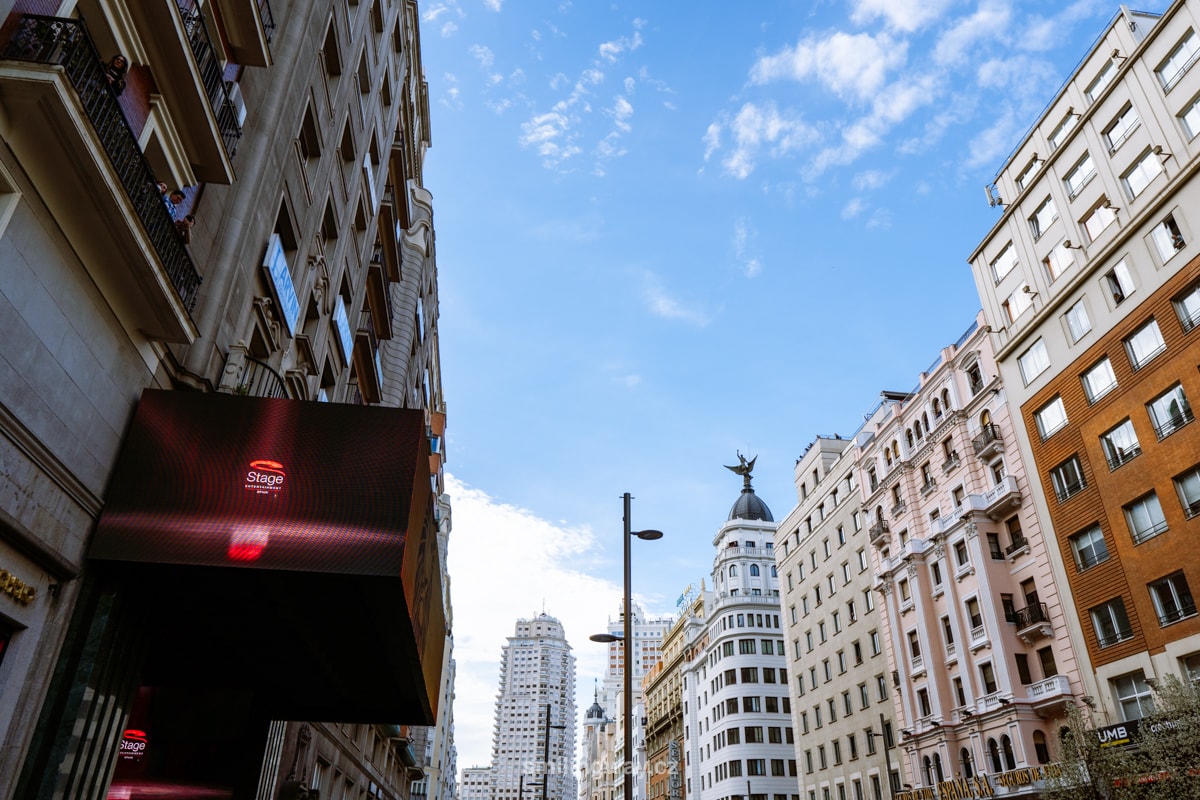
For one of the best views of the Gran Vía, don’t miss the view from the Circulo Bellas Artes skyscraper, located just a few minutes’ walk from the Cibeles Palace (an Art Deco skyscraper).
The viewpoint is located at the bar and restaurant in 7th floor, which is open until late – Monday to Thursday 10:00-01:00, Friday to Saturday 10:00-02:00, Sunday 10:00-01:00. Admission is €5,50, reduced €4 for children, students and seniors (tickets can be bought inside in the vending machine). Children up to 6 years of age and disabled persons are admitted free of charge.
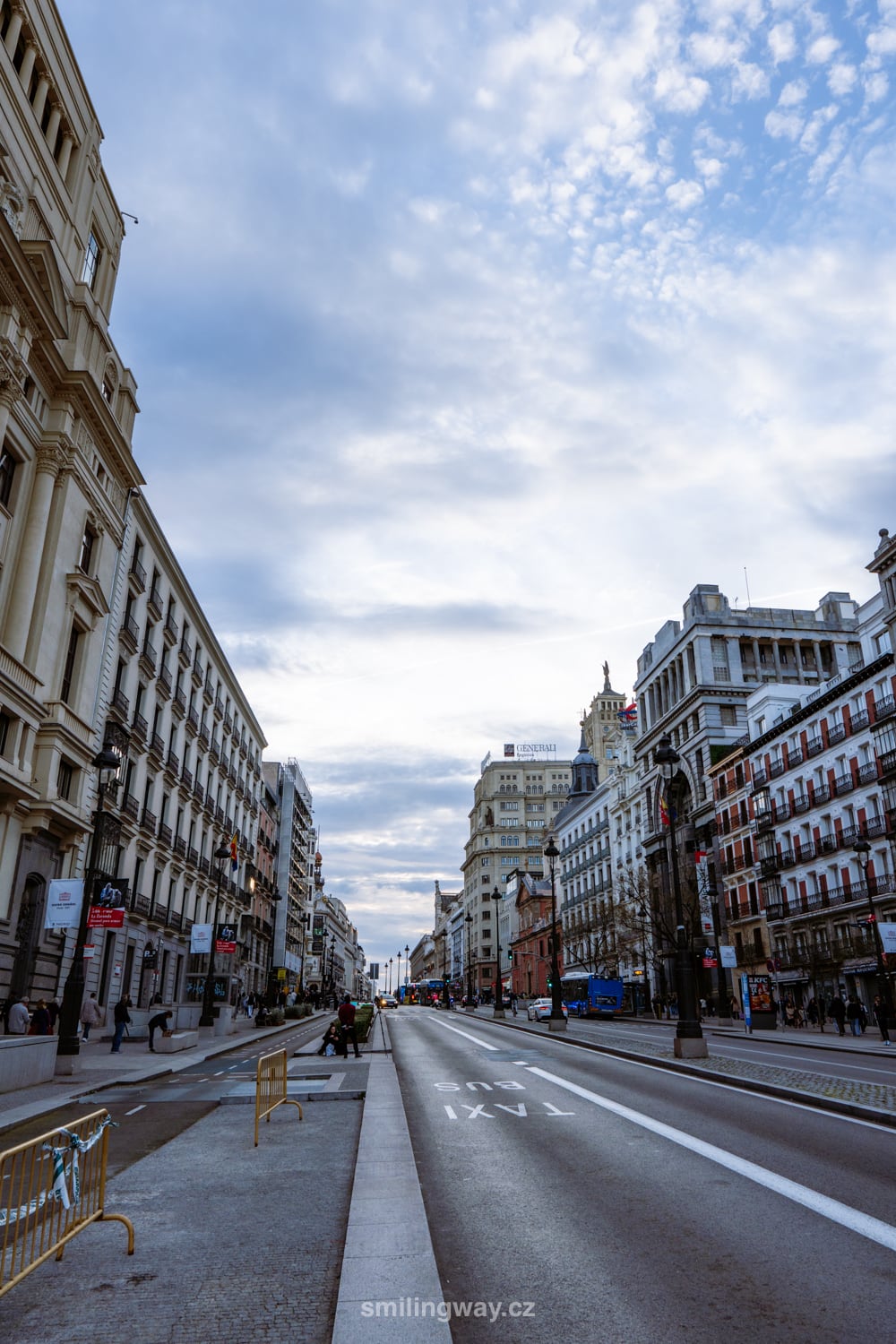
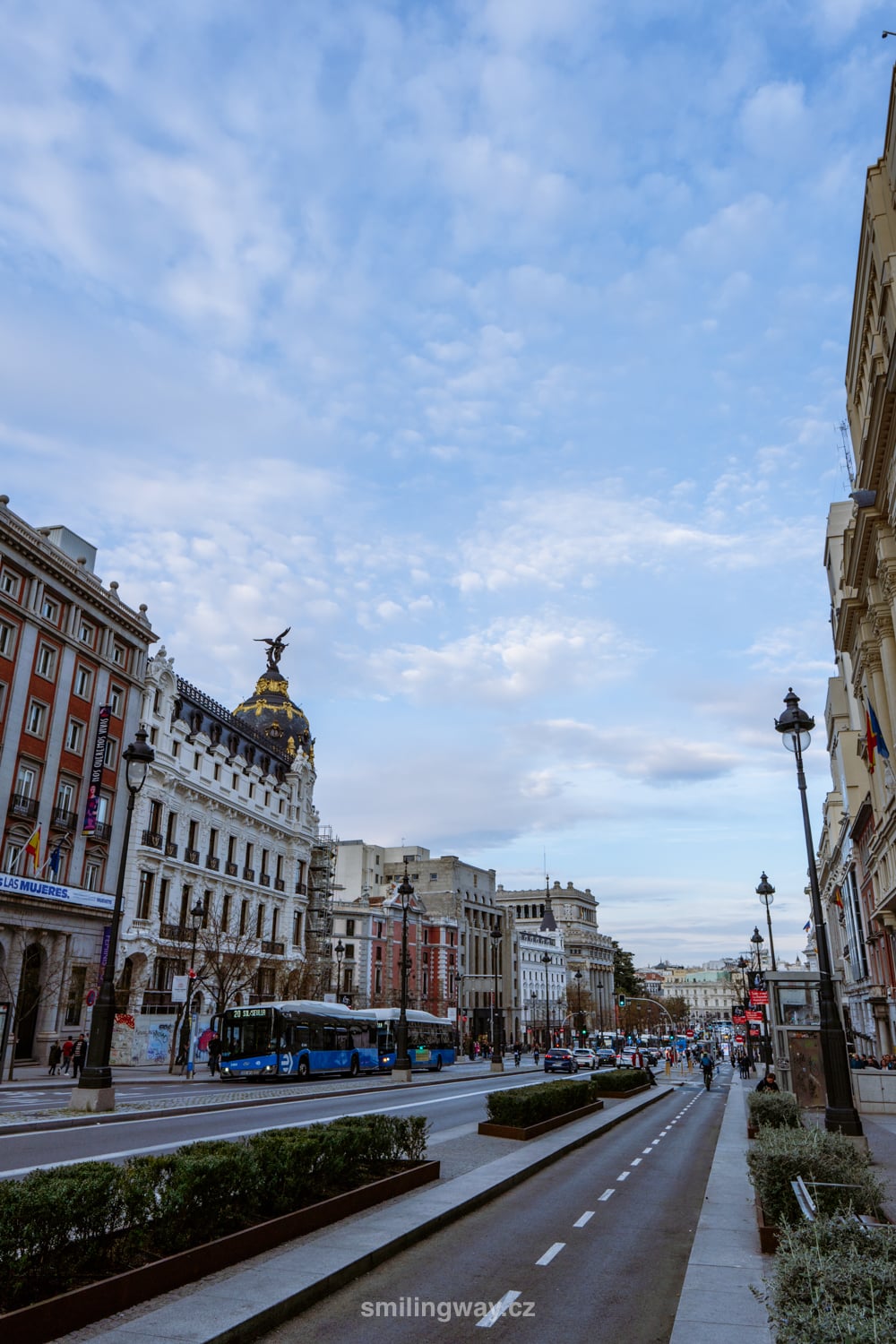
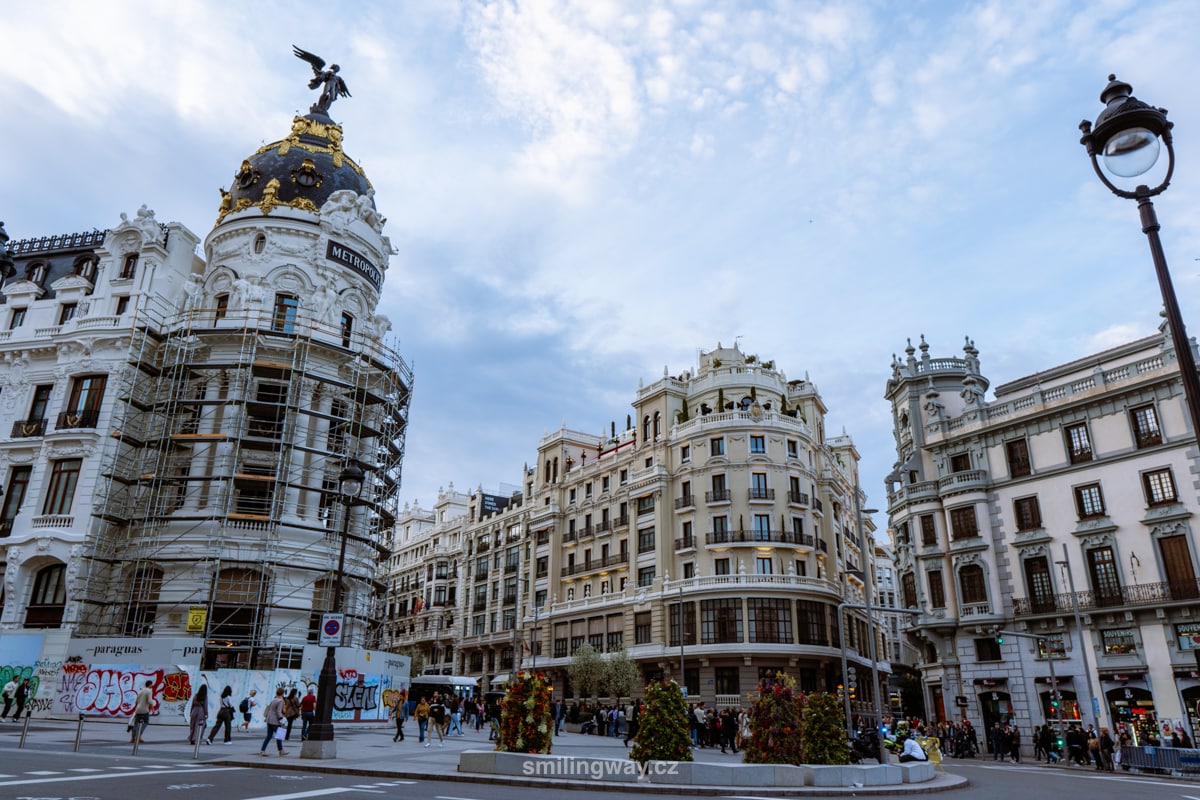
13. Plaza de España
Plaza de España is at the very end of Gran Vía. With an area of 36,900m2, it is one of the largest squares in Spain.
It is lined with Art Deco buildings, including the iconic RIU Hotel. There are restaurants, shops, benches, a children’s playground and a monument to Cervantes in the middle.
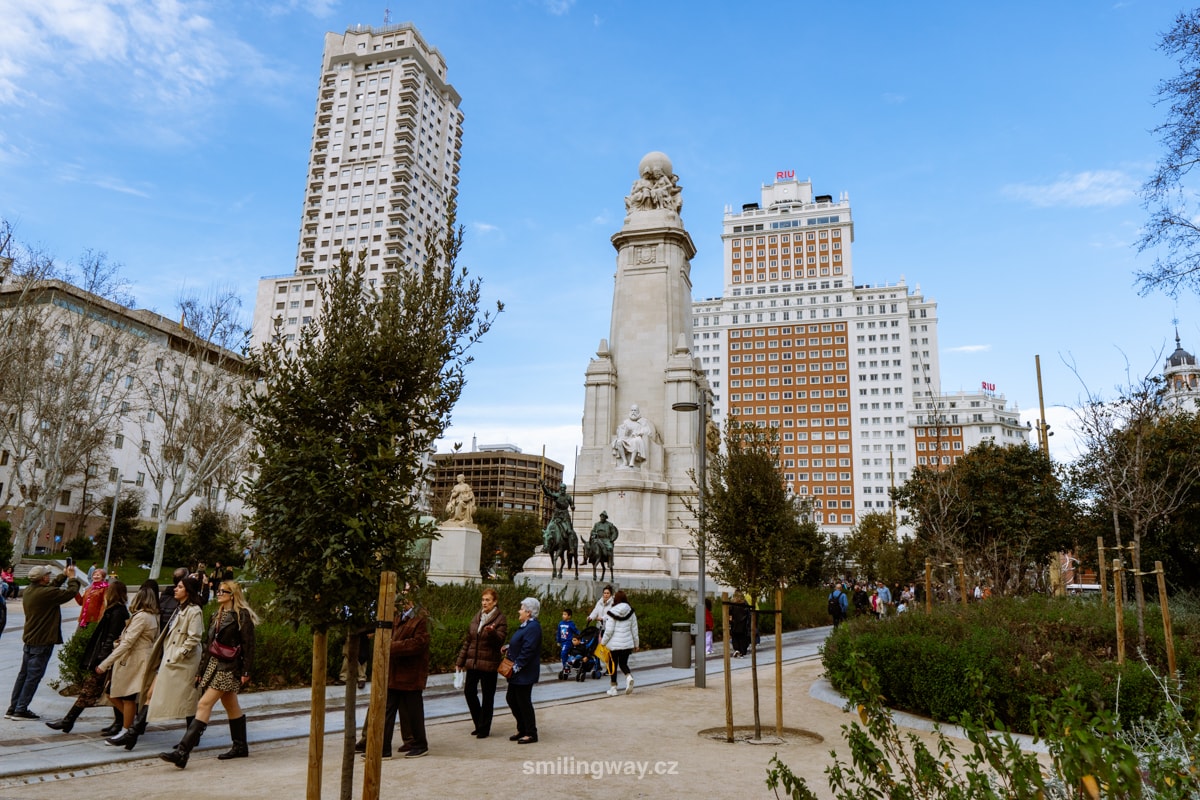
14. Go for tapas at La Latina
Typical food in Madrid? Definitely tapas. The best area to eat is La Latina, a lively neighbourhood with narrow, winding streets that boasts the largest concentration of tapas bars.
A popular local custom is the tapeo, a circuit across tapas bars where locals eat, drink and socialise with friends.
The La Latina district is incredibly lively, especially over lunch and dinner around Calle de la Cava Baja. For a quieter neighbourhood atmosphere, head to Plaza Paja with its community garden.
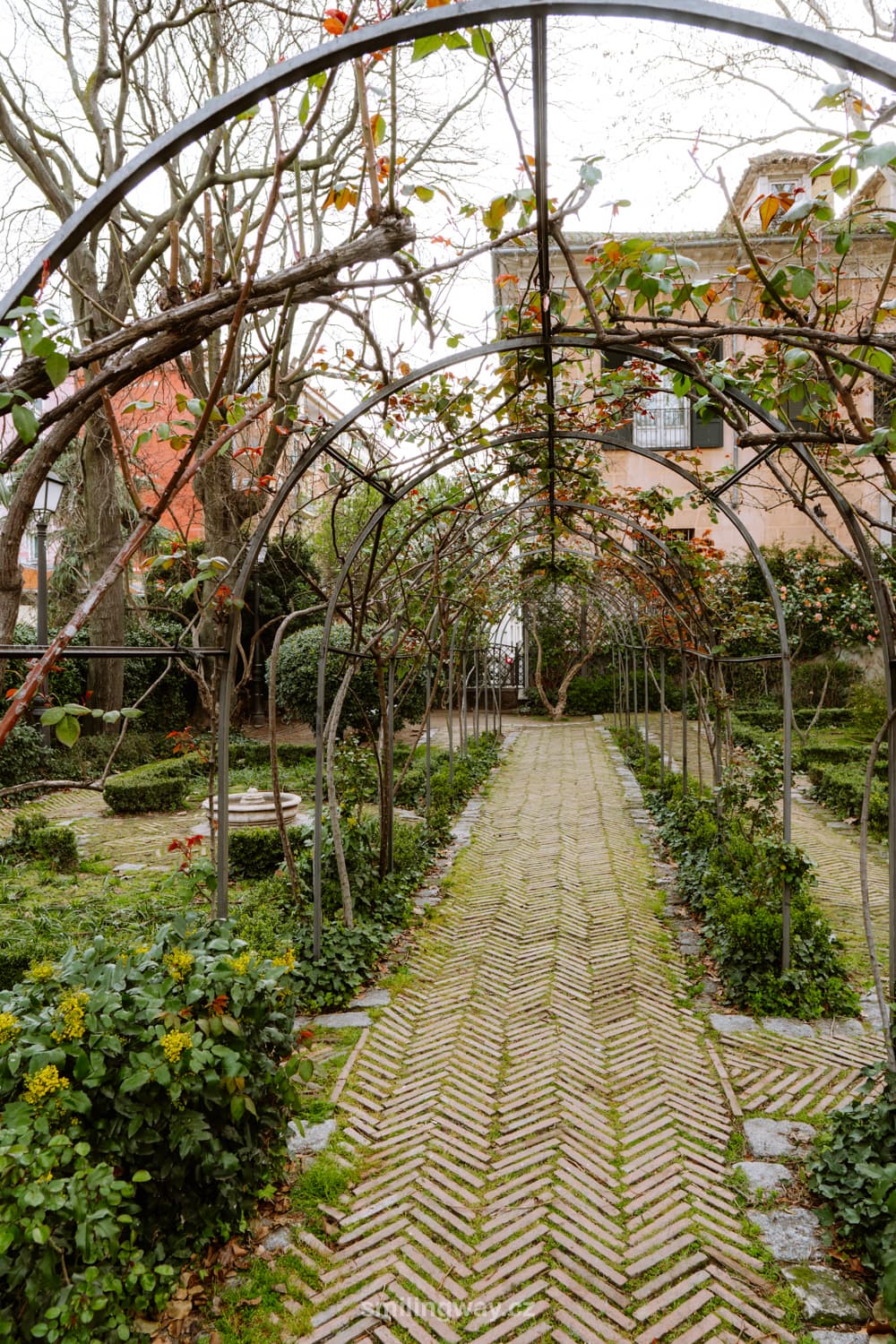
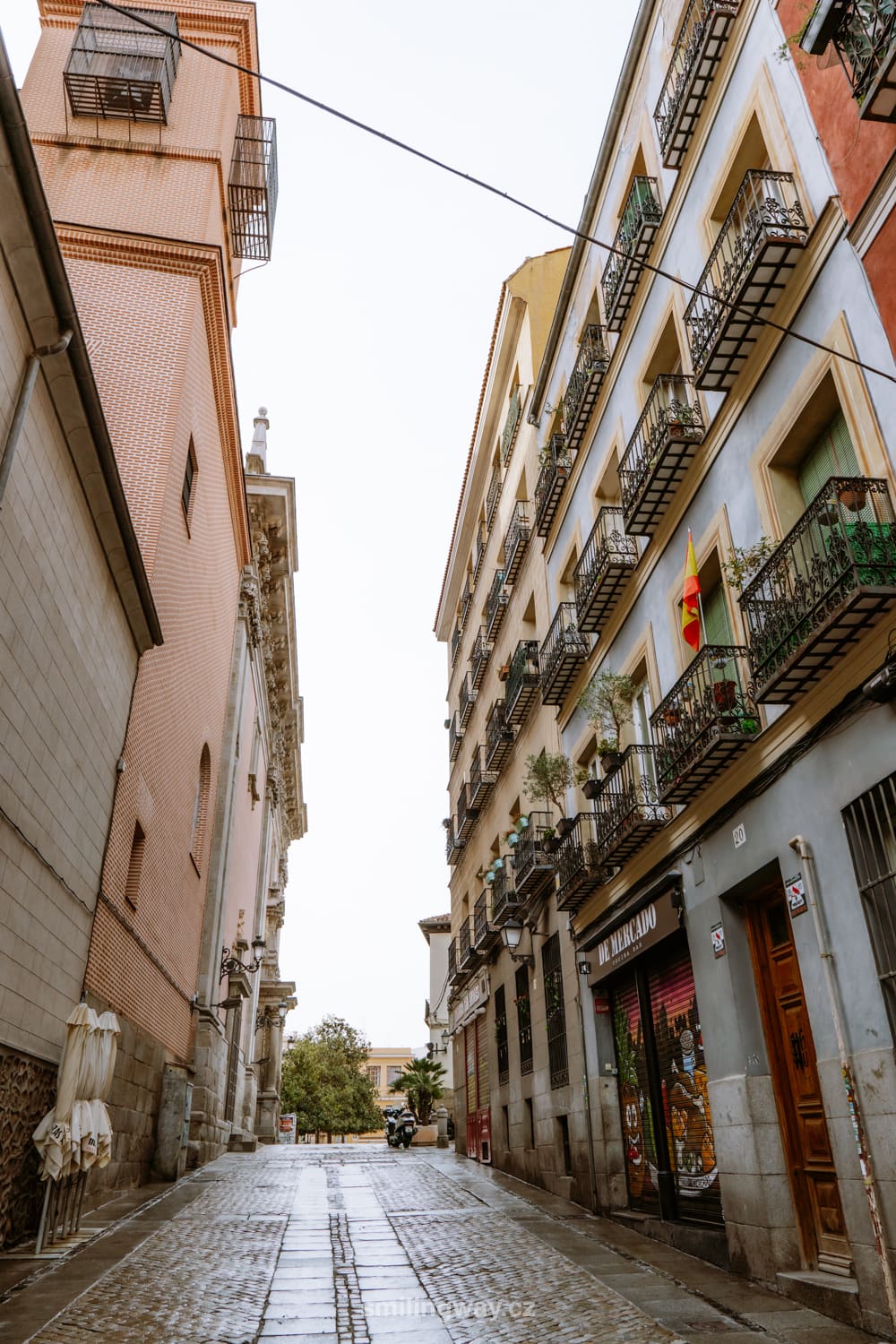
El Rastro, Europe’s largest flea market, is held every Sunday just south of La Latina station. Here you can find everything from antiques to clothes. It’s a lively place with an authentic atmosphere, but it gets very busy around lunchtime. The market opens at 8:00 and is open until 15:00.
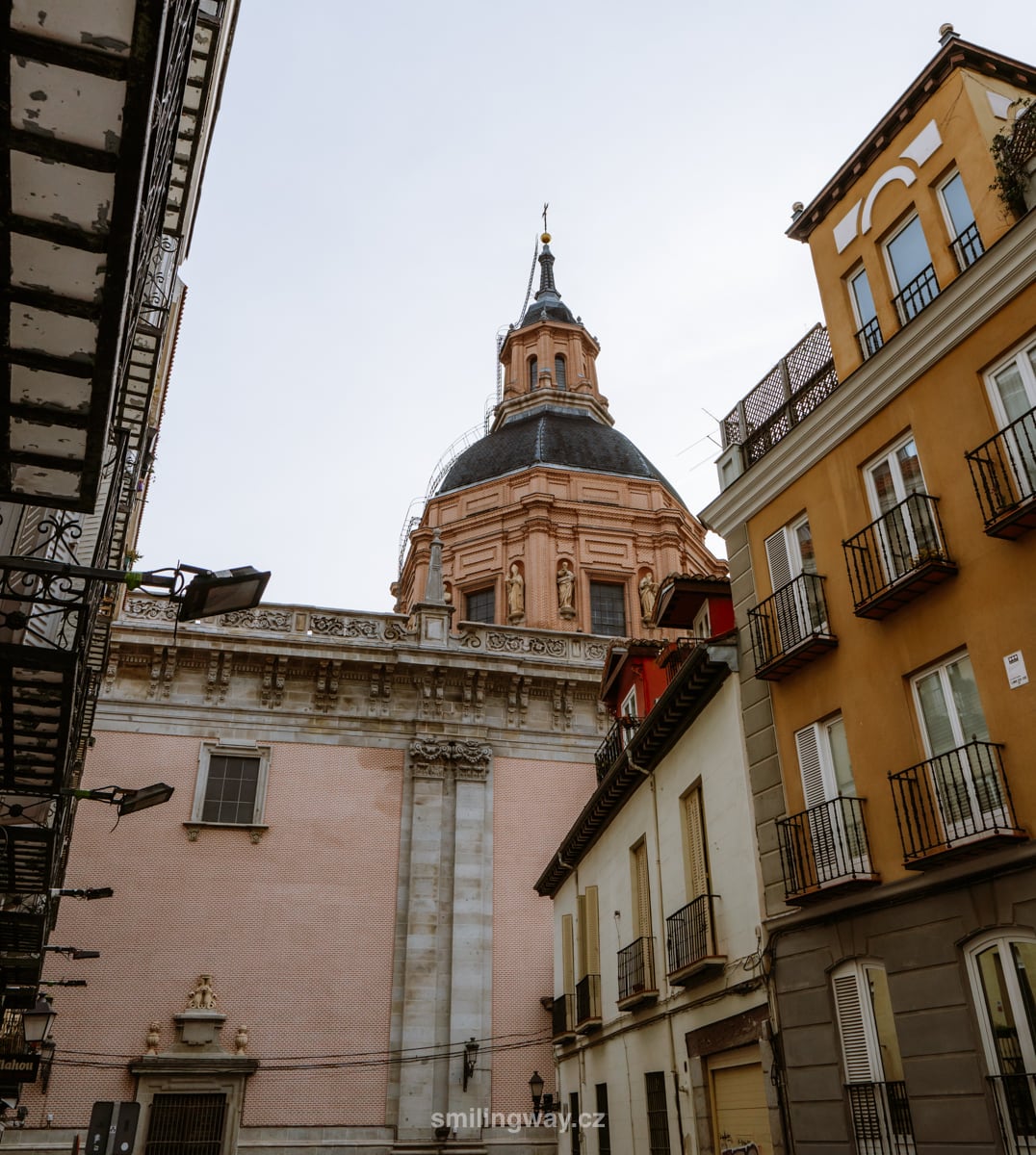
15. Temple of Debod (Templo de Debod)
A piece of Egypt in Madrid. This is exactly how one could describe Templo de Debod from 2nd century BC. And how did he get here? The temple was donated to Madrid in 1968 by the Egyptian government as an expression of gratitude for its help in saving key Egyptian monuments that were threatened by the rising waters of the Aswan Dam.
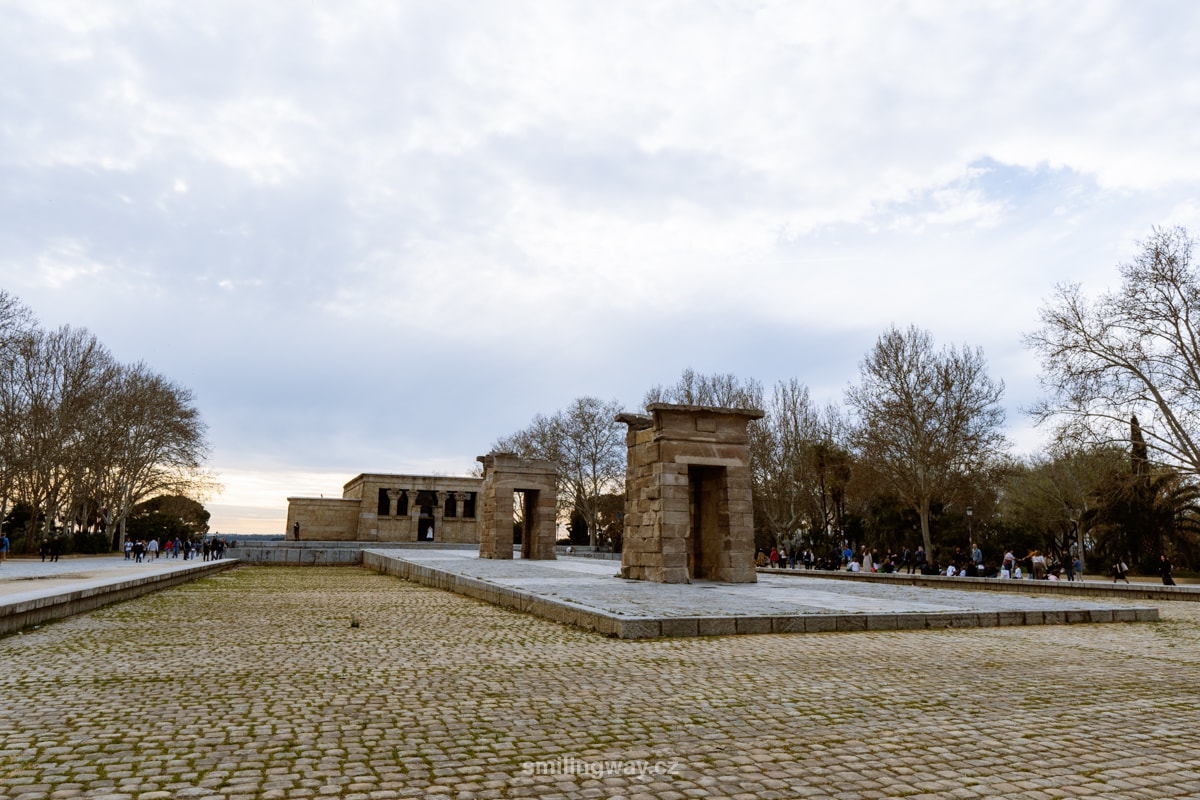
Templo de Debod is just a short walk from the Spanish Square. It is located in a park where locals like to picnic and enjoy the view of the city.
The Pargue del Oeste, adjacent to the Debod Temple, is one of the largest urban parks in Madrid. It is crisscrossed with paths, benches and points of interest. There is a beautiful rose garden and a cable car.
☞ Get inspired by the itinerary for 3 days in Madrid (+ map).
16. Flamenco show
Flamenco shows are one of the best things to do in Madrid. And it doesn’t change the fact that flamenco actually originated in Andalusia, Murcia and Exremadura.
Flamenco performances usually last an hour and it is customary to have tapas and sangria.
☞ Check out the current flamenco performance here.
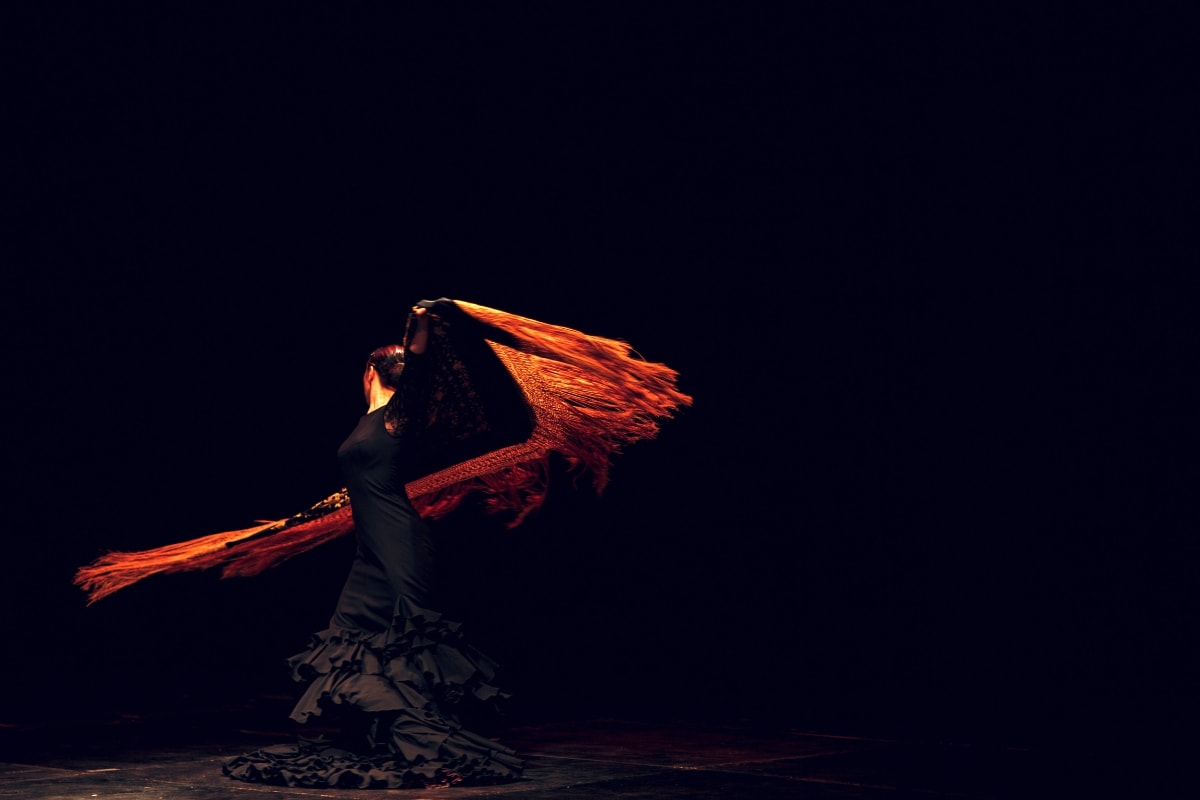
17. Palace of Cibeles (Palacio de Cibeles)
The Cibeles Palace is one of the most beautiful buildings in Madrid. The palace, built in 1919, was formerly the headquarters of the post office, today it is the seat of the city council.

The 8th floor restaurant overlooks the bustling Plaza de Cibeles right in front of the building. The lookout is open daily except Mondays from 10:30-14:00 and 16:00-19:30. Full admission is €3, with a discount for children, seniors and disabled persons. You can book your tickets here.
Plaza de Cibeles in front of the palace is dominated by the famous fountain, which depicts the goddess Cybele sitting on a chariot pulled by lions.
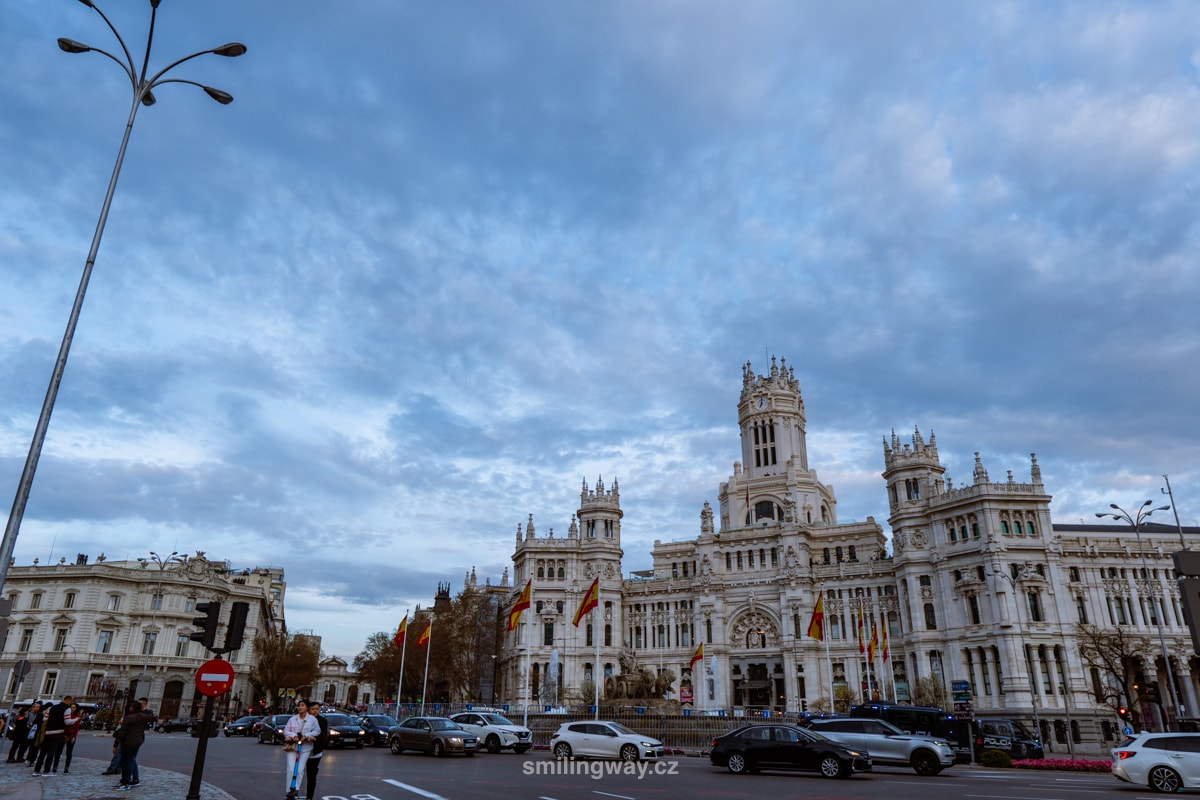
18. Churros
Churros are a traditional Spanish and Latin American delicacy that has become popular all over the world. You can think of churros as fried dough, golden on the outside, soft on the inside, that you dip in hot chocolate. An alternative is porras, which is very similar to churros, but the dough is thicker.
For great churros, head to the San Ginés Chocolatéria or Chocolateria 1902 in the city centre.
☞ Here are useful tips and travel guide to Madrid.
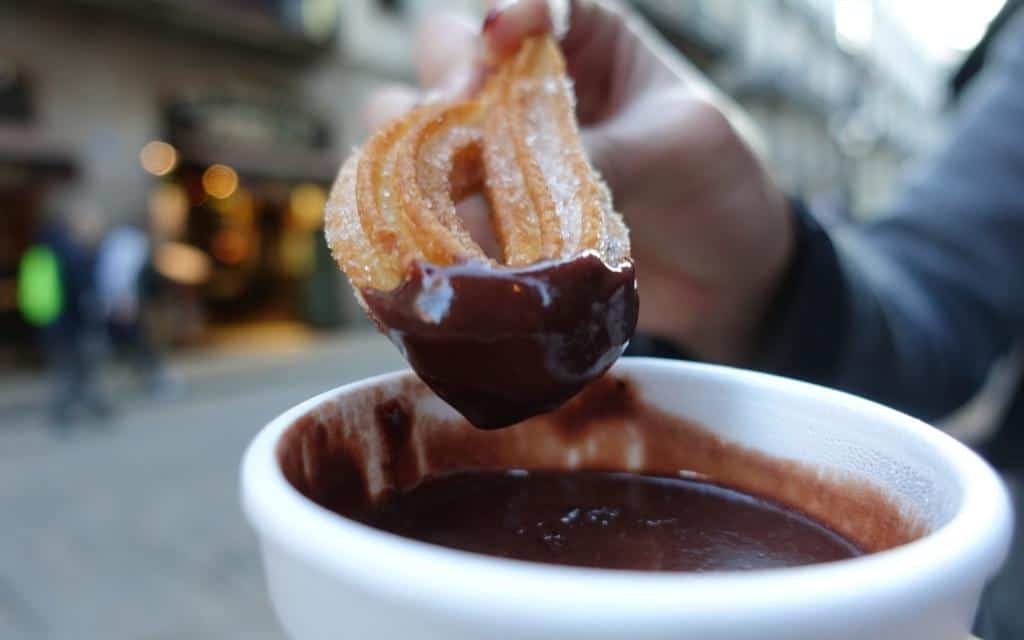
19. Santiago Bernabéu Stadium
A visit to the Santiago Bernabéu stadium is an experience not only for Real Madrid fans.
Real Madrid is a 15-time Champions League winner and the most successful team in European football. The stadium itself is one of the largest stadiums in the world, holding up to 80,000 people.
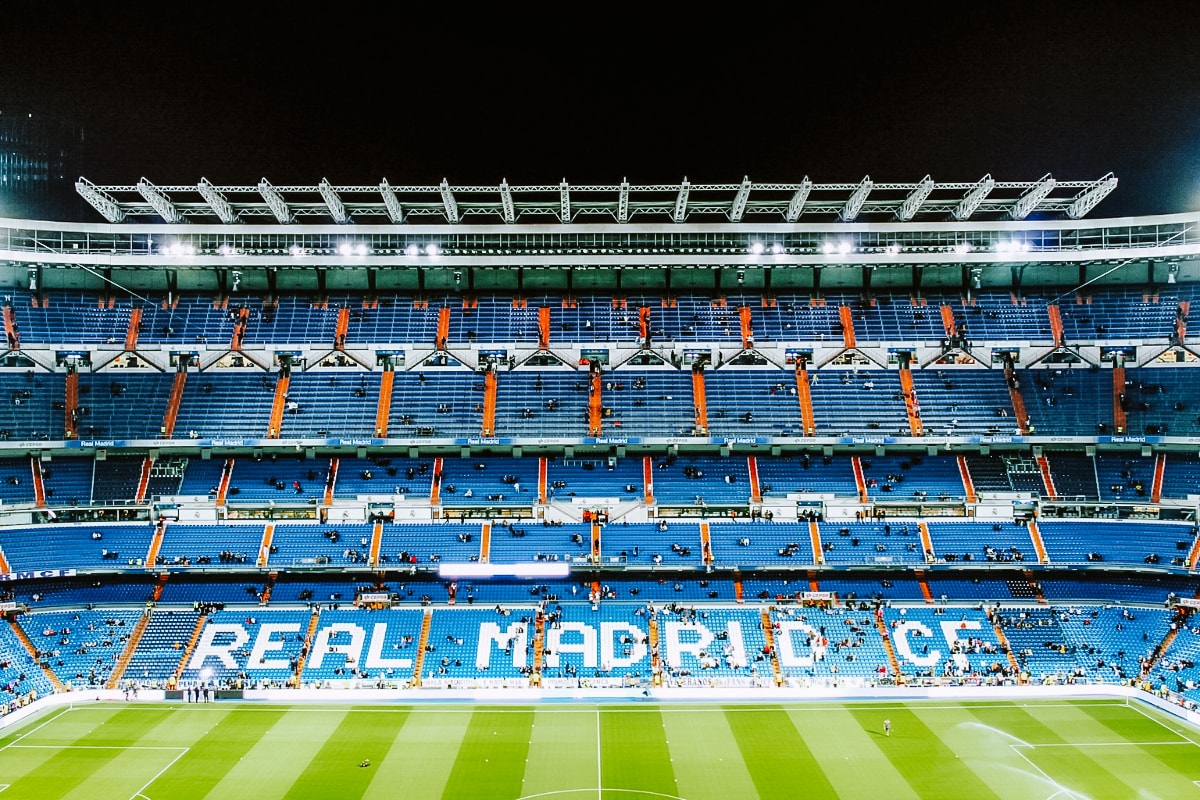
Santiago Bernabéu Stadium can be visited as part of Real Madrid match or on a tour, where you can visit the local museum and take a peek behind the scenes. Tickets for the stadium tour can be purchased in advance.
The stadium is located outside the centre of Madrid. You can get here in about half an hour by metro or bus. Santiago Bernabeu Metro Station is a few metres from the stadium.
20. Plaza de Toros de las Ventas
Plaza de Toros de Las Ventas, often abbreviated to Las Ventas, is the most famous and largest bullring in Spain. It is an important cultural and architectural monument that plays a key role in the Spanish bullfight known as the “corrida de toros”.
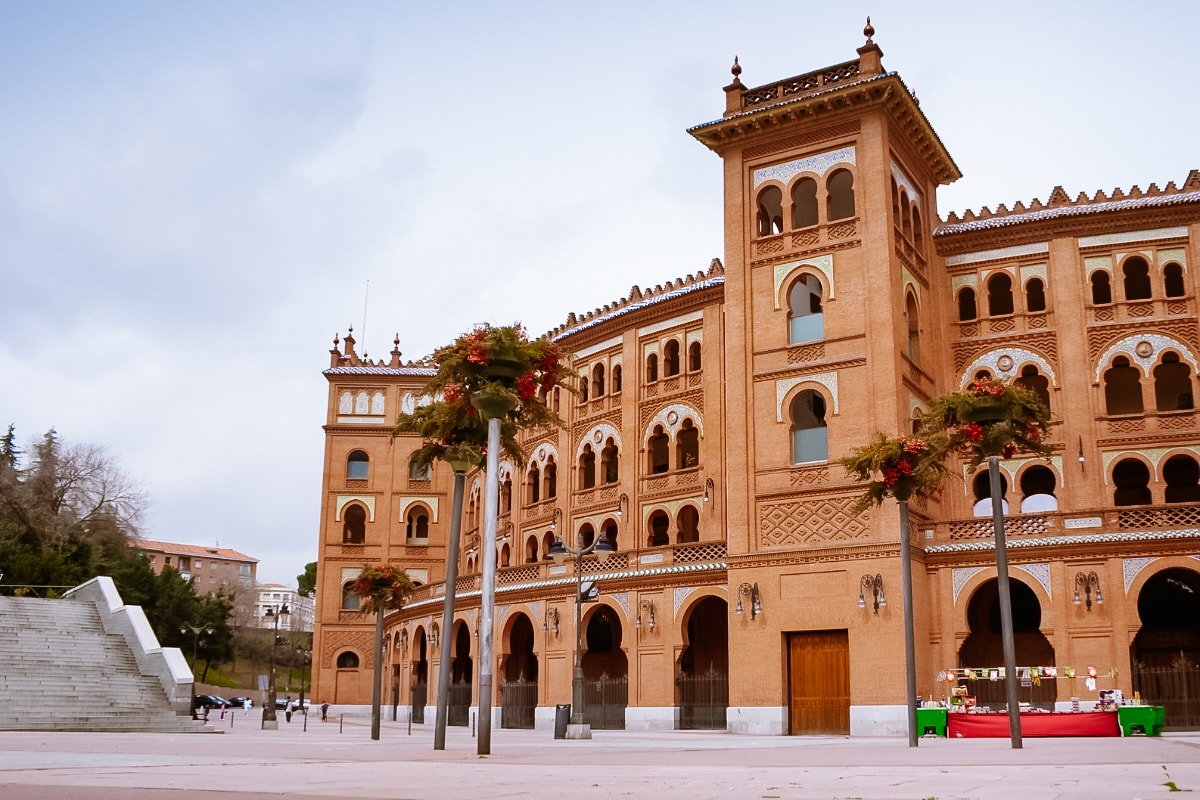
There are two ways to visit Plaza de Toros. The first option is a tour of the arena including the museum which is open to the public daily from 10:00-18:00.
The other option is a bullfight with a matador performance . Matches are mostly played on Sundays from March to mid-October and almost daily during the San Isidro Festival in May and early June.
Hotels in Madrid 😴
21. Lavapiés
Lavapiés is a lively multicultural neighbourhood located west of the Reina Sofía Museum and Atocha Station. The district is known for its ancient streets, which are home to communities from all over the world.
Here you can soak up the local atmosphere perfectly. In addition, there are a number of excellent restaurants and tabernas serving authentic cuisine from around the world. If you want to experience the authentic and diverse life of Madrid, don’t miss the Lavapiés district.
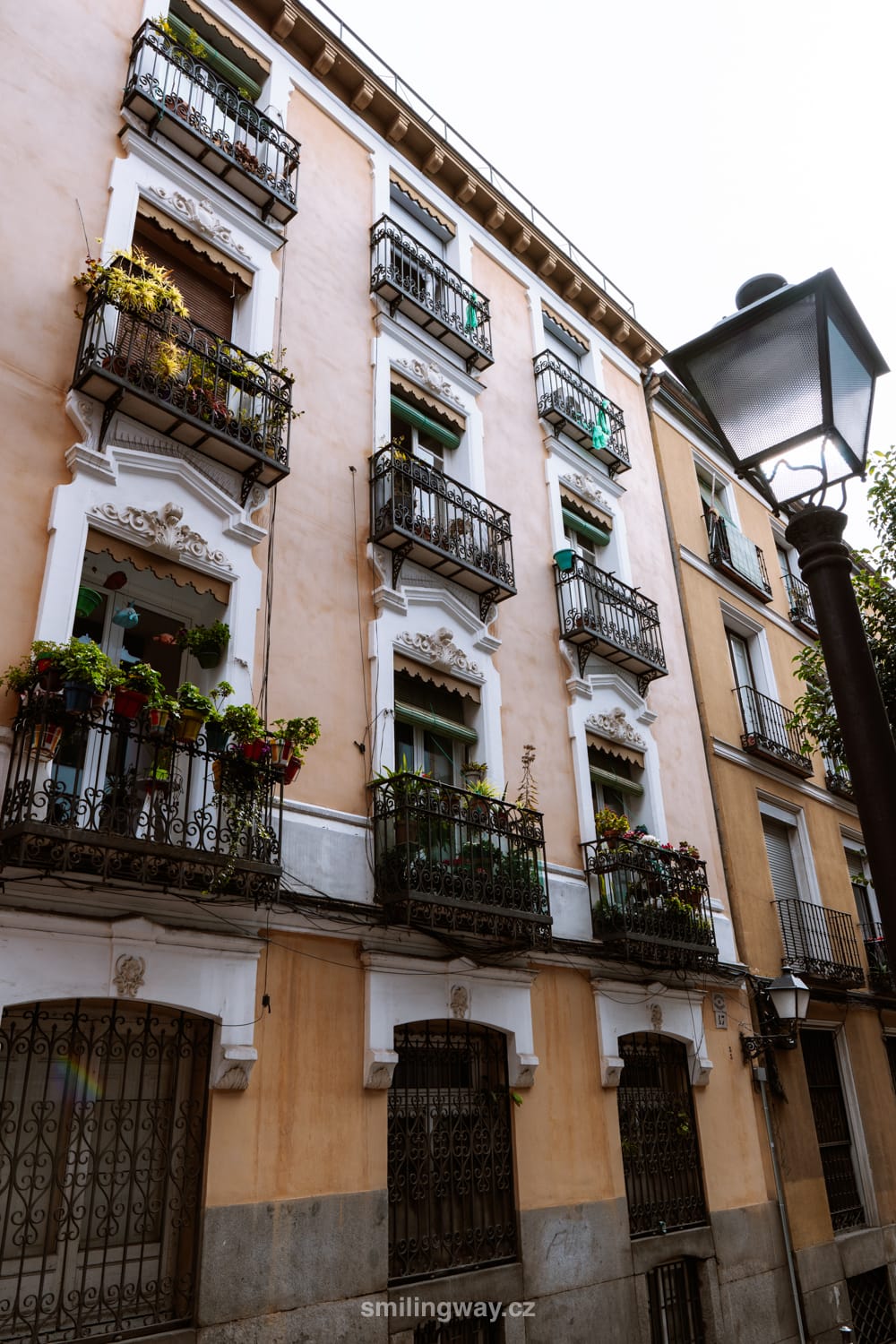
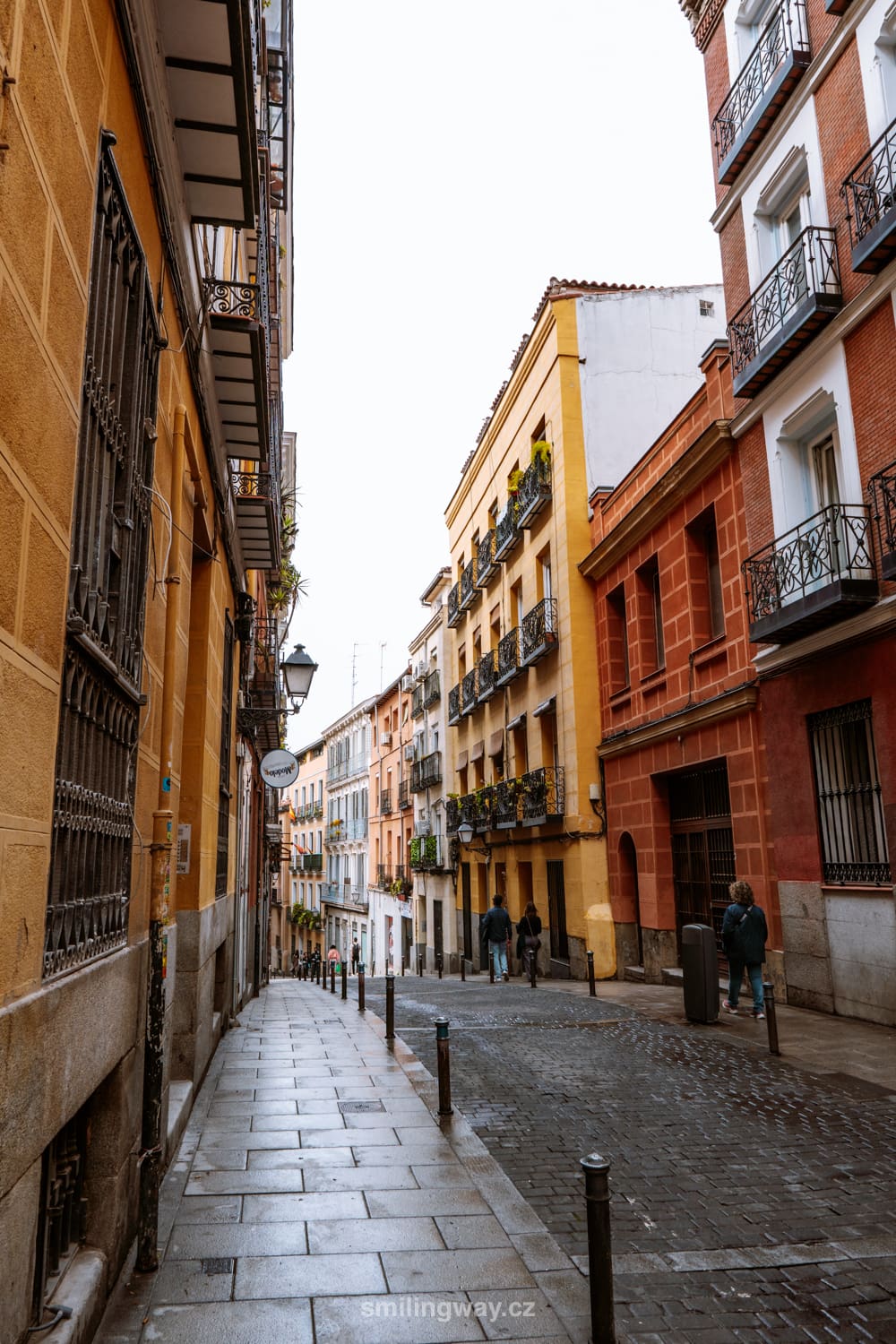
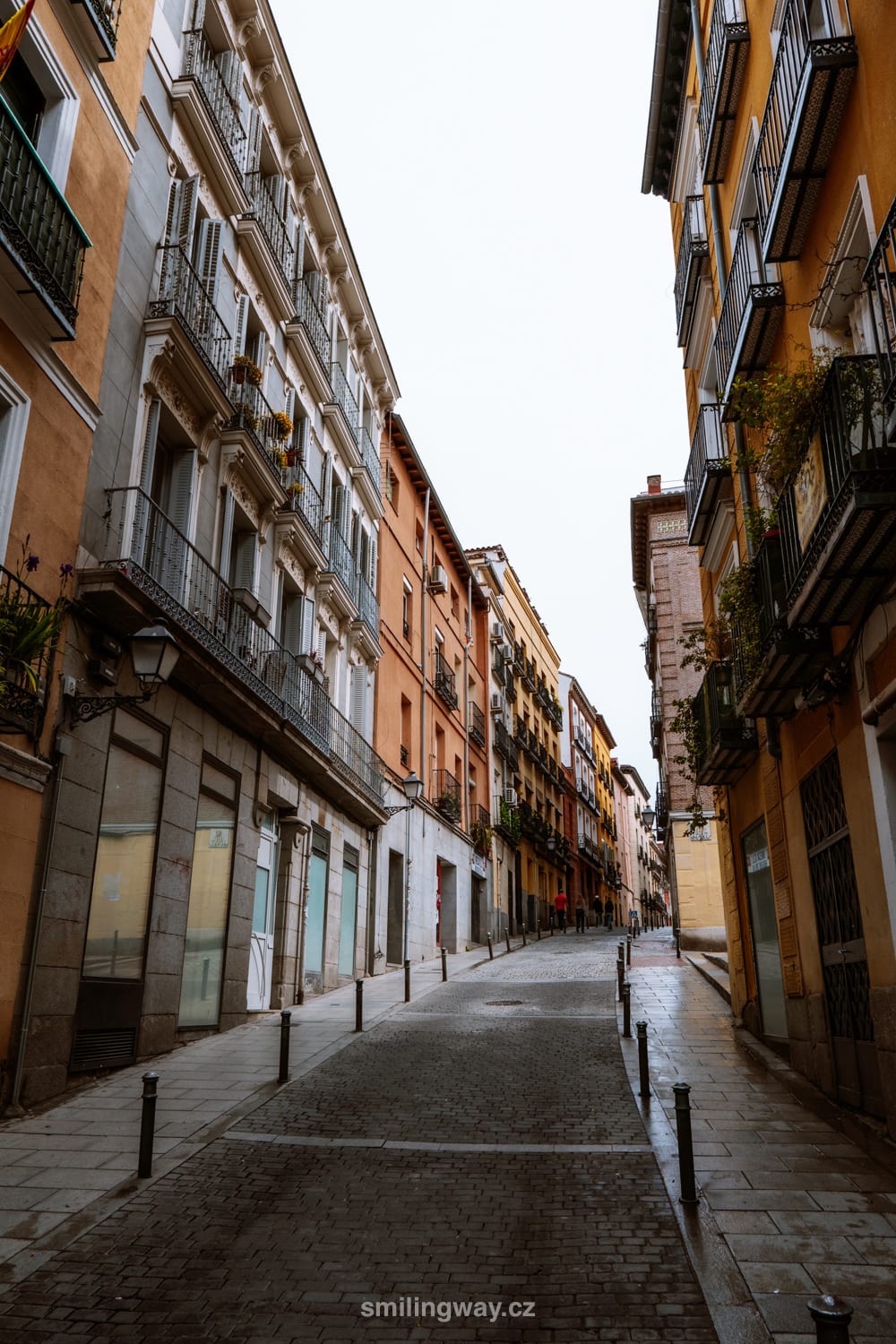
22. Park Madrid Rio
Looking for an escape from the hustle and bustle of the city? Madrid Rio Park is located along the Manzanares River, south of the city centre. It is a popular place for locals who come here to skate, bike or just walk and sit in the café. There is also a children’s playground and the modern Puente de Arganzuela bridge, which is beautifully lit up in the evening.
Overlooking the park, the Baroque Puente de Toledo Bridge, one of the most beautiful bridges in Madrid, spans the river.
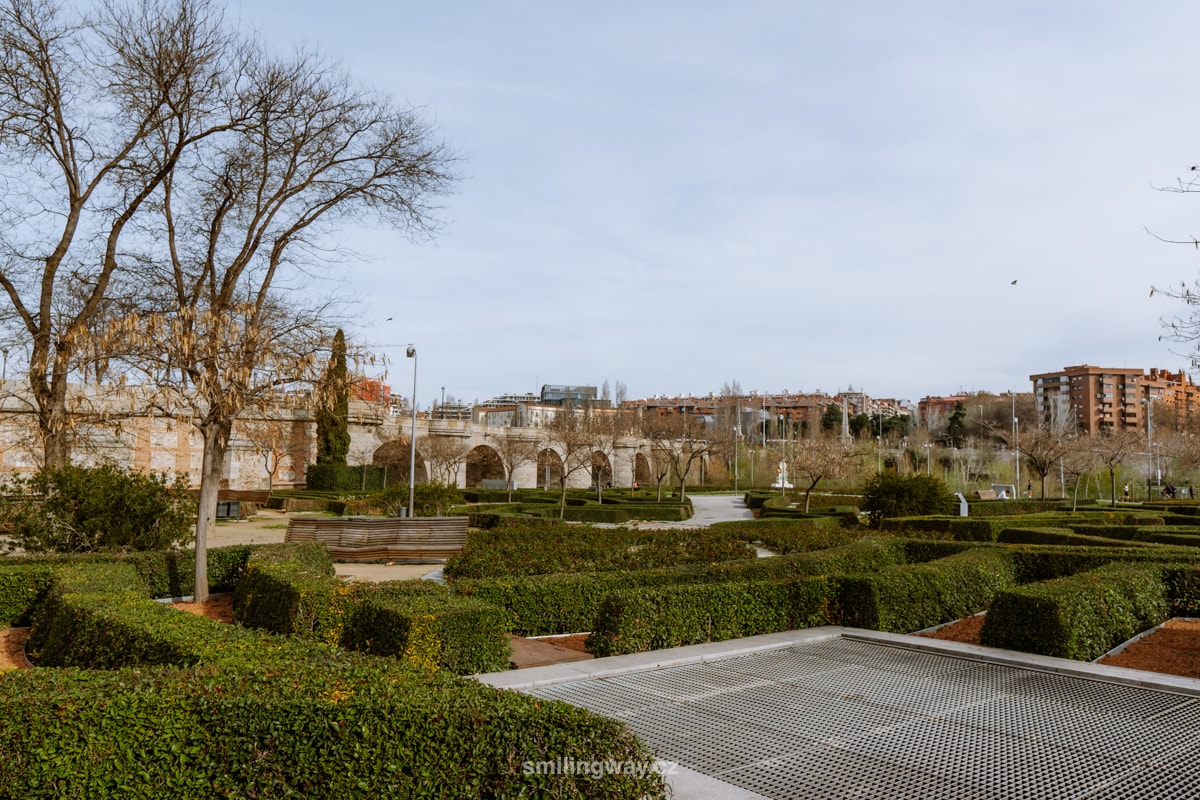
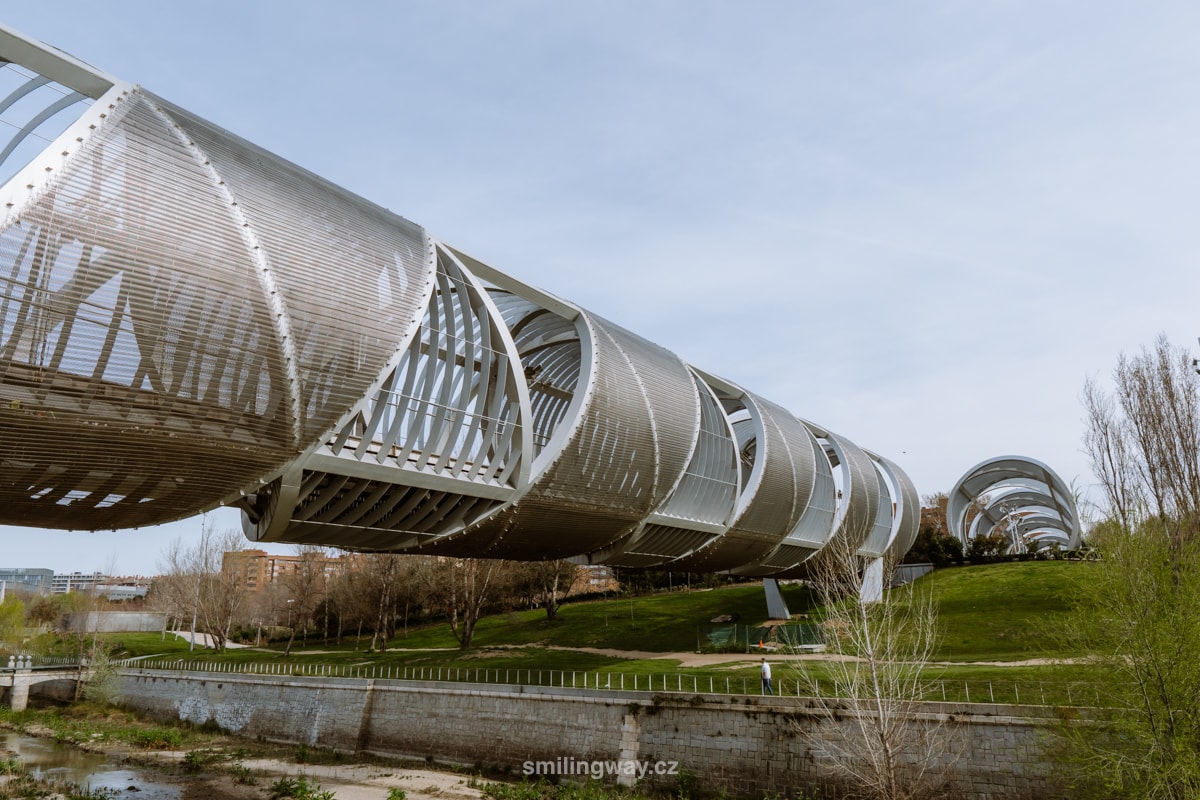
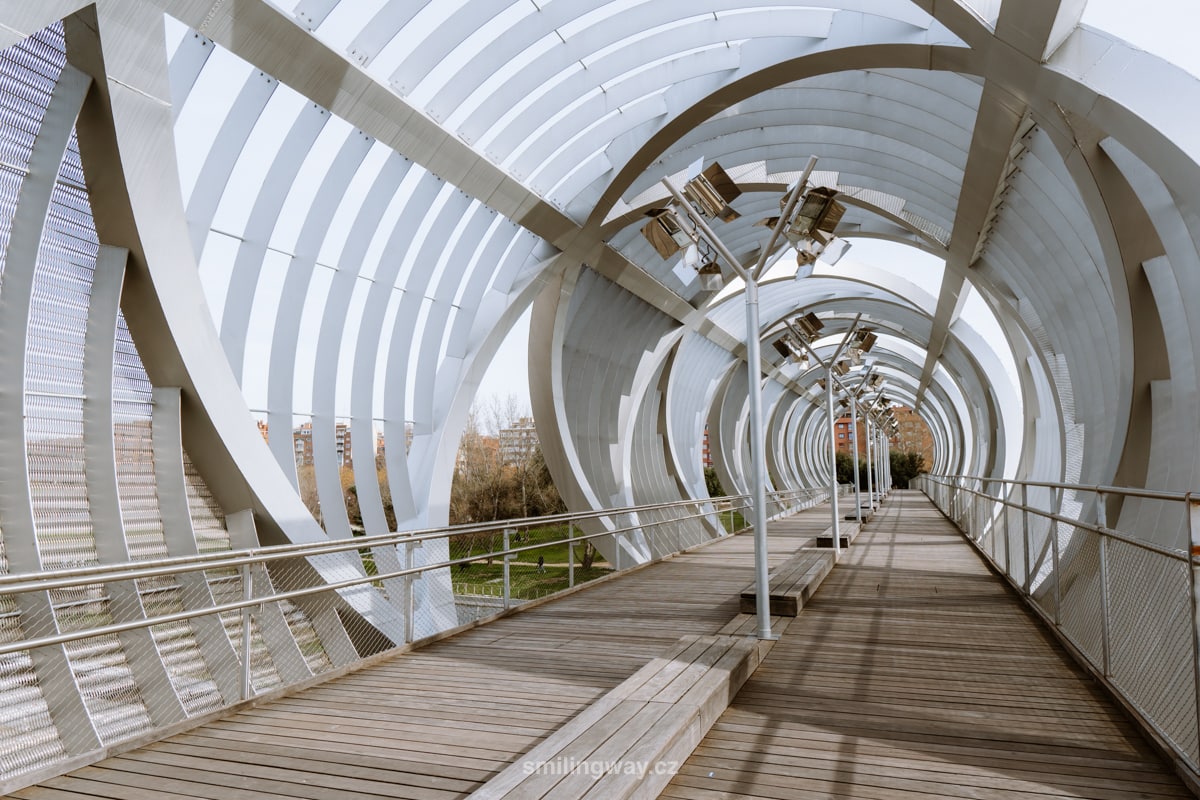
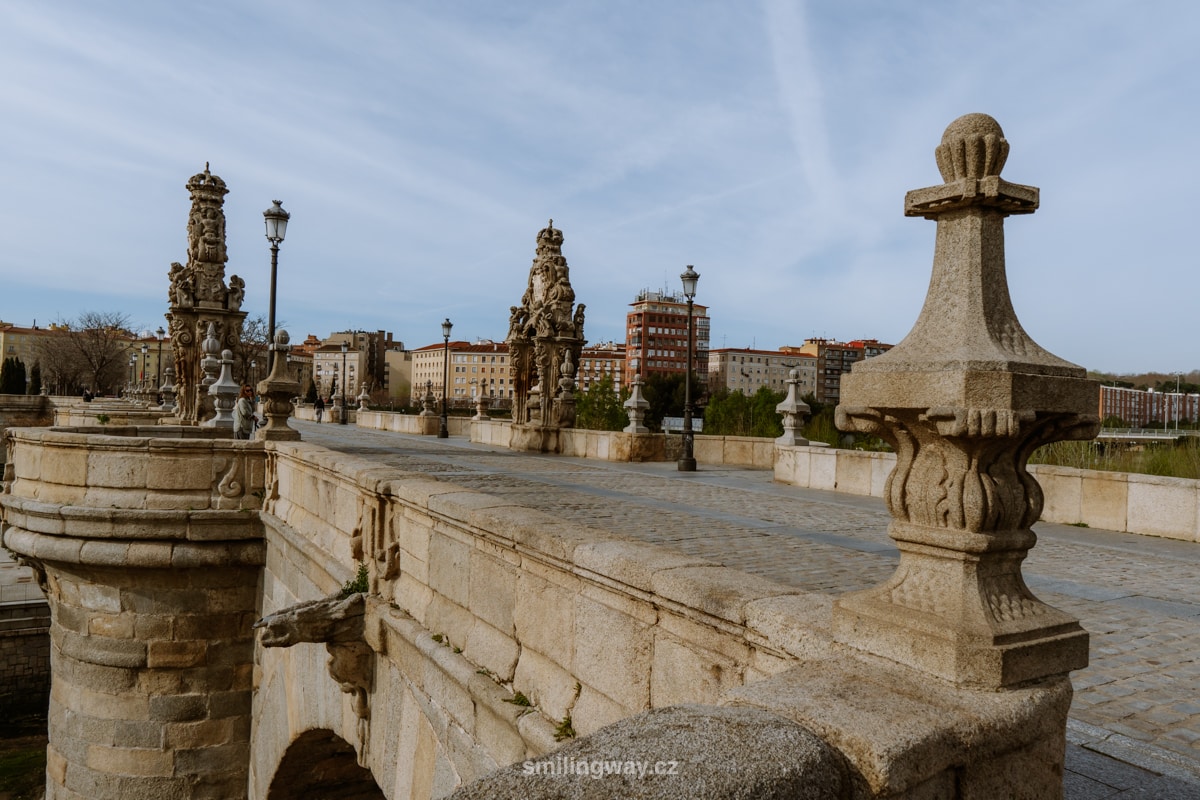
23. Atocha Station
Atocha Station is one of the most beautiful stations you’ve probably ever seen. There is a botanical garden right at the station, which will make your wait for the train more pleasant.
On the other hand, the botanical garden attracts a lot of pigeons, so you have to choose where you sit. It’s not the Royal Botanic Gardens, but it’s still a nice place for a short visit if you’re in the area.
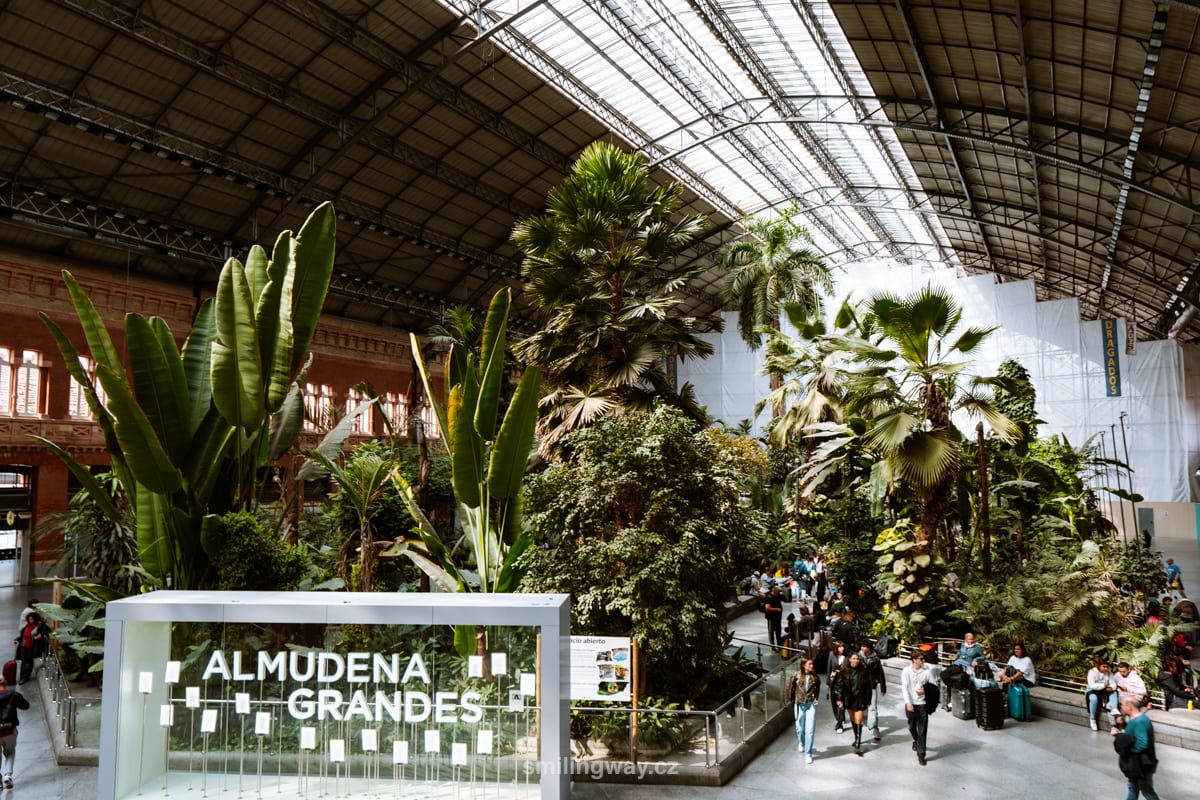
24. Plaza de Colón
Plaza de Colón is another important square in Madrid, dominated by towers covered in glass panels.
Other attractions include the white marble Columbus Monument on a 17-metre high pedestal, the Spanish flag 12 metres wide and 14 metres high, and the Garden of Discovery with its monument to the discovery of America, a concrete structure covered with reliefs and inscriptions.
☞ Read our detailed guide to transport in Madrid.
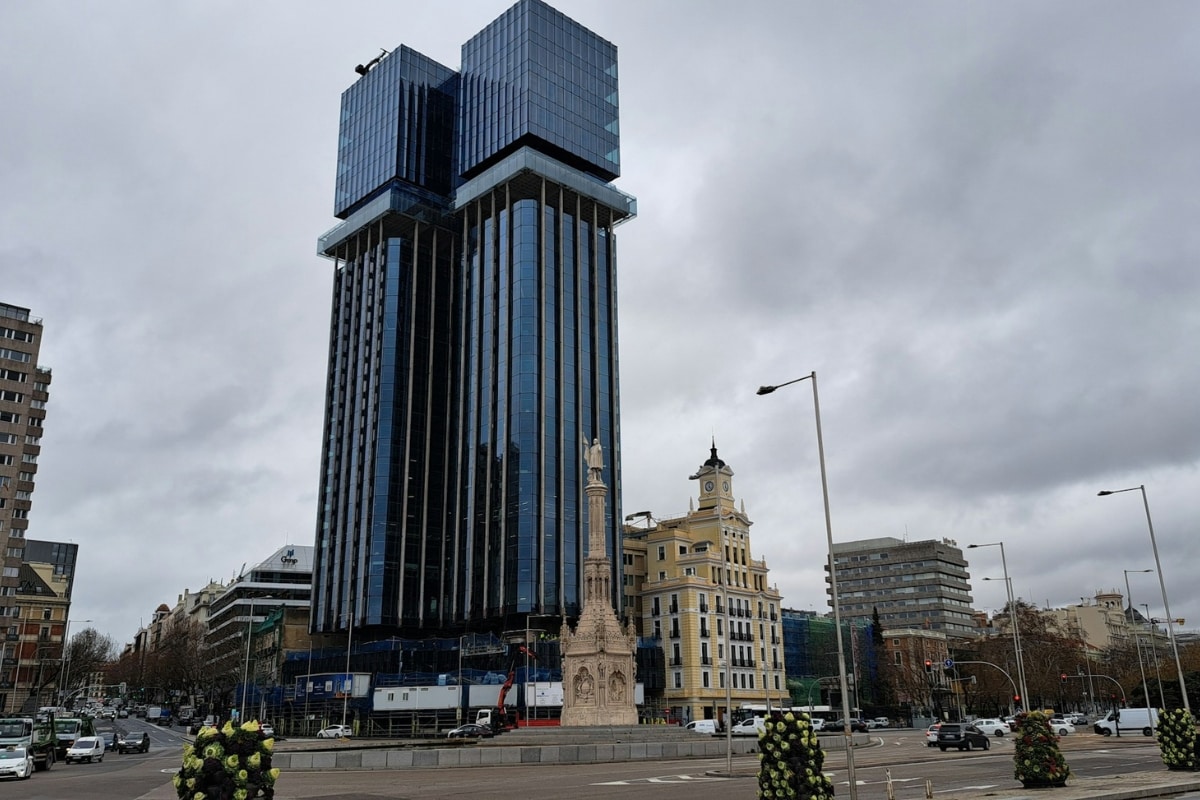
The National Archaeological Museum is located right next to the square and will give you a perfect introduction to the history of Spain and the Iberian Peninsula. Don’t miss the famous bust of the Iberian woman from the 5th century – La Dama de Elche or the prehistoric cave paintings in Altamira. Admission is only €3.
Where to stay in Madrid?
- Hotel RIU – Iconic city centre hotel with rooftop terrace, restaurant and excellent service
- Hostal Abadia Madrid – 3* guesthouse at a great price right in the centre, with air conditioning and private bathroom
- Ilunion Atrium – Modern hotel with swimming pool, restaurant and excellent access to the centre
- NYX Hotel Madrid by Leonardo Hotels – Stylish 4* hotel with swimming pool, restaurant and minutes from Real Madrid stadium
- Vértice Roomspace – Cheap, modern hotel on the outskirts of town with a restaurant and a short walk from the train station
Hotels in Madrid 😴
Things to do in Madrid – map
HOW TO USE THIS MAP: Above you will find a detailed map with tips on things to do in Madrid. Click at the top left of the map to see separate layers with highlighted locations. You can hide and show the different layers or click on the icons on the map to see the names of the places I mention in the Madrid travel guide. If you want to save the map, star it. For a larger version, click on the icon in the upper right corner.
How to enjoy Madrid
- Many of Madrid’s sights and attractions are close together and easily accessible on foot.
- Visit the museums of the Golden Triangle of Art and the Royal Palace as early in the morning as possible, when the crowds are not too large. Where possible, book tickets in advance.
- Many monuments and museums offer times when you can get in for free. Information can be found above for each location. However, at these times, you have to expect long queues and crowds inside,
- Scattered around Madrid, you’ll find small metal toilet cubicles, which are often available for free or for a small fee (usually 20 cents).
- Tapas, paella, churros with chocolate and jamón ibérico are just some of the delicacies you shouldn’t miss in Madrid.
- Madrid is famous for its tapas bars, where you can enjoy a variety of small dishes in a relaxed atmosphere.
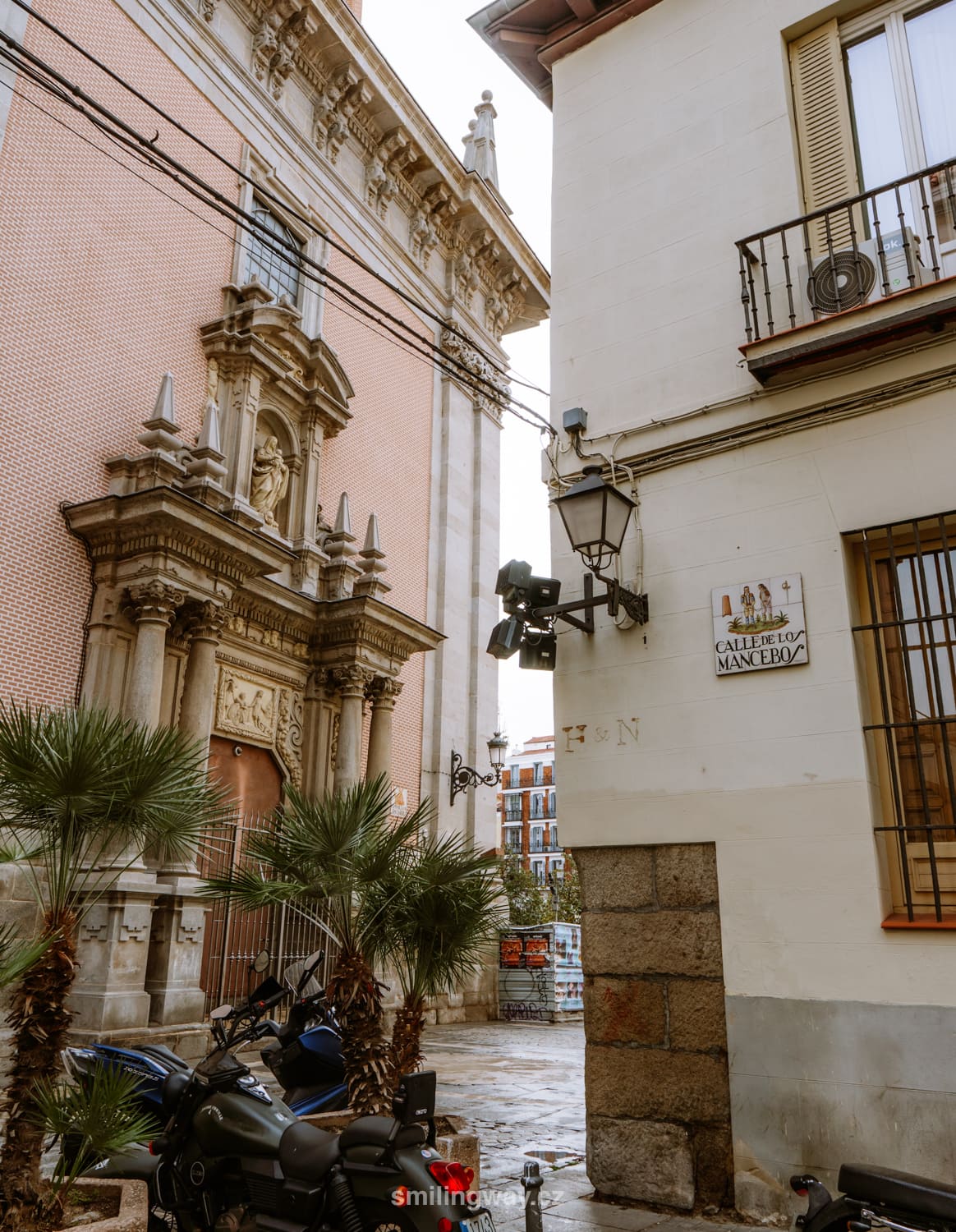
Plan your trip quickly and easily. If you buy something through our links, we get a small commission. You pay nothing extra. Thank you!
These were our picks for the best places to visit and things to do in Madrid. Do you have a question? We’ll be happy to answer it in the comments below. Have a safe journey!
More information about Spain
MADRID: Get inspired by our itinerary for 3 days in Madrid. Here is a Madrid travel guide. Read our detailed guide to transport in Madrid.
BARCELONA: Check out tips on things to do in Barcelona (entrance fees, opening hours, photos, map) or plan your trip with 3 days Barcelona itinerary. If you have more time, here is an itinerary for 4 days in Barcelona.
SPANISH CITIES: Valencia is another beautiful city in Spain. Granada is a historical gem, home to the world-famous Alhambra Palace. Seville will captivate you with its beautiful architecture and the Alcázar Fortress. Malaga has it all – rich history and long sandy beaches.
SPAIN: In our list of the most beautiful places to visit in Spain, we give you tips on what to see in Spain.
SPAIN: In our list of the most beautiful places to visit in Spain, we give you tips on what to see in Spain.
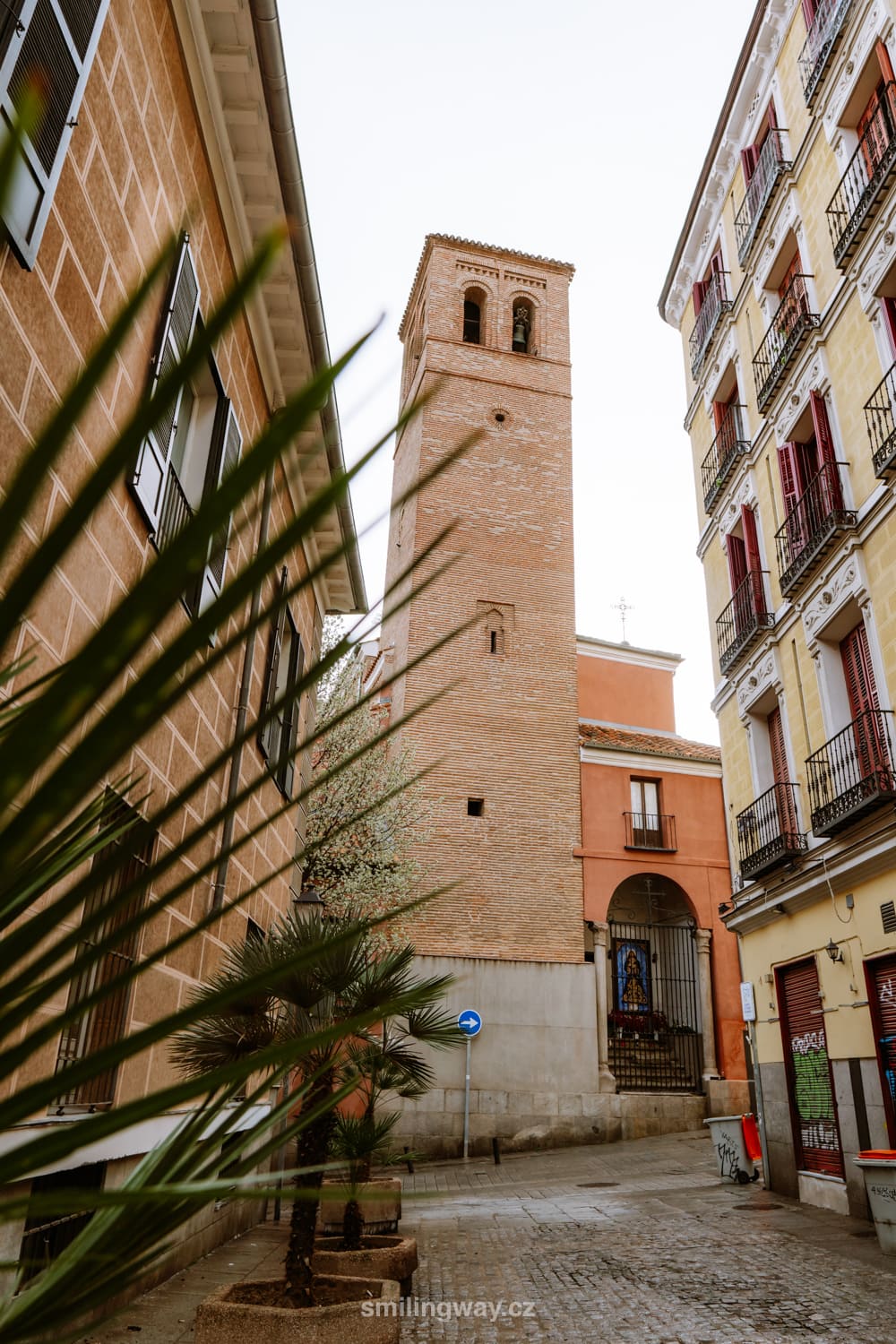
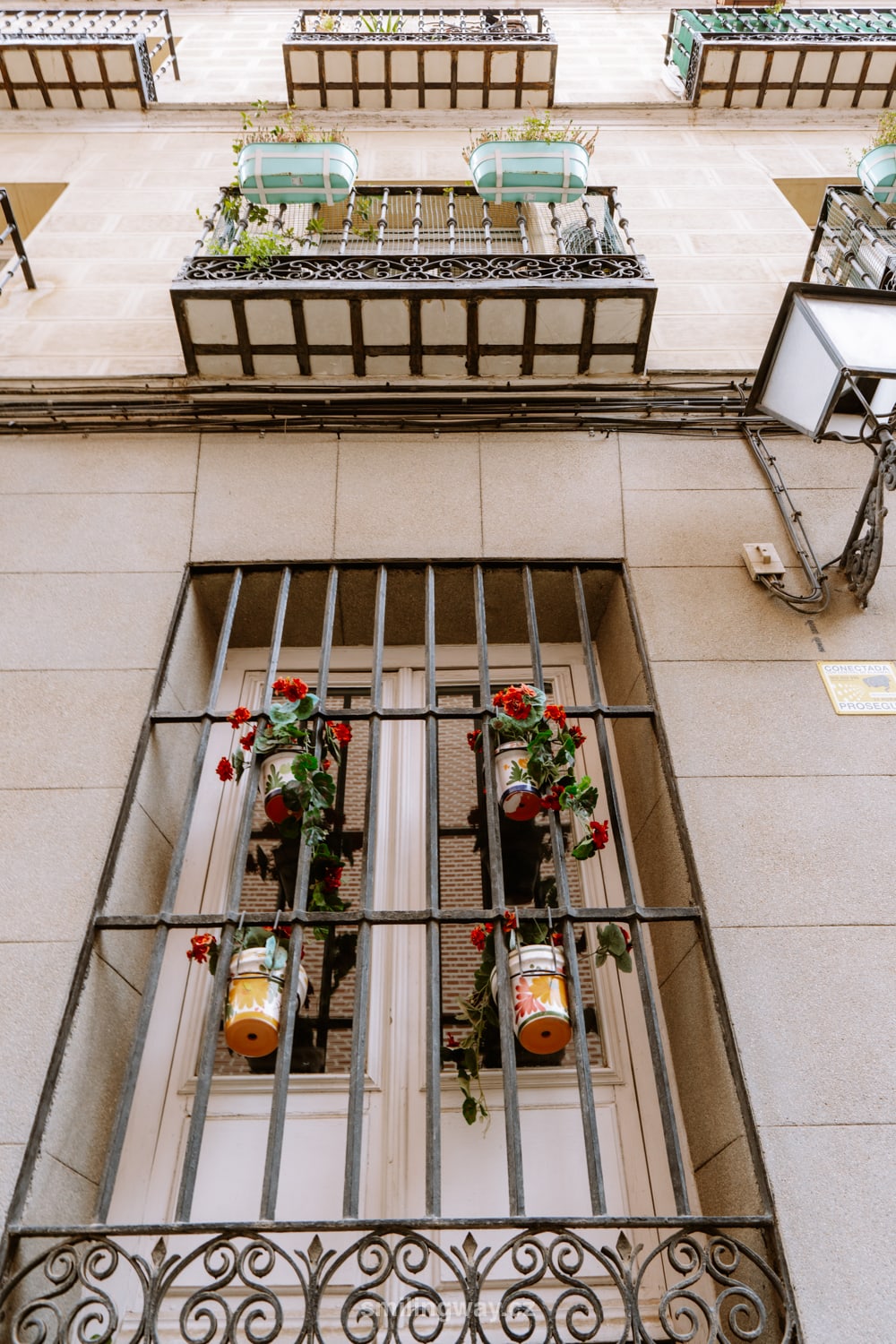
Summary: Things to do in Madrid, Spain
Visit world-famous museums (Prado, Thyssen-Bornemisza, Museo Reina Sofía), explore the Royal Park full of attractions, go for tapas at La Latina, admire the splendour of the Royal Palace or the interior of the Cathedral of Our Lady of Almudena.
There are plenty of sights and attractions to see in Madrid. You can read about all the interesting places including practical information in the article.
To avoid queues on site, it’s best to make reservations for the Museo del Prado, Museo Reina Sofía and Palacio Real de Madrid.
From the dome of the Cathedral of Our Lady of Almudena you can enjoy views of the Royal Palace and Madrid. The Palacio de Cibeles is one of the most beautiful buildings in Madrid, with views of the surrounding area. The Circulo Bellas Artes skyscraper is the place to experience the iconic view of Gran Vía.
